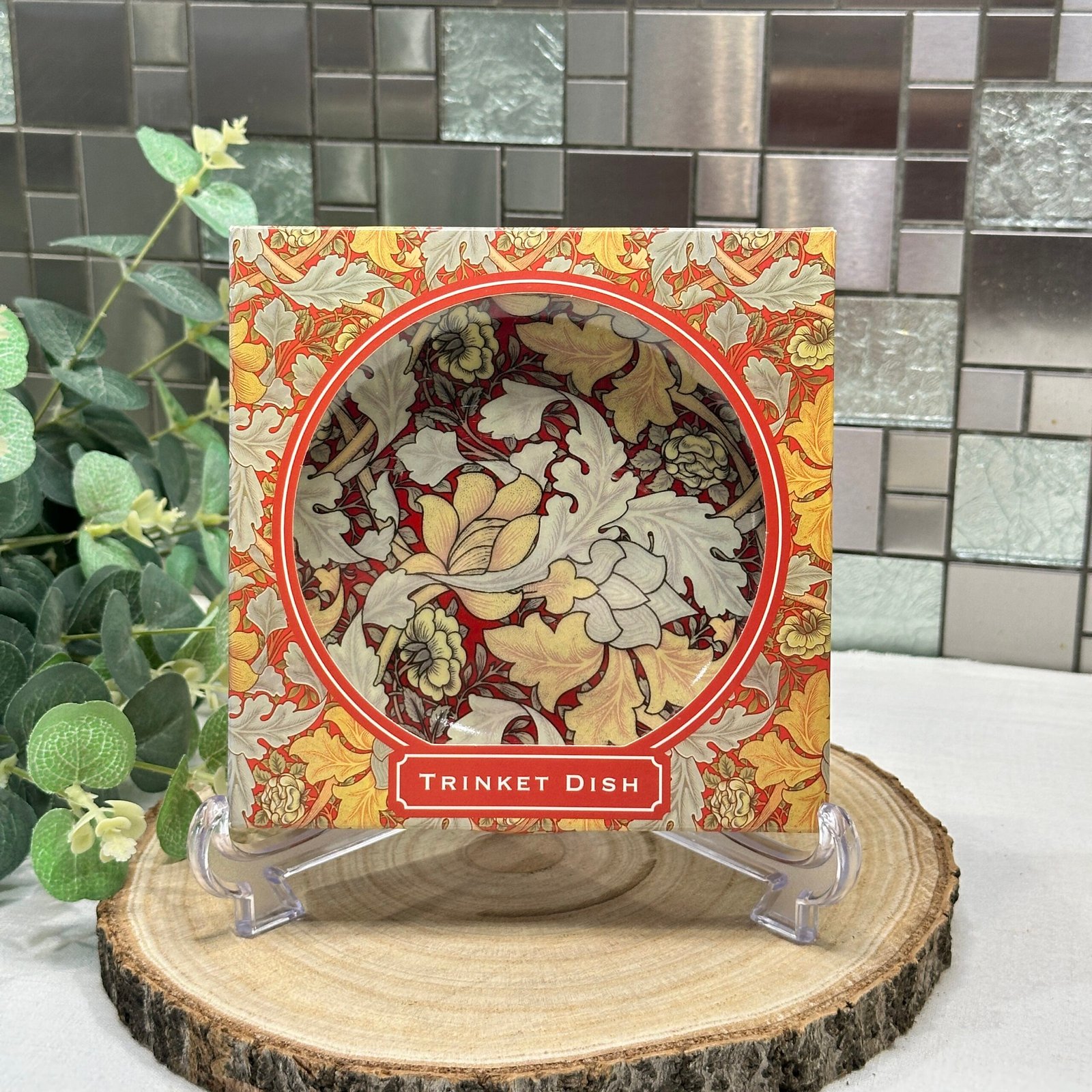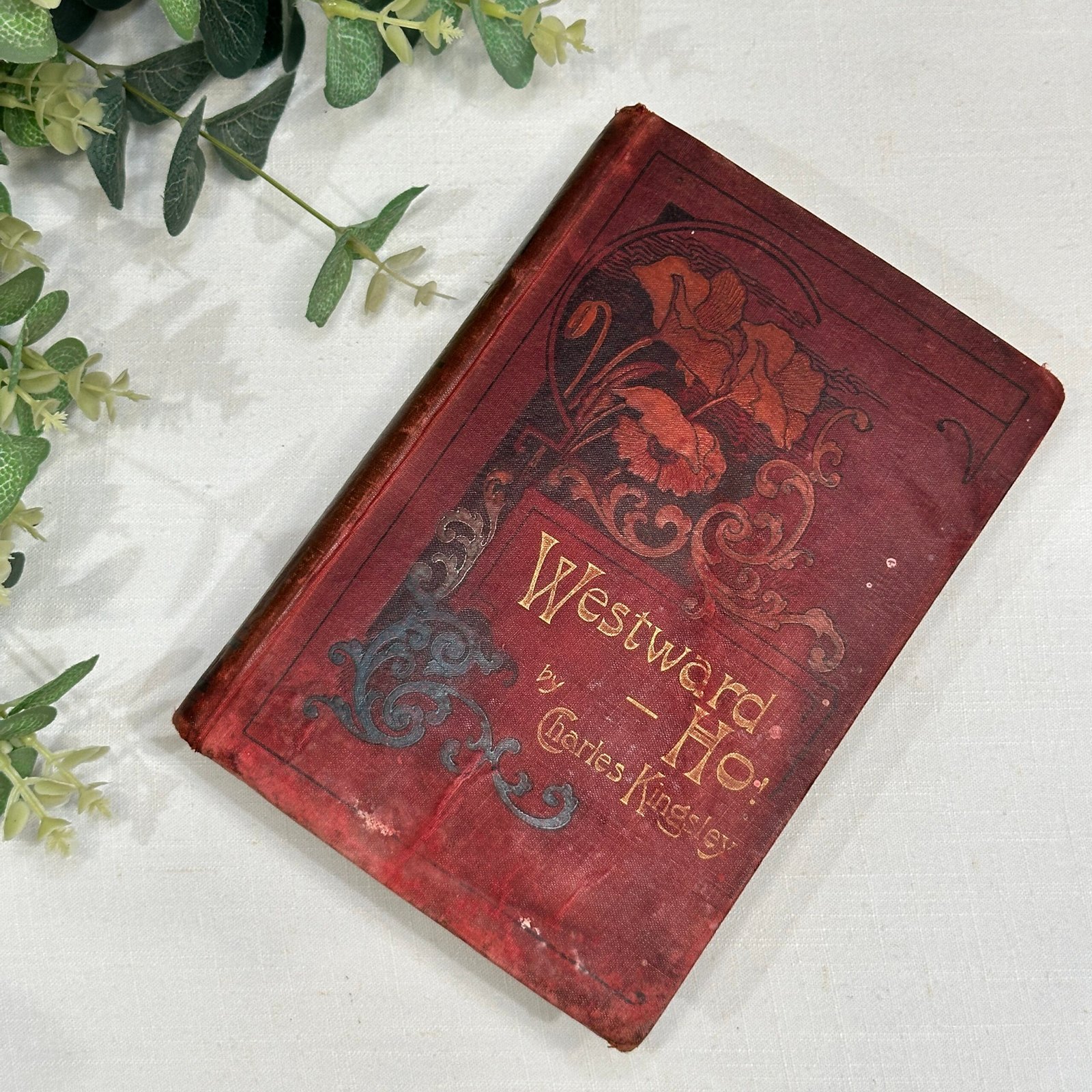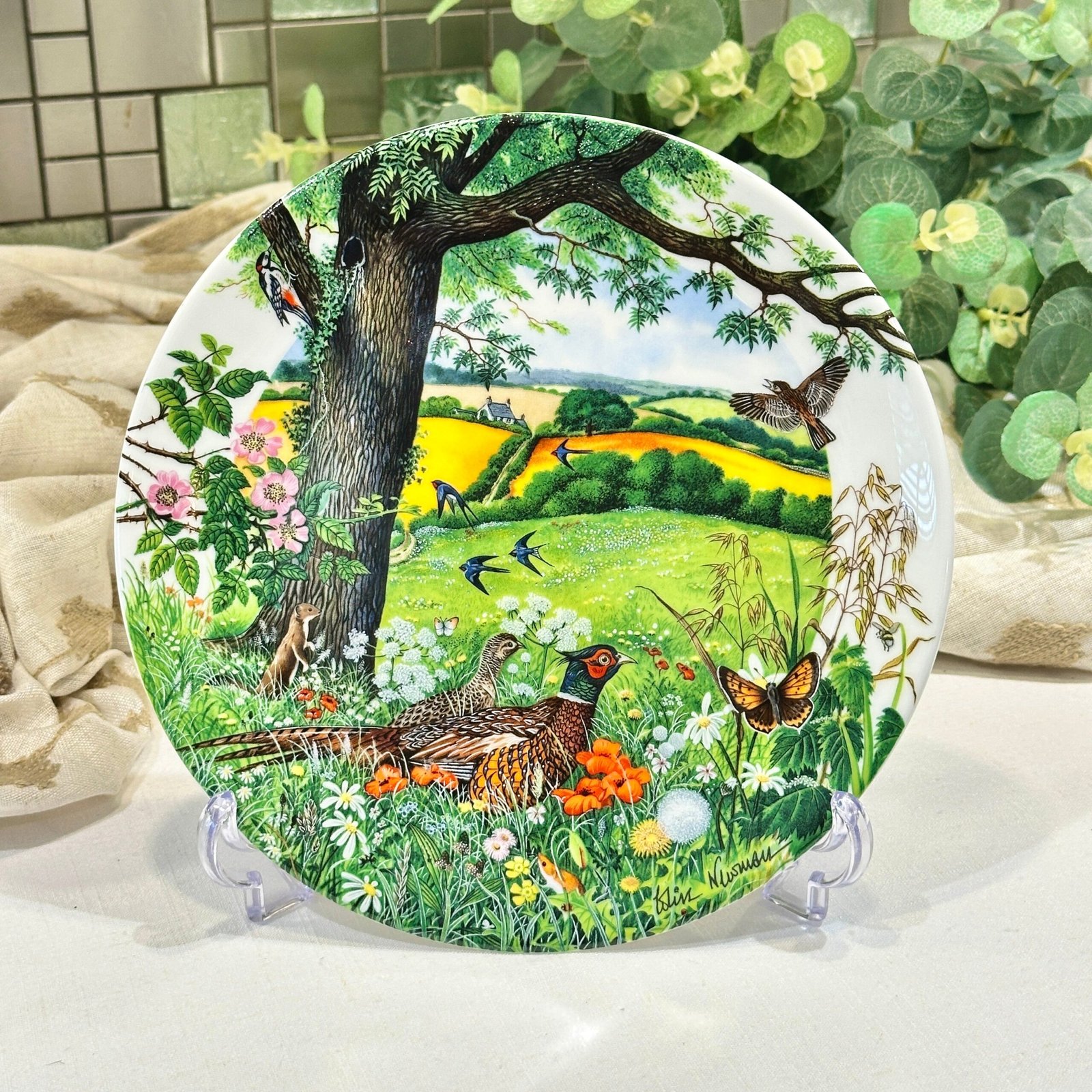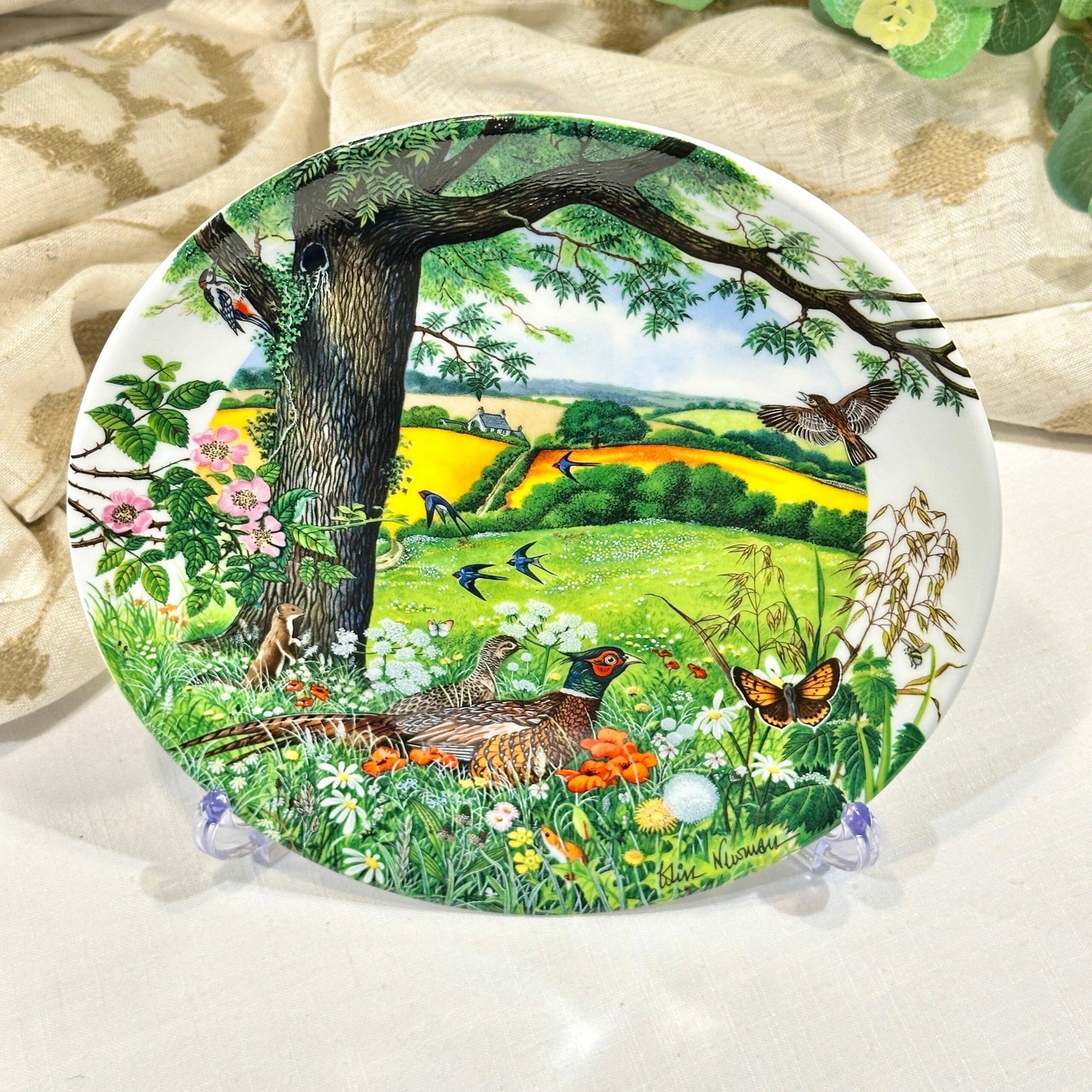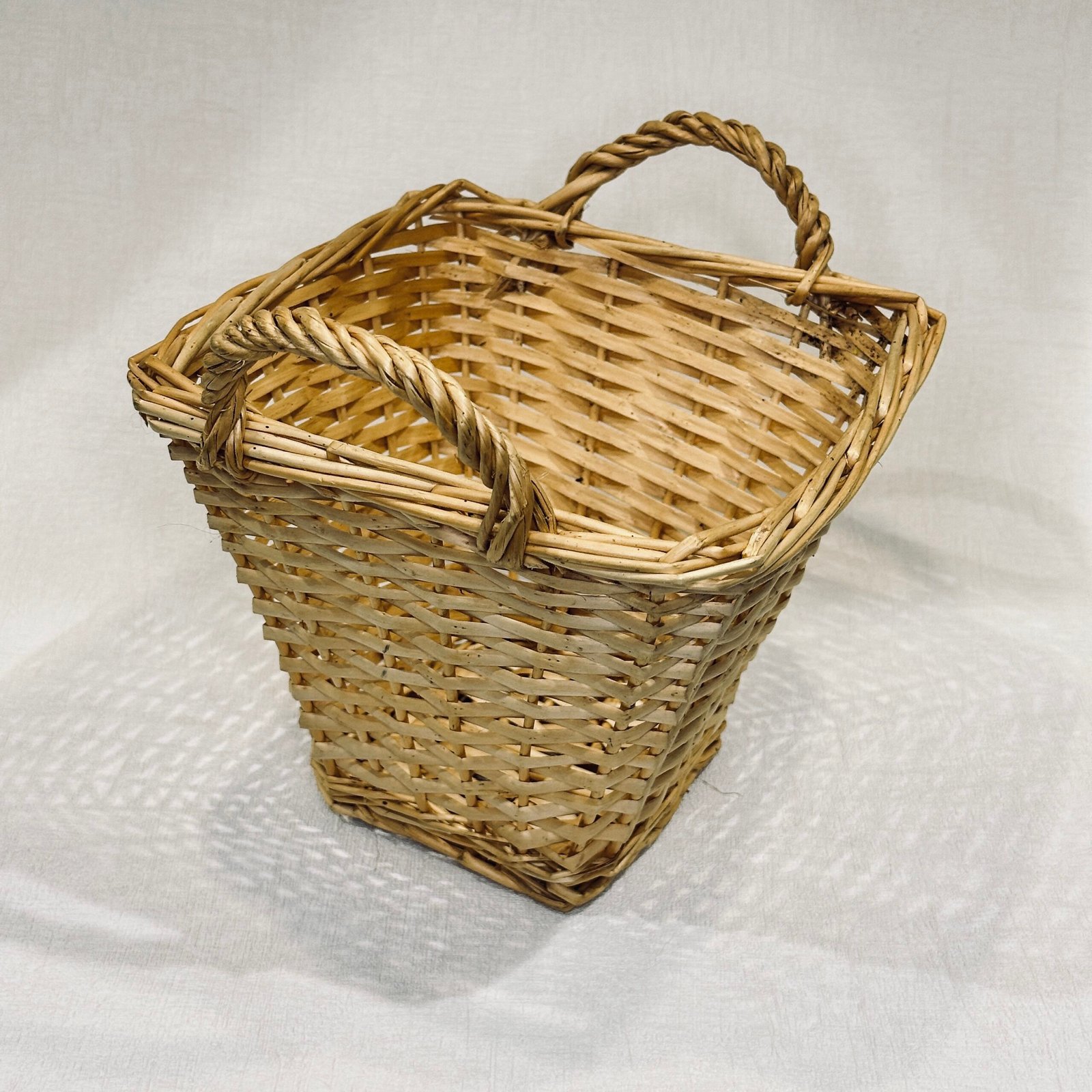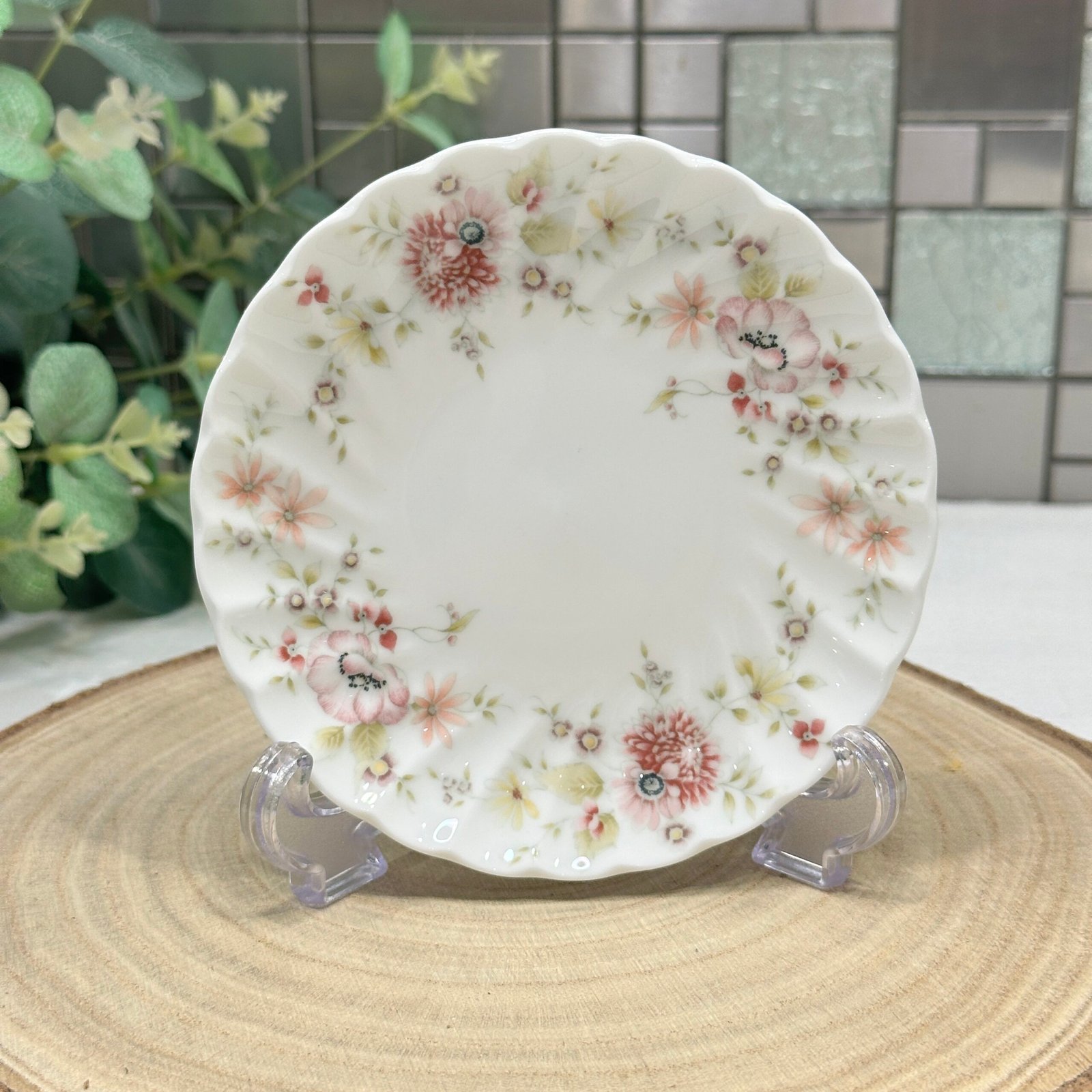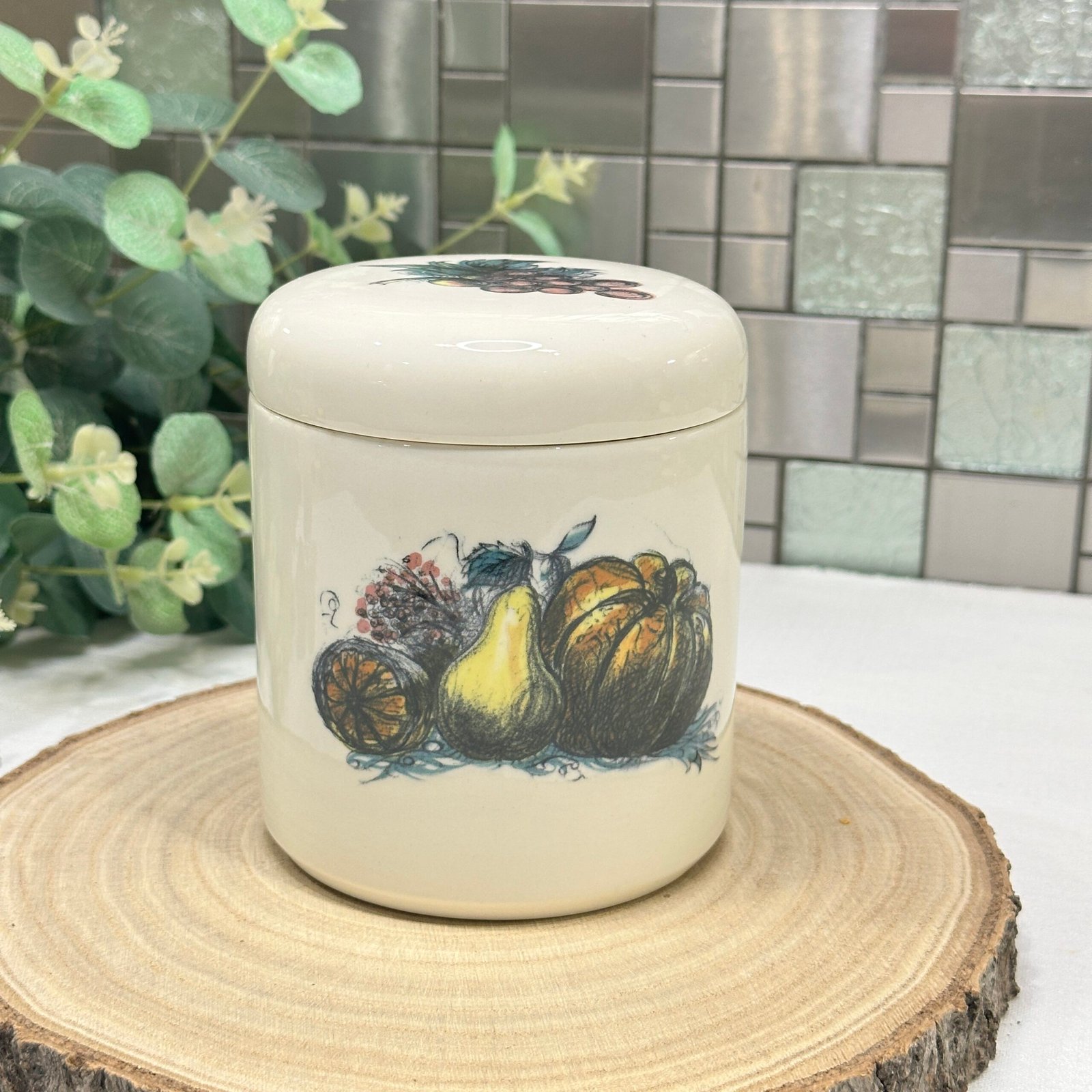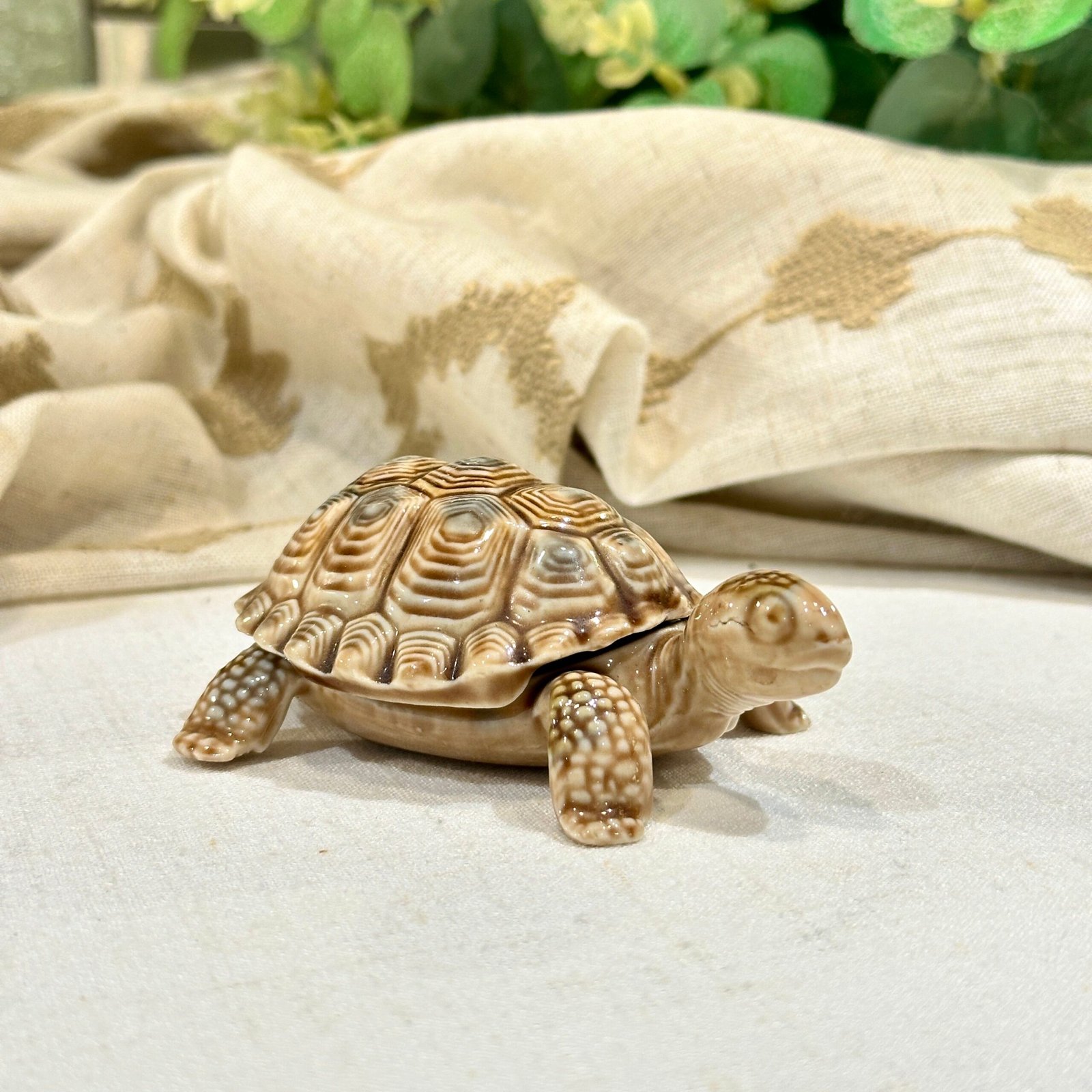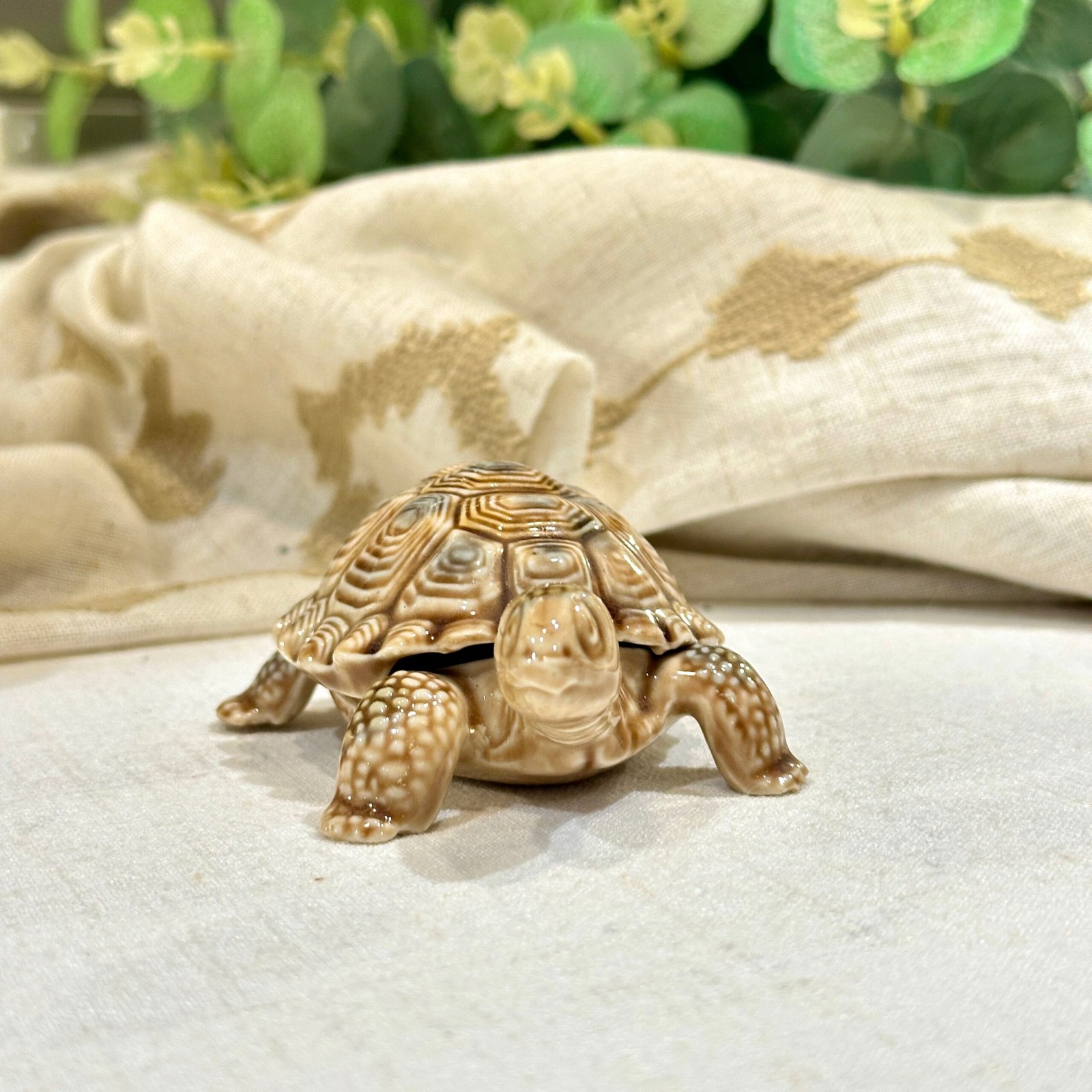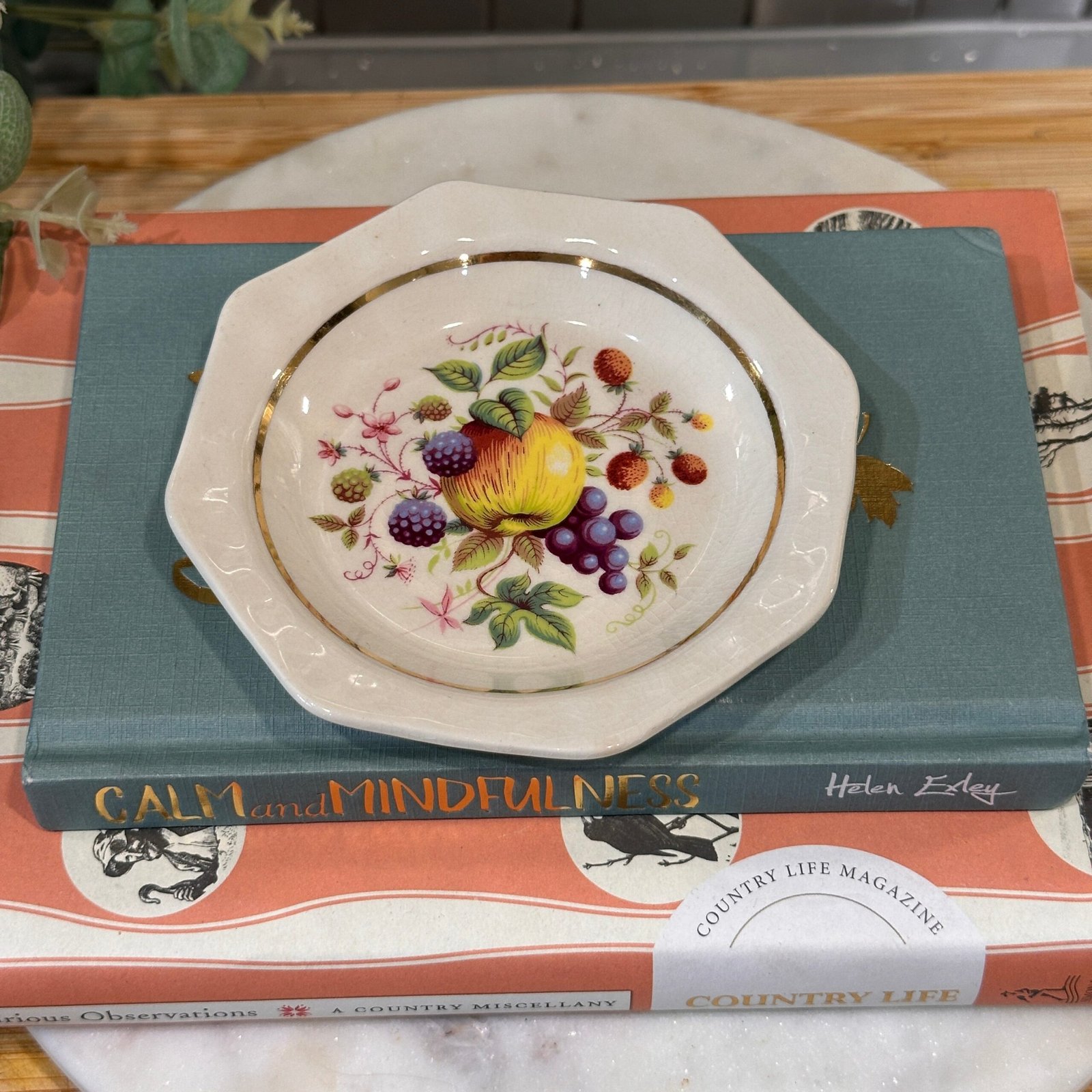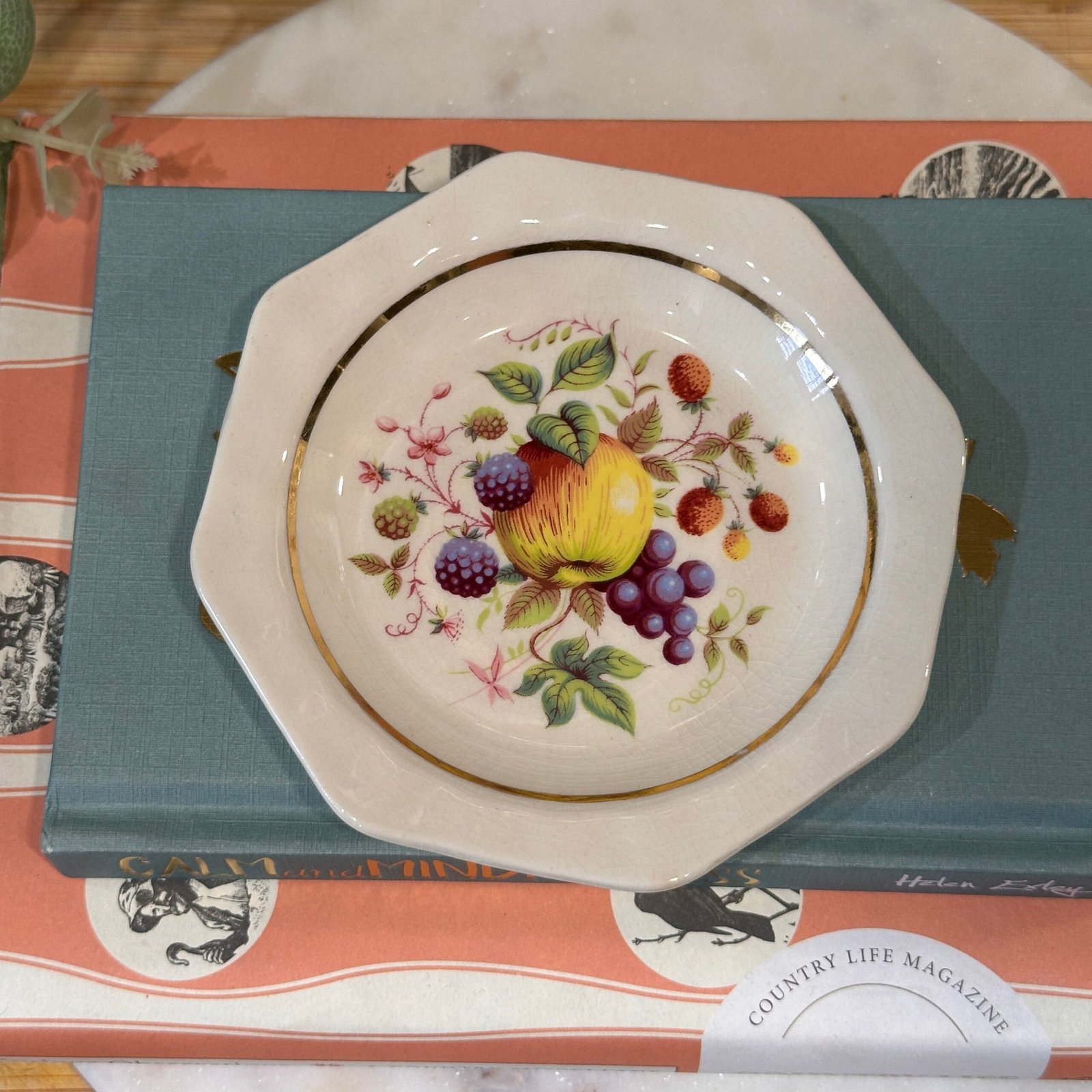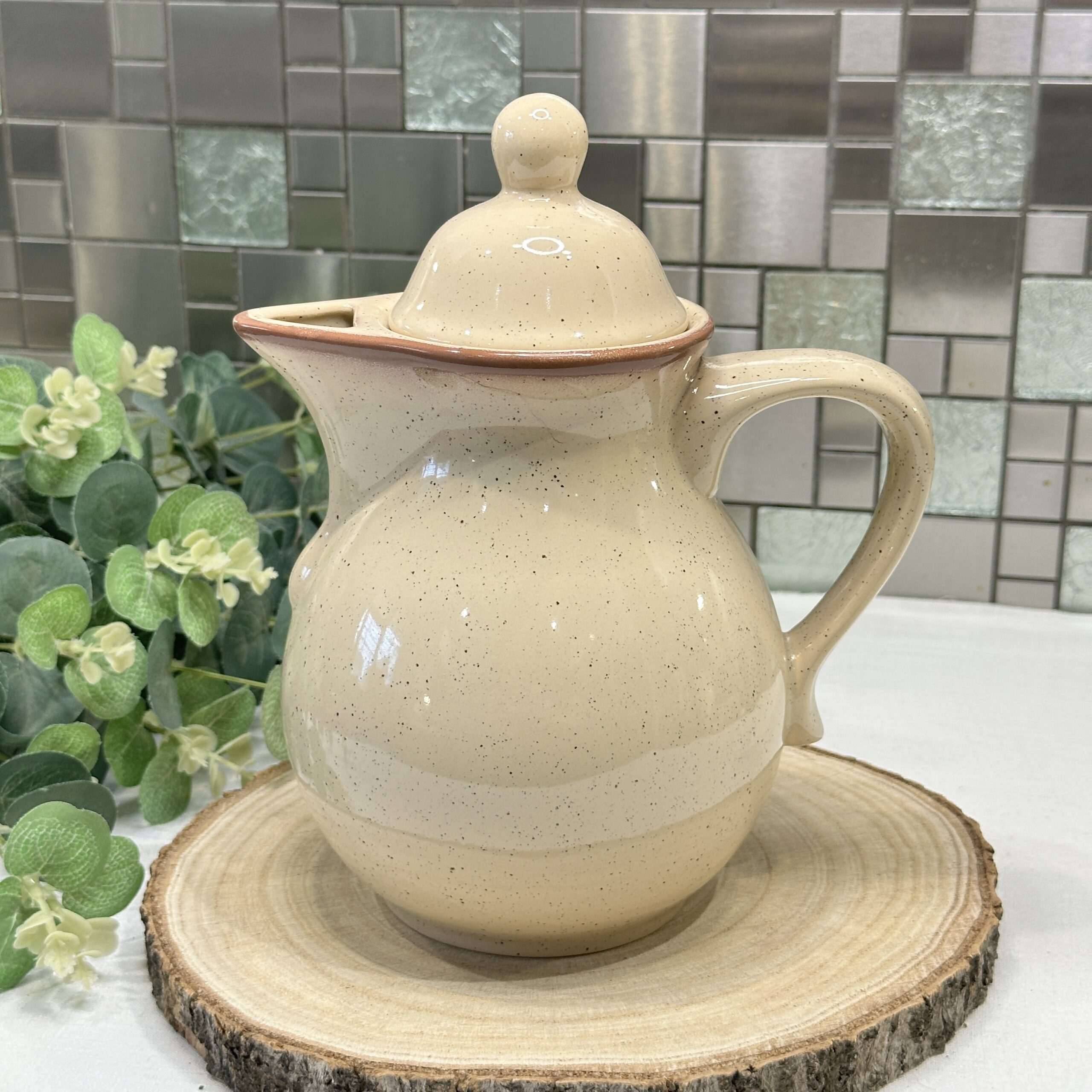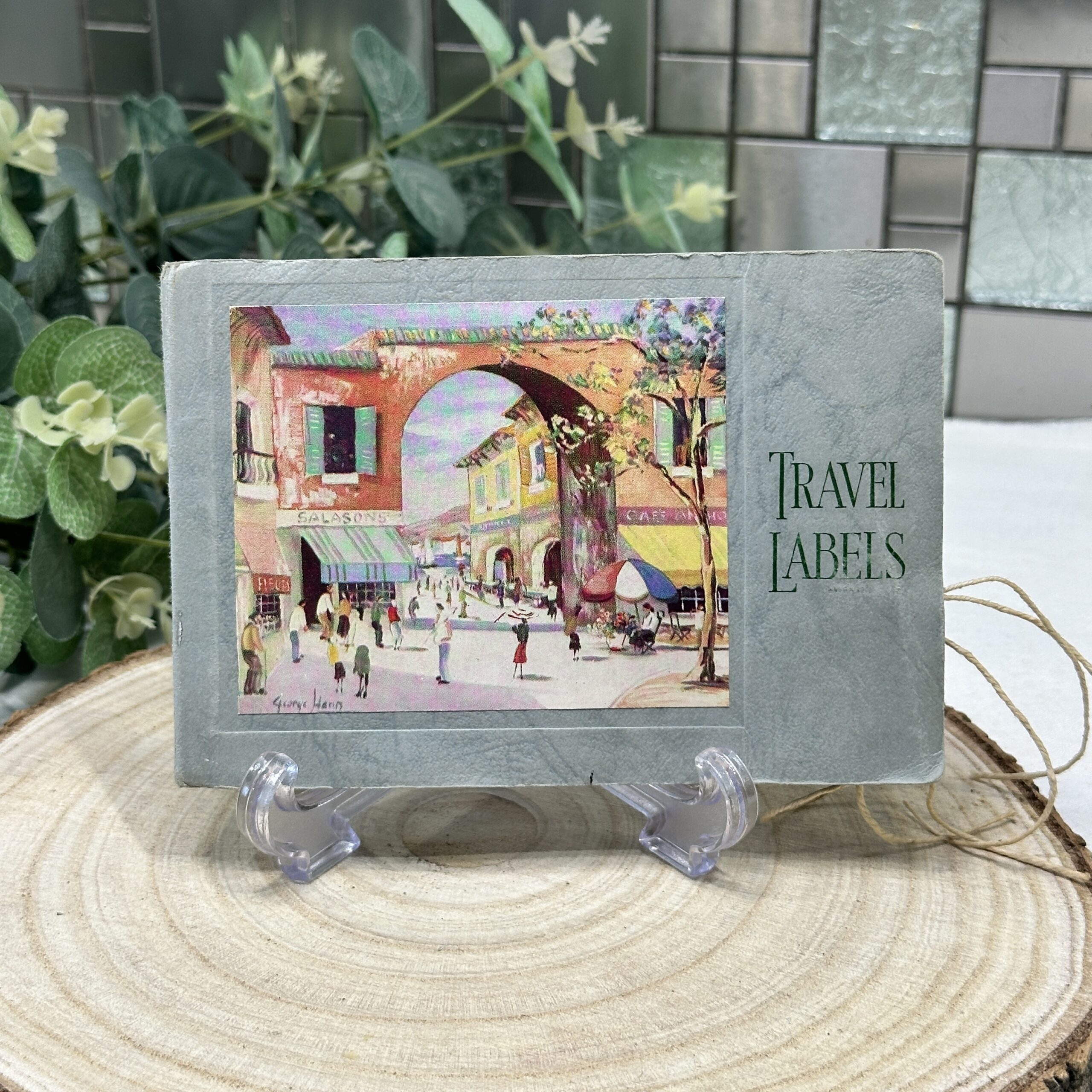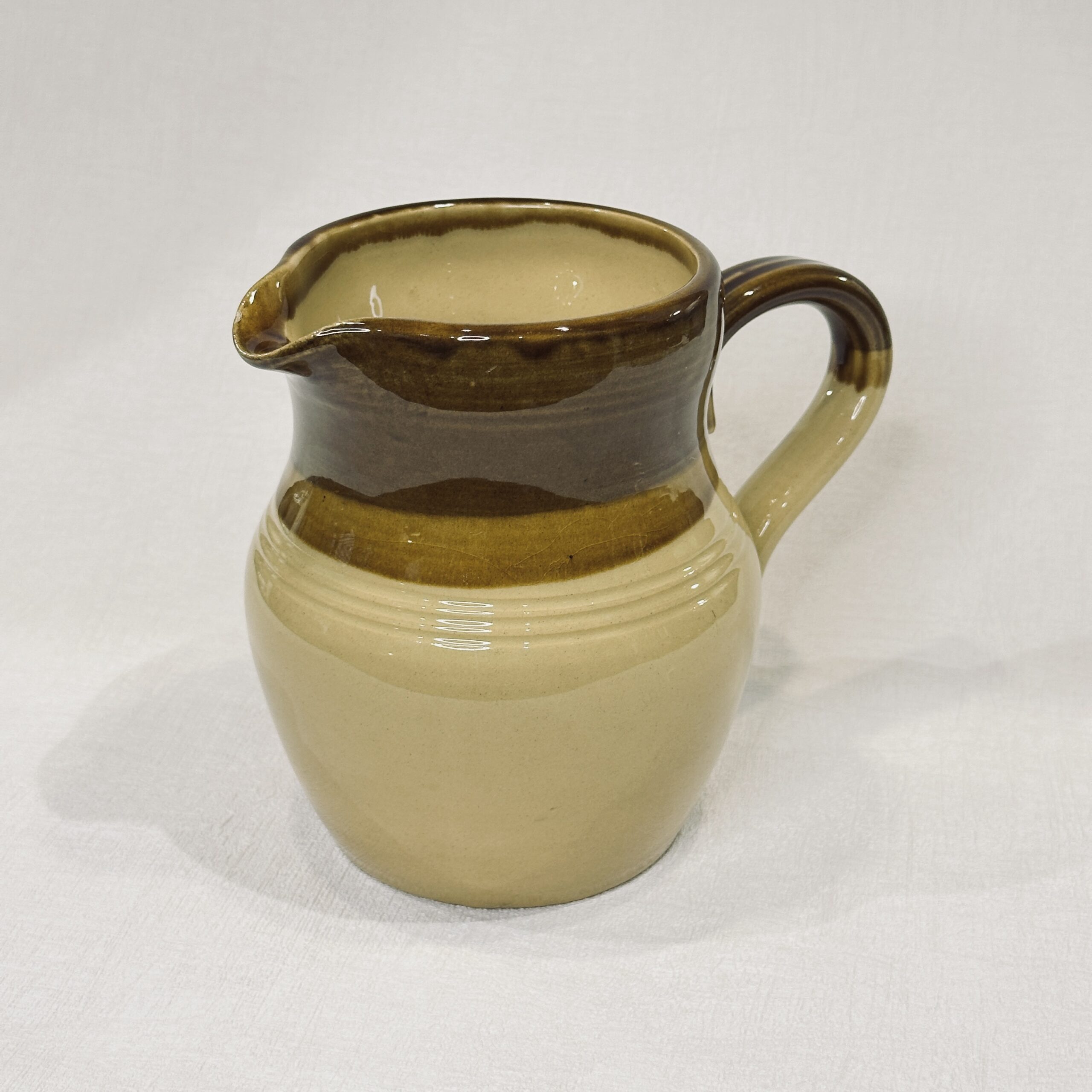[vc_row center_bck_image=”no”][vc_column][vc_column_text css=””]
[bafg id=”14076″]
[/vc_column_text][vc_column_text css=””]
Painting furniture is a great way to give it a new lease on life and update your décor. However, it can be daunting if you’re unsure where to start. But, we all have to start somewhere, and the first piece of furniture you paint isn’t going to be perfect and that’s okay! Mine certainly wasn’t! I shared a post about how I created it which you can check out here if you’re curious! Since then, I’ve painted dozens of furniture pieces, which I’ve been able to sell and have made a pretty good side hustle out of. In the process, I’ve learned how to get beautiful results that last, which I want to share with you.Here are some of my top tips to help you paint your furniture like a pro:
[/vc_column_text][/vc_column][/vc_row][vc_row center_bck_image=”no” css=”.vc_custom_1720704718542{padding-top: 65px !important;padding-bottom: 65px !important;}”][vc_column][eltd_section_title type_out=”no” display_separator=”yes” title=”1. Choose the Right Paint”][vc_column_text css=””]
The type of paint you use will depend on the surface you’re painting and the desired finish. For most furniture, a high-quality
If you’re looking for a more rustic, distressed, shabby-chic or textured look, then I would highly recommend chalk paint. It’s a very forgiving paint in terms of the prep work you need to do and gives you a chalky, matte effect which can be distressed for a vintage look.
If you’re painting a piece of furniture that will be used outdoors, you’ll need to choose an exterior paint that is UV-resistant and weatherproof.
Some of my favourite paints for painting furniture are:
[/vc_column_text][vc_row_inner center_bck_image=”no”][vc_column_inner width=”1/5″][vc_single_image image=”14094″ img_size=”large” onclick=”custom_link” img_link_target=”_blank” css=”” link=”https://frenchicpaint.co.uk/?utm_source=awin&utm_medium=affiiliateID&utm_campaign=Affiliates&sv1=affiliate&sv_campaign_id=1018977&awc=20977_1718910660_2bf0bdbb8b8106ca416ad599462fad39″][/vc_column_inner][vc_column_inner width=”1/5″][vc_single_image image=”14095″ img_size=”large” onclick=”custom_link” img_link_target=”_blank” css=”” link=”https://www.cornishmineralpaint.co.uk/”][/vc_column_inner][vc_column_inner width=”1/5″][vc_single_image image=”14096″ img_size=”large” onclick=”custom_link” img_link_target=”_blank” css=”” link=”https://buntys.uk/”][/vc_column_inner][vc_column_inner width=”1/5″][vc_single_image image=”14097″ img_size=”large” onclick=”custom_link” img_link_target=”_blank” css=”” link=”https://www.thirteenfurniture.co.uk/collections/fusion-mineral-paint”][/vc_column_inner][vc_column_inner width=”1/5″][vc_single_image image=”14098″ img_size=”large” onclick=”custom_link” img_link_target=”_blank” css=”” link=”https://www.anniesloan.com/”][/vc_column_inner][/vc_row_inner][vc_empty_space][/vc_column][/vc_row][vc_row center_bck_image=”no” css=”.vc_custom_1720704728466{padding-top: 65px !important;padding-bottom: 65px !important;}”][vc_column][eltd_section_title type_out=”no” display_separator=”yes” title=”2. Clean and Sand The Surface”][vc_column_text css=””]
Before you start painting, it’s important to clean and sand the surface to remove any dirt, grease, or old paint. This will help the new paint to adhere properly and give you a smooth finish.
Always sand in the direction of the wood grain, starting with lower grit sandpaper (like 80 grit), then move to medium grit (120), then a fine grit (180) and finish with an extra fine grit (220). Be sure to wear a dust mask whilst sanding to avoid breathing in the dust particles.
If there are any cracks, holes, or imperfections, fill them with wood filler and sand them smooth once dry.
Before you move on to the primer, give it one final clean to make sure you have removed all the dust and dirt residue.
Tools to get the job done:
[/vc_column_text][/vc_column][/vc_row][vc_row center_bck_image=”no”][vc_column][vc_column_text css=””]
 Everbuild Sugar Soap Liquid Concentrate
Everbuild Sugar Soap Liquid Concentrate A great, inexpensive degreasing cleaner that goes a long way.
[/vc_column_text][/vc_column][/vc_row][vc_row center_bck_image=”no” css=”.vc_custom_1720704743303{padding-top: 65px !important;padding-bottom: 65px !important;}”][vc_column][eltd_section_title type_out=”no” display_separator=”yes” title=”3. Apply Primer”][vc_column_text css=””]
Primer is a crucial step in painting furniture. It helps to seal the surface and prevent the paint from chipping or peeling. Apply one to two coats of primer, allowing each coat to dry completely before applying the next. Make sure to sand between coats, and after your final coat, with 220-grit sandpaper to get that buttery smooth surface we’re aiming for.
A stain-blocking primer will help to prevent the bleed-through of tannins to your paint. Tannins are natural constituents present in some wood types and if they penetrate your paint layer, will cause a brownish-looking stain. Also, if you’re working with pine furniture, the knots in the pine will definitely bleed. My favourite stain-blocking primer is Zinsser Cover Stain. I made a reel explaining bleed-through, which you can watch HERE.[/vc_column_text][/vc_column][/vc_row][vc_row center_bck_image=”no” css=”.vc_custom_1720704798946{padding-top: 65px !important;padding-bottom: 65px !important;}”][vc_column][eltd_section_title type_out=”no” display_separator=”yes” title=”4. Use a High-Quality Brush and Roller”][vc_column_text css=””]
A high-quality brush and
Small foam rollers will give you the best chance of getting a smooth finish and will apply the paint faster than using a brush. My favourite rollers are these ones from Two Fussy Blokes. They give a super smooth finish!
[/vc_column_text][vc_row_inner center_bck_image=”no”][vc_column_inner width=”1/2″][vc_single_image image=”13624″ img_size=”large” onclick=”custom_link” img_link_target=”_blank” css=”” link=”https://phoenixfurniturestudio.co.uk/go/licktools-fsc-certified-brush-set-zero-bristle-loss/”][/vc_column_inner][vc_column_inner width=”1/2″][vc_single_image image=”14103″ img_size=”large” onclick=”custom_link” img_link_target=”_blank” css=”” link=”https://www.amazon.co.uk/dp/B07Z23Q1TB?tag=flipitandrestoreit-21&ref_=as_li_ss_tl&linkCode=sl1&linkId=0773a0e1dc22ff14edf8955166613df2″][/vc_column_inner][/vc_row_inner][/vc_column][/vc_row][vc_row center_bck_image=”no” css=”.vc_custom_1720704836035{padding-top: 65px !important;padding-bottom: 65px !important;}”][vc_column][eltd_section_title type_out=”no” display_separator=”yes” title=”5. Apply Paint in Thin Coats”][vc_column_text css=””]
It’s better to apply several thin coats of paint than one thick coat. This will help to prevent drips and runs. You are not trying to achieve full coverage in one coat!
[/vc_column_text][/vc_column][/vc_row][vc_row center_bck_image=”no” css=”.vc_custom_1720704866521{padding-top: 65px !important;padding-bottom: 65px !important;}”][vc_column][eltd_section_title type_out=”no” display_separator=”yes” title=”6. Let Each Coat Dry Completely Before Applying the Next”][vc_column_text css=””]
This is so important to avoid bubbles and wrinkles in the paint!
[/vc_column_text][/vc_column][/vc_row][vc_row center_bck_image=”no” css=”.vc_custom_1720704933272{padding-top: 65px !important;padding-bottom: 65px !important;}”][vc_column][eltd_section_title type_out=”no” display_separator=”yes” title=”7. Sand Between Each Coat”][vc_column_text css=””]
After the first coat of paint has dried, use a fine-grit sandpaper (around 320 grit) and sand the entire surface by hand. This will remove any bits that may have been caught in your first coat of paint and any bumps or texture in the paint.
Run your hand over the surface to check it all feels smooth to the touch.
Once everything is sanded, wipe it down with a damp cloth to remove any additional dust from the surface and move on to your next coat of paint.
Do not sand after your final coat of paint!
[/vc_column_text][/vc_column][/vc_row][vc_row center_bck_image=”no” css=”.vc_custom_1720704940573{padding-top: 65px !important;padding-bottom: 65px !important;}”][vc_column][eltd_section_title type_out=”no” display_separator=”yes” title=”8. Apply a Topcoat”][vc_column_text css=””]
A topcoat will protect your paint job from scratches and stains. Apply a coat or two of a varnish or wax.
I prefer water-based varnishes as these do not yellow over time like oil-based varnishes. However, if you have used an oil-based paint, then I would recommend using an oil-based topcoat.
The different sheens of varnish will also provide different levels of durability – matt is the least durable, satin is in the middle and gloss will be the most durable. My favourite water-based varnish is the Polyvine Decorators Varnish in Satin.A wax finish will add a matte or low-sheen finish to the paint, but won’t be as long-lasting or as durable as a varnish. If I’m going to use wax to protect my furniture piece, then I’m reaching for Rustoleum’s Furniture Finishing Wax.
[/vc_column_text][vc_row_inner center_bck_image=”no”][vc_column_inner width=”1/2″][vc_single_image image=”14104″ img_size=”large” onclick=”custom_link” img_link_target=”_blank” css=”” link=”https://phoenixfurniturestudio.co.uk/go/amzn-polyvine-decorators-varnish-satin-1-litre/”][/vc_column_inner][vc_column_inner width=”1/2″][vc_single_image image=”13366″ img_size=”large” onclick=”custom_link” img_link_target=”_blank” css=”” link=”https://phoenixfurniturestudio.co.uk/go/amzn-rust-oleum-ro0070015-furniture-finishing-wax-clear400ml/”][/vc_column_inner][/vc_row_inner][vc_empty_space][/vc_column][/vc_row][vc_row center_bck_image=”no” css=”.vc_custom_1720704947270{padding-top: 65px !important;padding-bottom: 65px !important;}”][vc_column][eltd_section_title type_out=”no” display_separator=”yes” title=”9. Allow Your Paint To Fully Cure”][vc_column_text css=””]
It can take some paints up to 30 days to fully cure, or harden. This means it is prone to getting scratched or chipped if you dive right into using it every day.
[/vc_column_text][/vc_column][/vc_row][vc_row center_bck_image=”no” css=”.vc_custom_1720704953221{padding-top: 65px !important;padding-bottom: 65px !important;}”][vc_column][eltd_section_title type_out=”no” display_separator=”yes” title=”10. Use New Hardware”][vc_column_text css=””]
New hardware can give your furniture a whole new look. Choose hardware that complements the style of your furniture and the décor of your room.
[/vc_column_text][/vc_column][/vc_row][vc_row center_bck_image=”no”][vc_column][vc_column_text css=””]
And that’s it, you’re all done!
Once your furniture is painted, take a step back and admire your handiwork. You’ll be amazed at how a fresh coat of paint can transform a piece of furniture. [/vc_column_text][vc_empty_space][/vc_column][/vc_row][vc_row center_bck_image=”no”][vc_column][eltd_section_title type_out=”no” display_separator=”yes” title=”Additional Tips”][vc_column_text css=””]- Wear gloves and a mask to protect yourself from paint fumes and dust.
- Work in a well-ventilated area.
- Cover your workspace with drop cloths or plastic sheeting to protect it from paint splatters.
With a little planning and preparation, you can paint your furniture like a pro and give it a new lease on life.
[/vc_column_text][/vc_column][/vc_row][vc_row center_bck_image=”no”][vc_column][vc_column_text css=””]
If you enjoyed this post why not subscribe to my newsletter to receive upcycling tips & tricks, exclusive offers, and more!
[/vc_column_text][vc_empty_space][vc_raw_html css=””]JTNDc3R5bGUlMjB0eXBlJTNEJTIydGV4dCUyRmNzcyUyMiUzRSU0MGltcG9ydCUyMHVybCUyOCUyMmh0dHBzJTNBJTJGJTJGYXNzZXRzLm1sY2RuLmNvbSUyRmZvbnRzLmNzcyUzRnZlcnNpb24lM0QxNzIyODQ0JTIyJTI5JTNCJTNDJTJGc3R5bGUlM0UlMEElMjAlMjAlMjAlMjAlM0NzdHlsZSUyMHR5cGUlM0QlMjJ0ZXh0JTJGY3NzJTIyJTNFJTBBJTIwJTIwJTIwJTIwJTJGJTJBJTIwTE9BREVSJTIwJTJBJTJGJTBBJTIwJTIwJTIwJTIwLm1sLWZvcm0tZW1iZWRTdWJtaXRMb2FkJTIwJTdCJTBBJTIwJTIwJTIwJTIwJTIwJTIwZGlzcGxheSUzQSUyMGlubGluZS1ibG9jayUzQiUwQSUyMCUyMCUyMCUyMCUyMCUyMHdpZHRoJTNBJTIwMjBweCUzQiUwQSUyMCUyMCUyMCUyMCUyMCUyMGhlaWdodCUzQSUyMDIwcHglM0IlMEElMjAlMjAlMjAlMjAlN0QlMEElMEElMjAlMjAlMjAlMjAuZy1yZWNhcHRjaGElMjAlN0IlMEElMjAlMjAlMjAlMjB0cmFuc2Zvcm0lM0ElMjBzY2FsZSUyODElMjklM0IlMEElMjAlMjAlMjAlMjAtd2Via2l0LXRyYW5zZm9ybSUzQSUyMHNjYWxlJTI4MSUyOSUzQiUwQSUyMCUyMCUyMCUyMHRyYW5zZm9ybS1vcmlnaW4lM0ElMjAwJTIwMCUzQiUwQSUyMCUyMCUyMCUyMC13ZWJraXQtdHJhbnNmb3JtLW9yaWdpbiUzQSUyMDAlMjAwJTNCJTBBJTIwJTIwJTIwJTIwaGVpZ2h0JTNBJTIwJTNCJTBBJTIwJTIwJTIwJTIwJTdEJTBBJTBBJTIwJTIwJTIwJTIwLnNyLW9ubHklMjAlN0IlMEElMjAlMjAlMjAlMjAlMjAlMjBwb3NpdGlvbiUzQSUyMGFic29sdXRlJTNCJTBBJTIwJTIwJTIwJTIwJTIwJTIwd2lkdGglM0ElMjAxcHglM0IlMEElMjAlMjAlMjAlMjAlMjAlMjBoZWlnaHQlM0ElMjAxcHglM0IlMEElMjAlMjAlMjAlMjAlMjAlMjBwYWRkaW5nJTNBJTIwMCUzQiUwQSUyMCUyMCUyMCUyMCUyMCUyMG1hcmdpbiUzQSUyMC0xcHglM0IlMEElMjAlMjAlMjAlMjAlMjAlMjBvdmVyZmxvdyUzQSUyMGhpZGRlbiUzQiUwQSUyMCUyMCUyMCUyMCUyMCUyMGNsaXAlM0ElMjByZWN0JTI4MCUyQzAlMkMwJTJDMCUyOSUzQiUwQSUyMCUyMCUyMCUyMCUyMCUyMGJvcmRlciUzQSUyMDAlM0IlMEElMjAlMjAlMjAlMjAlN0QlMEElMEElMjAlMjAlMjAlMjAubWwtZm9ybS1lbWJlZFN1Ym1pdExvYWQlM0FhZnRlciUyMCU3QiUwQSUyMCUyMCUyMCUyMCUyMCUyMGNvbnRlbnQlM0ElMjAlMjIlMjAlMjIlM0IlMEElMjAlMjAlMjAlMjAlMjAlMjBkaXNwbGF5JTNBJTIwYmxvY2slM0IlMEElMjAlMjAlMjAlMjAlMjAlMjB3aWR0aCUzQSUyMDExcHglM0IlMEElMjAlMjAlMjAlMjAlMjAlMjBoZWlnaHQlM0ElMjAxMXB4JTNCJTBBJTIwJTIwJTIwJTIwJTIwJTIwbWFyZ2luJTNBJTIwMXB4JTNCJTBBJTIwJTIwJTIwJTIwJTIwJTIwYm9yZGVyLXJhZGl1cyUzQSUyMDUwJTI1JTNCJTBBJTIwJTIwJTIwJTIwJTIwJTIwYm9yZGVyJTNBJTIwNHB4JTIwc29saWQlMjAlMjNmZmYlM0IlMEElMjAlMjAlMjAlMjBib3JkZXItY29sb3IlM0ElMjAlMjNmZmZmZmYlMjAlMjNmZmZmZmYlMjAlMjNmZmZmZmYlMjB0cmFuc3BhcmVudCUzQiUwQSUyMCUyMCUyMCUyMGFuaW1hdGlvbiUzQSUyMG1sLWZvcm0tZW1iZWRTdWJtaXRMb2FkJTIwMS4ycyUyMGxpbmVhciUyMGluZmluaXRlJTNCJTBBJTIwJTIwJTIwJTIwJTdEJTBBJTIwJTIwJTIwJTIwJTQwa2V5ZnJhbWVzJTIwbWwtZm9ybS1lbWJlZFN1Ym1pdExvYWQlMjAlN0IlMEElMjAlMjAlMjAlMjAlMjAlMjAwJTI1JTIwJTdCJTBBJTIwJTIwJTIwJTIwJTIwJTIwdHJhbnNmb3JtJTNBJTIwcm90YXRlJTI4MGRlZyUyOSUzQiUwQSUyMCUyMCUyMCUyMCUyMCUyMCU3RCUwQSUyMCUyMCUyMCUyMCUyMCUyMDEwMCUyNSUyMCU3QiUwQSUyMCUyMCUyMCUyMCUyMCUyMHRyYW5zZm9ybSUzQSUyMHJvdGF0ZSUyODM2MGRlZyUyOSUzQiUwQSUyMCUyMCUyMCUyMCUyMCUyMCU3RCUwQSUyMCUyMCUyMCUyMCU3RCUwQSUyMCUyMCUyMCUyMCUyMCUyMCUyM21sYjItMTcxOTUyOTkubWwtZm9ybS1lbWJlZENvbnRhaW5lciUyMCU3QiUwQSUyMCUyMCUyMCUyMCUyMCUyMCUyMCUyMGJveC1zaXppbmclM0ElMjBib3JkZXItYm94JTNCJTBBJTIwJTIwJTIwJTIwJTIwJTIwJTIwJTIwZGlzcGxheSUzQSUyMHRhYmxlJTNCJTBBJTIwJTIwJTIwJTIwJTIwJTIwJTIwJTIwbWFyZ2luJTNBJTIwMCUyMGF1dG8lM0IlMEElMjAlMjAlMjAlMjAlMjAlMjAlMjAlMjBwb3NpdGlvbiUzQSUyMHN0YXRpYyUzQiUwQSUyMCUyMCUyMCUyMCUyMCUyMCUyMCUyMHdpZHRoJTNBJTIwMTAwJTI1JTIwJTIxaW1wb3J0YW50JTNCJTBBJTIwJTIwJTIwJTIwJTIwJTIwJTdEJTBBJTIwJTIwJTIwJTIwJTIwJTIwJTIzbWxiMi0xNzE5NTI5OS5tbC1mb3JtLWVtYmVkQ29udGFpbmVyJTIwaDQlMkMlMEElMjAlMjAlMjAlMjAlMjAlMjAlMjNtbGIyLTE3MTk1Mjk5Lm1sLWZvcm0tZW1iZWRDb250YWluZXIlMjBwJTJDJTBBJTIwJTIwJTIwJTIwJTIwJTIwJTIzbWxiMi0xNzE5NTI5OS5tbC1mb3JtLWVtYmVkQ29udGFpbmVyJTIwc3BhbiUyQyUwQSUyMCUyMCUyMCUyMCUyMCUyMCUyM21sYjItMTcxOTUyOTkubWwtZm9ybS1lbWJlZENvbnRhaW5lciUyMGJ1dHRvbiUyMCU3QiUwQSUyMCUyMCUyMCUyMCUyMCUyMCUyMCUyMHRleHQtdHJhbnNmb3JtJTNBJTIwbm9uZSUyMCUyMWltcG9ydGFudCUzQiUwQSUyMCUyMCUyMCUyMCUyMCUyMCUyMCUyMGxldHRlci1zcGFjaW5nJTNBJTIwbm9ybWFsJTIwJTIxaW1wb3J0YW50JTNCJTBBJTIwJTIwJTIwJTIwJTIwJTIwJTdEJTBBJTIwJTIwJTIwJTIwJTIwJTIwJTIzbWxiMi0xNzE5NTI5OS5tbC1mb3JtLWVtYmVkQ29udGFpbmVyJTIwLm1sLWZvcm0tZW1iZWRXcmFwcGVyJTIwJTdCJTBBJTIwJTIwJTIwJTIwJTIwJTIwJTIwJTIwYmFja2dyb3VuZC1jb2xvciUzQSUyMCUyM2Y2ZjZmNiUzQiUwQSUyMCUyMCUyMCUyMCUyMCUyMCUyMCUyMCUwQSUyMCUyMCUyMCUyMCUyMCUyMCUyMCUyMGJvcmRlci13aWR0aCUzQSUyMDBweCUzQiUwQSUyMCUyMCUyMCUyMCUyMCUyMCUyMCUyMGJvcmRlci1jb2xvciUzQSUyMHRyYW5zcGFyZW50JTNCJTBBJTIwJTIwJTIwJTIwJTIwJTIwJTIwJTIwYm9yZGVyLXJhZGl1cyUzQSUyMDRweCUzQiUwQSUyMCUyMCUyMCUyMCUyMCUyMCUyMCUyMGJvcmRlci1zdHlsZSUzQSUyMHNvbGlkJTNCJTBBJTIwJTIwJTIwJTIwJTIwJTIwJTIwJTIwYm94LXNpemluZyUzQSUyMGJvcmRlci1ib3glM0IlMEElMjAlMjAlMjAlMjAlMjAlMjAlMjAlMjBkaXNwbGF5JTNBJTIwaW5saW5lLWJsb2NrJTIwJTIxaW1wb3J0YW50JTNCJTBBJTIwJTIwJTIwJTIwJTIwJTIwJTIwJTIwbWFyZ2luJTNBJTIwMCUzQiUwQSUyMCUyMCUyMCUyMCUyMCUyMCUyMCUyMHBhZGRpbmclM0ElMjAwJTNCJTBBJTIwJTIwJTIwJTIwJTIwJTIwJTIwJTIwcG9zaXRpb24lM0ElMjByZWxhdGl2ZSUzQiUwQSUyMCUyMCUyMCUyMCUyMCUyMCUyMCUyMCUyMCUyMCUyMCUyMCUyMCUyMCU3RCUwQSUyMCUyMCUyMCUyMCUyMCUyMCUyM21sYjItMTcxOTUyOTkubWwtZm9ybS1lbWJlZENvbnRhaW5lciUyMC5tbC1mb3JtLWVtYmVkV3JhcHBlci5lbWJlZFBvcHVwJTJDJTBBJTIwJTIwJTIwJTIwJTIwJTIwJTIzbWxiMi0xNzE5NTI5OS5tbC1mb3JtLWVtYmVkQ29udGFpbmVyJTIwLm1sLWZvcm0tZW1iZWRXcmFwcGVyLmVtYmVkRGVmYXVsdCUyMCU3QiUyMHdpZHRoJTNBJTIwNDAwcHglM0IlMjAlN0QlMEElMjAlMjAlMjAlMjAlMjAlMjAlMjNtbGIyLTE3MTk1Mjk5Lm1sLWZvcm0tZW1iZWRDb250YWluZXIlMjAubWwtZm9ybS1lbWJlZFdyYXBwZXIuZW1iZWRGb3JtJTIwJTdCJTIwbWF4LXdpZHRoJTNBJTIwNDAwcHglM0IlMjB3aWR0aCUzQSUyMDEwMCUyNSUzQiUyMCU3RCUwQSUyMCUyMCUyMCUyMCUyMCUyMCUyM21sYjItMTcxOTUyOTkubWwtZm9ybS1lbWJlZENvbnRhaW5lciUyMC5tbC1mb3JtLWFsaWduLWxlZnQlMjAlN0IlMjB0ZXh0LWFsaWduJTNBJTIwbGVmdCUzQiUyMCU3RCUwQSUyMCUyMCUyMCUyMCUyMCUyMCUyM21sYjItMTcxOTUyOTkubWwtZm9ybS1lbWJlZENvbnRhaW5lciUyMC5tbC1mb3JtLWFsaWduLWNlbnRlciUyMCU3QiUyMHRleHQtYWxpZ24lM0ElMjBjZW50ZXIlM0IlMjAlN0QlMEElMjAlMjAlMjAlMjAlMjAlMjAlMjNtbGIyLTE3MTk1Mjk5Lm1sLWZvcm0tZW1iZWRDb250YWluZXIlMjAubWwtZm9ybS1hbGlnbi1kZWZhdWx0JTIwJTdCJTIwZGlzcGxheSUzQSUyMHRhYmxlLWNlbGwlMjAlMjFpbXBvcnRhbnQlM0IlMjB2ZXJ0aWNhbC1hbGlnbiUzQSUyMG1pZGRsZSUyMCUyMWltcG9ydGFudCUzQiUyMHRleHQtYWxpZ24lM0ElMjBjZW50ZXIlMjAlMjFpbXBvcnRhbnQlM0IlMjAlN0QlMEElMjAlMjAlMjAlMjAlMjAlMjAlMjNtbGIyLTE3MTk1Mjk5Lm1sLWZvcm0tZW1iZWRDb250YWluZXIlMjAubWwtZm9ybS1hbGlnbi1yaWdodCUyMCU3QiUyMHRleHQtYWxpZ24lM0ElMjByaWdodCUzQiUyMCU3RCUwQSUyMCUyMCUyMCUyMCUyMCUyMCUyM21sYjItMTcxOTUyOTkubWwtZm9ybS1lbWJlZENvbnRhaW5lciUyMC5tbC1mb3JtLWVtYmVkV3JhcHBlciUyMC5tbC1mb3JtLWVtYmVkSGVhZGVyJTIwaW1nJTIwJTdCJTBBJTIwJTIwJTIwJTIwJTIwJTIwJTIwJTIwYm9yZGVyLXRvcC1sZWZ0LXJhZGl1cyUzQSUyMDRweCUzQiUwQSUyMCUyMCUyMCUyMCUyMCUyMCUyMCUyMGJvcmRlci10b3AtcmlnaHQtcmFkaXVzJTNBJTIwNHB4JTNCJTBBJTIwJTIwJTIwJTIwJTIwJTIwJTIwJTIwaGVpZ2h0JTNBJTIwYXV0byUzQiUwQSUyMCUyMCUyMCUyMCUyMCUyMCUyMCUyMG1hcmdpbiUzQSUyMDAlMjBhdXRvJTIwJTIxaW1wb3J0YW50JTNCJTBBJTIwJTIwJTIwJTIwJTIwJTIwJTIwJTIwbWF4LXdpZHRoJTNBJTIwMTAwJTI1JTNCJTBBJTIwJTIwJTIwJTIwJTIwJTIwJTIwJTIwd2lkdGglM0ElMjB1bmRlZmluZWRweCUzQiUwQSUyMCUyMCUyMCUyMCUyMCUyMCU3RCUwQSUyMCUyMCUyMCUyMCUyMCUyMCUyM21sYjItMTcxOTUyOTkubWwtZm9ybS1lbWJlZENvbnRhaW5lciUyMC5tbC1mb3JtLWVtYmVkV3JhcHBlciUyMC5tbC1mb3JtLWVtYmVkQm9keSUyQyUwQSUyMCUyMCUyMCUyMCUyMCUyMCUyM21sYjItMTcxOTUyOTkubWwtZm9ybS1lbWJlZENvbnRhaW5lciUyMC5tbC1mb3JtLWVtYmVkV3JhcHBlciUyMC5tbC1mb3JtLXN1Y2Nlc3NCb2R5JTIwJTdCJTBBJTIwJTIwJTIwJTIwJTIwJTIwJTIwJTIwcGFkZGluZyUzQSUyMDIwcHglMjAyMHB4JTIwMCUyMDIwcHglM0IlMEElMjAlMjAlMjAlMjAlMjAlMjAlN0QlMEElMjAlMjAlMjAlMjAlMjAlMjAlMjNtbGIyLTE3MTk1Mjk5Lm1sLWZvcm0tZW1iZWRDb250YWluZXIlMjAubWwtZm9ybS1lbWJlZFdyYXBwZXIlMjAubWwtZm9ybS1lbWJlZEJvZHkubWwtZm9ybS1lbWJlZEJvZHlIb3Jpem9udGFsJTIwJTdCJTBBJTIwJTIwJTIwJTIwJTIwJTIwJTIwJTIwcGFkZGluZy1ib3R0b20lM0ElMjAwJTNCJTBBJTIwJTIwJTIwJTIwJTIwJTIwJTdEJTBBJTIwJTIwJTIwJTIwJTIwJTIwJTIzbWxiMi0xNzE5NTI5OS5tbC1mb3JtLWVtYmVkQ29udGFpbmVyJTIwLm1sLWZvcm0tZW1iZWRXcmFwcGVyJTIwLm1sLWZvcm0tZW1iZWRCb2R5JTIwLm1sLWZvcm0tZW1iZWRDb250ZW50JTJDJTBBJTIwJTIwJTIwJTIwJTIwJTIwJTIzbWxiMi0xNzE5NTI5OS5tbC1mb3JtLWVtYmVkQ29udGFpbmVyJTIwLm1sLWZvcm0tZW1iZWRXcmFwcGVyJTIwLm1sLWZvcm0tc3VjY2Vzc0JvZHklMjAubWwtZm9ybS1zdWNjZXNzQ29udGVudCUyMCU3QiUwQSUyMCUyMCUyMCUyMCUyMCUyMCUyMCUyMHRleHQtYWxpZ24lM0ElMjBsZWZ0JTNCJTBBJTIwJTIwJTIwJTIwJTIwJTIwJTIwJTIwbWFyZ2luJTNBJTIwMCUyMDAlMjAyMHB4JTIwMCUzQiUwQSUyMCUyMCUyMCUyMCUyMCUyMCU3RCUwQSUyMCUyMCUyMCUyMCUyMCUyMCUyM21sYjItMTcxOTUyOTkubWwtZm9ybS1lbWJlZENvbnRhaW5lciUyMC5tbC1mb3JtLWVtYmVkV3JhcHBlciUyMC5tbC1mb3JtLWVtYmVkQm9keSUyMC5tbC1mb3JtLWVtYmVkQ29udGVudCUyMGg0JTJDJTBBJTIwJTIwJTIwJTIwJTIwJTIwJTIzbWxiMi0xNzE5NTI5OS5tbC1mb3JtLWVtYmVkQ29udGFpbmVyJTIwLm1sLWZvcm0tZW1iZWRXcmFwcGVyJTIwLm1sLWZvcm0tc3VjY2Vzc0JvZHklMjAubWwtZm9ybS1zdWNjZXNzQ29udGVudCUyMGg0JTIwJTdCJTBBJTIwJTIwJTIwJTIwJTIwJTIwJTIwJTIwY29sb3IlM0ElMjAlMjMwMDAwMDAlM0IlMEElMjAlMjAlMjAlMjAlMjAlMjAlMjAlMjBmb250LWZhbWlseSUzQSUyMCUyN09wZW4lMjBTYW5zJTI3JTJDJTIwQXJpYWwlMkMlMjBIZWx2ZXRpY2ElMkMlMjBzYW5zLXNlcmlmJTNCJTBBJTIwJTIwJTIwJTIwJTIwJTIwJTIwJTIwZm9udC1zaXplJTNBJTIwMzBweCUzQiUwQSUyMCUyMCUyMCUyMCUyMCUyMCUyMCUyMGZvbnQtd2VpZ2h0JTNBJTIwNDAwJTNCJTBBJTIwJTIwJTIwJTIwJTIwJTIwJTIwJTIwbWFyZ2luJTNBJTIwMCUyMDAlMjAxMHB4JTIwMCUzQiUwQSUyMCUyMCUyMCUyMCUyMCUyMCUyMCUyMHRleHQtYWxpZ24lM0ElMjBsZWZ0JTNCJTBBJTIwJTIwJTIwJTIwJTIwJTIwJTIwJTIwd29yZC1icmVhayUzQSUyMGJyZWFrLXdvcmQlM0IlMEElMjAlMjAlMjAlMjAlMjAlMjAlN0QlMEElMjAlMjAlMjAlMjAlMjAlMjAlMjNtbGIyLTE3MTk1Mjk5Lm1sLWZvcm0tZW1iZWRDb250YWluZXIlMjAubWwtZm9ybS1lbWJlZFdyYXBwZXIlMjAubWwtZm9ybS1lbWJlZEJvZHklMjAubWwtZm9ybS1lbWJlZENvbnRlbnQlMjBwJTJDJTBBJTIwJTIwJTIwJTIwJTIwJTIwJTIzbWxiMi0xNzE5NTI5OS5tbC1mb3JtLWVtYmVkQ29udGFpbmVyJTIwLm1sLWZvcm0tZW1iZWRXcmFwcGVyJTIwLm1sLWZvcm0tc3VjY2Vzc0JvZHklMjAubWwtZm9ybS1zdWNjZXNzQ29udGVudCUyMHAlMjAlN0IlMEElMjAlMjAlMjAlMjAlMjAlMjAlMjAlMjBjb2xvciUzQSUyMCUyMzAwMDAwMCUzQiUwQSUyMCUyMCUyMCUyMCUyMCUyMCUyMCUyMGZvbnQtZmFtaWx5JTNBJTIwJTI3T3BlbiUyMFNhbnMlMjclMkMlMjBBcmlhbCUyQyUyMEhlbHZldGljYSUyQyUyMHNhbnMtc2VyaWYlM0IlMEElMjAlMjAlMjAlMjAlMjAlMjAlMjAlMjBmb250LXNpemUlM0ElMjAxNHB4JTNCJTBBJTIwJTIwJTIwJTIwJTIwJTIwJTIwJTIwZm9udC13ZWlnaHQlM0ElMjA0MDAlM0IlMEElMjAlMjAlMjAlMjAlMjAlMjAlMjAlMjBsaW5lLWhlaWdodCUzQSUyMDIwcHglM0IlMEElMjAlMjAlMjAlMjAlMjAlMjAlMjAlMjBtYXJnaW4lM0ElMjAwJTIwMCUyMDEwcHglMjAwJTNCJTBBJTIwJTIwJTIwJTIwJTIwJTIwJTIwJTIwdGV4dC1hbGlnbiUzQSUyMGxlZnQlM0IlMEElMjAlMjAlMjAlMjAlMjAlMjAlN0QlMEElMjAlMjAlMjAlMjAlMjAlMjAlMjNtbGIyLTE3MTk1Mjk5Lm1sLWZvcm0tZW1iZWRDb250YWluZXIlMjAubWwtZm9ybS1lbWJlZFdyYXBwZXIlMjAubWwtZm9ybS1lbWJlZEJvZHklMjAubWwtZm9ybS1lbWJlZENvbnRlbnQlMjB1bCUyQyUwQSUyMCUyMCUyMCUyMCUyMCUyMCUyM21sYjItMTcxOTUyOTkubWwtZm9ybS1lbWJlZENvbnRhaW5lciUyMC5tbC1mb3JtLWVtYmVkV3JhcHBlciUyMC5tbC1mb3JtLWVtYmVkQm9keSUyMC5tbC1mb3JtLWVtYmVkQ29udGVudCUyMG9sJTJDJTBBJTIwJTIwJTIwJTIwJTIwJTIwJTIzbWxiMi0xNzE5NTI5OS5tbC1mb3JtLWVtYmVkQ29udGFpbmVyJTIwLm1sLWZvcm0tZW1iZWRXcmFwcGVyJTIwLm1sLWZvcm0tc3VjY2Vzc0JvZHklMjAubWwtZm9ybS1zdWNjZXNzQ29udGVudCUyMHVsJTJDJTBBJTIwJTIwJTIwJTIwJTIwJTIwJTIzbWxiMi0xNzE5NTI5OS5tbC1mb3JtLWVtYmVkQ29udGFpbmVyJTIwLm1sLWZvcm0tZW1iZWRXcmFwcGVyJTIwLm1sLWZvcm0tc3VjY2Vzc0JvZHklMjAubWwtZm9ybS1zdWNjZXNzQ29udGVudCUyMG9sJTIwJTdCJTBBJTIwJTIwJTIwJTIwJTIwJTIwJTIwJTIwY29sb3IlM0ElMjAlMjMwMDAwMDAlM0IlMEElMjAlMjAlMjAlMjAlMjAlMjAlMjAlMjBmb250LWZhbWlseSUzQSUyMCUyN09wZW4lMjBTYW5zJTI3JTJDJTIwQXJpYWwlMkMlMjBIZWx2ZXRpY2ElMkMlMjBzYW5zLXNlcmlmJTNCJTBBJTIwJTIwJTIwJTIwJTIwJTIwJTIwJTIwZm9udC1zaXplJTNBJTIwMTRweCUzQiUwQSUyMCUyMCUyMCUyMCUyMCUyMCU3RCUwQSUyMCUyMCUyMCUyMCUyMCUyMCUyM21sYjItMTcxOTUyOTkubWwtZm9ybS1lbWJlZENvbnRhaW5lciUyMC5tbC1mb3JtLWVtYmVkV3JhcHBlciUyMC5tbC1mb3JtLWVtYmVkQm9keSUyMC5tbC1mb3JtLWVtYmVkQ29udGVudCUyMG9sJTIwb2wlMkMlMEElMjAlMjAlMjAlMjAlMjAlMjAlMjNtbGIyLTE3MTk1Mjk5Lm1sLWZvcm0tZW1iZWRDb250YWluZXIlMjAubWwtZm9ybS1lbWJlZFdyYXBwZXIlMjAubWwtZm9ybS1zdWNjZXNzQm9keSUyMC5tbC1mb3JtLXN1Y2Nlc3NDb250ZW50JTIwb2wlMjBvbCUyMCU3QiUwQSUyMCUyMCUyMCUyMCUyMCUyMCUyMCUyMGxpc3Qtc3R5bGUtdHlwZSUzQSUyMGxvd2VyLWFscGhhJTNCJTBBJTIwJTIwJTIwJTIwJTIwJTIwJTdEJTBBJTIwJTIwJTIwJTIwJTIwJTIwJTIzbWxiMi0xNzE5NTI5OS5tbC1mb3JtLWVtYmVkQ29udGFpbmVyJTIwLm1sLWZvcm0tZW1iZWRXcmFwcGVyJTIwLm1sLWZvcm0tZW1iZWRCb2R5JTIwLm1sLWZvcm0tZW1iZWRDb250ZW50JTIwb2wlMjBvbCUyMG9sJTJDJTBBJTIwJTIwJTIwJTIwJTIwJTIwJTIzbWxiMi0xNzE5NTI5OS5tbC1mb3JtLWVtYmVkQ29udGFpbmVyJTIwLm1sLWZvcm0tZW1iZWRXcmFwcGVyJTIwLm1sLWZvcm0tc3VjY2Vzc0JvZHklMjAubWwtZm9ybS1zdWNjZXNzQ29udGVudCUyMG9sJTIwb2wlMjBvbCUyMCU3QiUwQSUyMCUyMCUyMCUyMCUyMCUyMCUyMCUyMGxpc3Qtc3R5bGUtdHlwZSUzQSUyMGxvd2VyLXJvbWFuJTNCJTBBJTIwJTIwJTIwJTIwJTIwJTIwJTdEJTBBJTIwJTIwJTIwJTIwJTIwJTIwJTIzbWxiMi0xNzE5NTI5OS5tbC1mb3JtLWVtYmVkQ29udGFpbmVyJTIwLm1sLWZvcm0tZW1iZWRXcmFwcGVyJTIwLm1sLWZvcm0tZW1iZWRCb2R5JTIwLm1sLWZvcm0tZW1iZWRDb250ZW50JTIwcCUyMGElMkMlMEElMjAlMjAlMjAlMjAlMjAlMjAlMjNtbGIyLTE3MTk1Mjk5Lm1sLWZvcm0tZW1iZWRDb250YWluZXIlMjAubWwtZm9ybS1lbWJlZFdyYXBwZXIlMjAubWwtZm9ybS1zdWNjZXNzQm9keSUyMC5tbC1mb3JtLXN1Y2Nlc3NDb250ZW50JTIwcCUyMGElMjAlN0IlMEElMjAlMjAlMjAlMjAlMjAlMjAlMjAlMjBjb2xvciUzQSUyMCUyMzAwMDAwMCUzQiUwQSUyMCUyMCUyMCUyMCUyMCUyMCUyMCUyMHRleHQtZGVjb3JhdGlvbiUzQSUyMHVuZGVybGluZSUzQiUwQSUyMCUyMCUyMCUyMCUyMCUyMCU3RCUwQSUwQSUyMCUyMCUyMCUyMCUyMCUyMCUyM21sYjItMTcxOTUyOTkubWwtZm9ybS1lbWJlZENvbnRhaW5lciUyMC5tbC1mb3JtLWVtYmVkV3JhcHBlciUyMC5tbC1ibG9jay1mb3JtJTIwLm1sLWZpZWxkLWdyb3VwJTIwJTdCJTBBJTIwJTIwJTIwJTIwJTIwJTIwJTIwJTIwdGV4dC1hbGlnbiUzQSUyMGxlZnQlMjFpbXBvcnRhbnQlM0IlMEElMjAlMjAlMjAlMjAlMjAlMjAlN0QlMEElMEElMjAlMjAlMjAlMjAlMjAlMjAlMjNtbGIyLTE3MTk1Mjk5Lm1sLWZvcm0tZW1iZWRDb250YWluZXIlMjAubWwtZm9ybS1lbWJlZFdyYXBwZXIlMjAubWwtYmxvY2stZm9ybSUyMC5tbC1maWVsZC1ncm91cCUyMGxhYmVsJTIwJTdCJTBBJTIwJTIwJTIwJTIwJTIwJTIwJTIwJTIwbWFyZ2luLWJvdHRvbSUzQSUyMDVweCUzQiUwQSUyMCUyMCUyMCUyMCUyMCUyMCUyMCUyMGNvbG9yJTNBJTIwJTIzMzMzMzMzJTNCJTBBJTIwJTIwJTIwJTIwJTIwJTIwJTIwJTIwZm9udC1zaXplJTNBJTIwMTRweCUzQiUwQSUyMCUyMCUyMCUyMCUyMCUyMCUyMCUyMGZvbnQtZmFtaWx5JTNBJTIwJTI3T3BlbiUyMFNhbnMlMjclMkMlMjBBcmlhbCUyQyUyMEhlbHZldGljYSUyQyUyMHNhbnMtc2VyaWYlM0IlMEElMjAlMjAlMjAlMjAlMjAlMjAlMjAlMjBmb250LXdlaWdodCUzQSUyMGJvbGQlM0IlMjBmb250LXN0eWxlJTNBJTIwbm9ybWFsJTNCJTIwdGV4dC1kZWNvcmF0aW9uJTNBJTIwbm9uZSUzQiUzQiUwQSUyMCUyMCUyMCUyMCUyMCUyMCUyMCUyMGRpc3BsYXklM0ElMjBpbmxpbmUtYmxvY2slM0IlMEElMjAlMjAlMjAlMjAlMjAlMjAlMjAlMjBsaW5lLWhlaWdodCUzQSUyMDIwcHglM0IlMEElMjAlMjAlMjAlMjAlMjAlMjAlN0QlMEElMjAlMjAlMjAlMjAlMjAlMjAlMjNtbGIyLTE3MTk1Mjk5Lm1sLWZvcm0tZW1iZWRDb250YWluZXIlMjAubWwtZm9ybS1lbWJlZFdyYXBwZXIlMjAubWwtZm9ybS1lbWJlZEJvZHklMjAubWwtZm9ybS1lbWJlZENvbnRlbnQlMjBwJTNBbGFzdC1jaGlsZCUyQyUwQSUyMCUyMCUyMCUyMCUyMCUyMCUyM21sYjItMTcxOTUyOTkubWwtZm9ybS1lbWJlZENvbnRhaW5lciUyMC5tbC1mb3JtLWVtYmVkV3JhcHBlciUyMC5tbC1mb3JtLXN1Y2Nlc3NCb2R5JTIwLm1sLWZvcm0tc3VjY2Vzc0NvbnRlbnQlMjBwJTNBbGFzdC1jaGlsZCUyMCU3QiUwQSUyMCUyMCUyMCUyMCUyMCUyMCUyMCUyMG1hcmdpbiUzQSUyMDAlM0IlMEElMjAlMjAlMjAlMjAlMjAlMjAlN0QlMEElMjAlMjAlMjAlMjAlMjAlMjAlMjNtbGIyLTE3MTk1Mjk5Lm1sLWZvcm0tZW1iZWRDb250YWluZXIlMjAubWwtZm9ybS1lbWJlZFdyYXBwZXIlMjAubWwtZm9ybS1lbWJlZEJvZHklMjBmb3JtJTIwJTdCJTBBJTIwJTIwJTIwJTIwJTIwJTIwJTIwJTIwbWFyZ2luJTNBJTIwMCUzQiUwQSUyMCUyMCUyMCUyMCUyMCUyMCUyMCUyMHdpZHRoJTNBJTIwMTAwJTI1JTNCJTBBJTIwJTIwJTIwJTIwJTIwJTIwJTdEJTBBJTIwJTIwJTIwJTIwJTIwJTIwJTIzbWxiMi0xNzE5NTI5OS5tbC1mb3JtLWVtYmVkQ29udGFpbmVyJTIwLm1sLWZvcm0tZW1iZWRXcmFwcGVyJTIwLm1sLWZvcm0tZW1iZWRCb2R5JTIwLm1sLWZvcm0tZm9ybUNvbnRlbnQlMkMlMEElMjAlMjAlMjAlMjAlMjAlMjAlMjNtbGIyLTE3MTk1Mjk5Lm1sLWZvcm0tZW1iZWRDb250YWluZXIlMjAubWwtZm9ybS1lbWJlZFdyYXBwZXIlMjAubWwtZm9ybS1lbWJlZEJvZHklMjAubWwtZm9ybS1jaGVja2JveFJvdyUyMCU3QiUwQSUyMCUyMCUyMCUyMCUyMCUyMCUyMCUyMG1hcmdpbiUzQSUyMDAlMjAwJTIwMjBweCUyMDAlM0IlMEElMjAlMjAlMjAlMjAlMjAlMjAlMjAlMjB3aWR0aCUzQSUyMDEwMCUyNSUzQiUwQSUyMCUyMCUyMCUyMCUyMCUyMCU3RCUwQSUyMCUyMCUyMCUyMCUyMCUyMCUyM21sYjItMTcxOTUyOTkubWwtZm9ybS1lbWJlZENvbnRhaW5lciUyMC5tbC1mb3JtLWVtYmVkV3JhcHBlciUyMC5tbC1mb3JtLWVtYmVkQm9keSUyMC5tbC1mb3JtLWNoZWNrYm94Um93JTIwJTdCJTBBJTIwJTIwJTIwJTIwJTIwJTIwJTIwJTIwZmxvYXQlM0ElMjBsZWZ0JTNCJTBBJTIwJTIwJTIwJTIwJTIwJTIwJTdEJTBBJTIwJTIwJTIwJTIwJTIwJTIwJTIzbWxiMi0xNzE5NTI5OS5tbC1mb3JtLWVtYmVkQ29udGFpbmVyJTIwLm1sLWZvcm0tZW1iZWRXcmFwcGVyJTIwLm1sLWZvcm0tZW1iZWRCb2R5JTIwLm1sLWZvcm0tZm9ybUNvbnRlbnQuaG9yb3ppbnRhbEZvcm0lMjAlN0IlMEElMjAlMjAlMjAlMjAlMjAlMjAlMjAlMjBtYXJnaW4lM0ElMjAwJTNCJTBBJTIwJTIwJTIwJTIwJTIwJTIwJTIwJTIwcGFkZGluZyUzQSUyMDAlMjAwJTIwMjBweCUyMDAlM0IlMEElMjAlMjAlMjAlMjAlMjAlMjAlMjAlMjB3aWR0aCUzQSUyMDEwMCUyNSUzQiUwQSUyMCUyMCUyMCUyMCUyMCUyMCUyMCUyMGhlaWdodCUzQSUyMGF1dG8lM0IlMEElMjAlMjAlMjAlMjAlMjAlMjAlMjAlMjBmbG9hdCUzQSUyMGxlZnQlM0IlMEElMjAlMjAlMjAlMjAlMjAlMjAlN0QlMEElMjAlMjAlMjAlMjAlMjAlMjAlMjNtbGIyLTE3MTk1Mjk5Lm1sLWZvcm0tZW1iZWRDb250YWluZXIlMjAubWwtZm9ybS1lbWJlZFdyYXBwZXIlMjAubWwtZm9ybS1lbWJlZEJvZHklMjAubWwtZm9ybS1maWVsZFJvdyUyMCU3QiUwQSUyMCUyMCUyMCUyMCUyMCUyMCUyMCUyMG1hcmdpbiUzQSUyMDAlMjAwJTIwMTBweCUyMDAlM0IlMEElMjAlMjAlMjAlMjAlMjAlMjAlMjAlMjB3aWR0aCUzQSUyMDEwMCUyNSUzQiUwQSUyMCUyMCUyMCUyMCUyMCUyMCU3RCUwQSUyMCUyMCUyMCUyMCUyMCUyMCUyM21sYjItMTcxOTUyOTkubWwtZm9ybS1lbWJlZENvbnRhaW5lciUyMC5tbC1mb3JtLWVtYmVkV3JhcHBlciUyMC5tbC1mb3JtLWVtYmVkQm9keSUyMC5tbC1mb3JtLWZpZWxkUm93Lm1sLWxhc3QtaXRlbSUyMCU3QiUwQSUyMCUyMCUyMCUyMCUyMCUyMCUyMCUyMG1hcmdpbiUzQSUyMDAlM0IlMEElMjAlMjAlMjAlMjAlMjAlMjAlN0QlMEElMjAlMjAlMjAlMjAlMjAlMjAlMjNtbGIyLTE3MTk1Mjk5Lm1sLWZvcm0tZW1iZWRDb250YWluZXIlMjAubWwtZm9ybS1lbWJlZFdyYXBwZXIlMjAubWwtZm9ybS1lbWJlZEJvZHklMjAubWwtZm9ybS1maWVsZFJvdy5tbC1mb3JtZmllbGRIb3JpemludGFsJTIwJTdCJTBBJTIwJTIwJTIwJTIwJTIwJTIwJTIwJTIwbWFyZ2luJTNBJTIwMCUzQiUwQSUyMCUyMCUyMCUyMCUyMCUyMCU3RCUwQSUyMCUyMCUyMCUyMCUyMCUyMCUyM21sYjItMTcxOTUyOTkubWwtZm9ybS1lbWJlZENvbnRhaW5lciUyMC5tbC1mb3JtLWVtYmVkV3JhcHBlciUyMC5tbC1mb3JtLWVtYmVkQm9keSUyMC5tbC1mb3JtLWZpZWxkUm93JTIwaW5wdXQlMjAlN0IlMEElMjAlMjAlMjAlMjAlMjAlMjAlMjAlMjBiYWNrZ3JvdW5kLWNvbG9yJTNBJTIwJTIzZmZmZmZmJTIwJTIxaW1wb3J0YW50JTNCJTBBJTIwJTIwJTIwJTIwJTIwJTIwJTIwJTIwY29sb3IlM0ElMjAlMjMzMzMzMzMlMjAlMjFpbXBvcnRhbnQlM0IlMEElMjAlMjAlMjAlMjAlMjAlMjAlMjAlMjBib3JkZXItY29sb3IlM0ElMjAlMjNjY2NjY2MlM0IlMEElMjAlMjAlMjAlMjAlMjAlMjAlMjAlMjBib3JkZXItcmFkaXVzJTNBJTIwNHB4JTIwJTIxaW1wb3J0YW50JTNCJTBBJTIwJTIwJTIwJTIwJTIwJTIwJTIwJTIwYm9yZGVyLXN0eWxlJTNBJTIwc29saWQlMjAlMjFpbXBvcnRhbnQlM0IlMEElMjAlMjAlMjAlMjAlMjAlMjAlMjAlMjBib3JkZXItd2lkdGglM0ElMjAxcHglMjAlMjFpbXBvcnRhbnQlM0IlMEElMjAlMjAlMjAlMjAlMjAlMjAlMjAlMjBmb250LWZhbWlseSUzQSUyMCUyN09wZW4lMjBTYW5zJTI3JTJDJTIwQXJpYWwlMkMlMjBIZWx2ZXRpY2ElMkMlMjBzYW5zLXNlcmlmJTNCJTBBJTIwJTIwJTIwJTIwJTIwJTIwJTIwJTIwZm9udC1zaXplJTNBJTIwMTRweCUyMCUyMWltcG9ydGFudCUzQiUwQSUyMCUyMCUyMCUyMCUyMCUyMCUyMCUyMGhlaWdodCUzQSUyMGF1dG8lM0IlMEElMjAlMjAlMjAlMjAlMjAlMjAlMjAlMjBsaW5lLWhlaWdodCUzQSUyMDIxcHglMjAlMjFpbXBvcnRhbnQlM0IlMEElMjAlMjAlMjAlMjAlMjAlMjAlMjAlMjBtYXJnaW4tYm90dG9tJTNBJTIwMCUzQiUwQSUyMCUyMCUyMCUyMCUyMCUyMCUyMCUyMG1hcmdpbi10b3AlM0ElMjAwJTNCJTBBJTIwJTIwJTIwJTIwJTIwJTIwJTIwJTIwbWFyZ2luLWxlZnQlM0ElMjAwJTNCJTBBJTIwJTIwJTIwJTIwJTIwJTIwJTIwJTIwbWFyZ2luLXJpZ2h0JTNBJTIwMCUzQiUwQSUyMCUyMCUyMCUyMCUyMCUyMCUyMCUyMHBhZGRpbmclM0ElMjAxMHB4JTIwMTBweCUyMCUyMWltcG9ydGFudCUzQiUwQSUyMCUyMCUyMCUyMCUyMCUyMCUyMCUyMHdpZHRoJTNBJTIwMTAwJTI1JTIwJTIxaW1wb3J0YW50JTNCJTBBJTIwJTIwJTIwJTIwJTIwJTIwJTIwJTIwYm94LXNpemluZyUzQSUyMGJvcmRlci1ib3glMjAlMjFpbXBvcnRhbnQlM0IlMEElMjAlMjAlMjAlMjAlMjAlMjAlMjAlMjBtYXgtd2lkdGglM0ElMjAxMDAlMjUlMjAlMjFpbXBvcnRhbnQlM0IlMEElMjAlMjAlMjAlMjAlMjAlMjAlN0QlMEElMjAlMjAlMjAlMjAlMjAlMjAlMjNtbGIyLTE3MTk1Mjk5Lm1sLWZvcm0tZW1iZWRDb250YWluZXIlMjAubWwtZm9ybS1lbWJlZFdyYXBwZXIlMjAubWwtZm9ybS1lbWJlZEJvZHklMjAubWwtZm9ybS1maWVsZFJvdyUyMGlucHV0JTNBJTNBLXdlYmtpdC1pbnB1dC1wbGFjZWhvbGRlciUyQyUwQSUyMCUyMCUyMCUyMCUyMCUyMCUyM21sYjItMTcxOTUyOTkubWwtZm9ybS1lbWJlZENvbnRhaW5lciUyMC5tbC1mb3JtLWVtYmVkV3JhcHBlciUyMC5tbC1mb3JtLWVtYmVkQm9keSUyMC5tbC1mb3JtLWhvcml6b250YWxSb3clMjBpbnB1dCUzQSUzQS13ZWJraXQtaW5wdXQtcGxhY2Vob2xkZXIlMjAlN0IlMjBjb2xvciUzQSUyMCUyMzMzMzMzMyUzQiUyMCU3RCUwQSUwQSUyMCUyMCUyMCUyMCUyMCUyMCUyM21sYjItMTcxOTUyOTkubWwtZm9ybS1lbWJlZENvbnRhaW5lciUyMC5tbC1mb3JtLWVtYmVkV3JhcHBlciUyMC5tbC1mb3JtLWVtYmVkQm9keSUyMC5tbC1mb3JtLWZpZWxkUm93JTIwaW5wdXQlM0ElM0EtbW96LXBsYWNlaG9sZGVyJTJDJTBBJTIwJTIwJTIwJTIwJTIwJTIwJTIzbWxiMi0xNzE5NTI5OS5tbC1mb3JtLWVtYmVkQ29udGFpbmVyJTIwLm1sLWZvcm0tZW1iZWRXcmFwcGVyJTIwLm1sLWZvcm0tZW1iZWRCb2R5JTIwLm1sLWZvcm0taG9yaXpvbnRhbFJvdyUyMGlucHV0JTNBJTNBLW1vei1wbGFjZWhvbGRlciUyMCU3QiUyMGNvbG9yJTNBJTIwJTIzMzMzMzMzJTNCJTIwJTdEJTBBJTBBJTIwJTIwJTIwJTIwJTIwJTIwJTIzbWxiMi0xNzE5NTI5OS5tbC1mb3JtLWVtYmVkQ29udGFpbmVyJTIwLm1sLWZvcm0tZW1iZWRXcmFwcGVyJTIwLm1sLWZvcm0tZW1iZWRCb2R5JTIwLm1sLWZvcm0tZmllbGRSb3clMjBpbnB1dCUzQS1tcy1pbnB1dC1wbGFjZWhvbGRlciUyQyUwQSUyMCUyMCUyMCUyMCUyMCUyMCUyM21sYjItMTcxOTUyOTkubWwtZm9ybS1lbWJlZENvbnRhaW5lciUyMC5tbC1mb3JtLWVtYmVkV3JhcHBlciUyMC5tbC1mb3JtLWVtYmVkQm9keSUyMC5tbC1mb3JtLWhvcml6b250YWxSb3clMjBpbnB1dCUzQS1tcy1pbnB1dC1wbGFjZWhvbGRlciUyMCU3QiUyMGNvbG9yJTNBJTIwJTIzMzMzMzMzJTNCJTIwJTdEJTBBJTBBJTIwJTIwJTIwJTIwJTIwJTIwJTIzbWxiMi0xNzE5NTI5OS5tbC1mb3JtLWVtYmVkQ29udGFpbmVyJTIwLm1sLWZvcm0tZW1iZWRXcmFwcGVyJTIwLm1sLWZvcm0tZW1iZWRCb2R5JTIwLm1sLWZvcm0tZmllbGRSb3clMjBpbnB1dCUzQS1tb3otcGxhY2Vob2xkZXIlMkMlMEElMjAlMjAlMjAlMjAlMjAlMjAlMjNtbGIyLTE3MTk1Mjk5Lm1sLWZvcm0tZW1iZWRDb250YWluZXIlMjAubWwtZm9ybS1lbWJlZFdyYXBwZXIlMjAubWwtZm9ybS1lbWJlZEJvZHklMjAubWwtZm9ybS1ob3Jpem9udGFsUm93JTIwaW5wdXQlM0EtbW96LXBsYWNlaG9sZGVyJTIwJTdCJTIwY29sb3IlM0ElMjAlMjMzMzMzMzMlM0IlMjAlN0QlMEElMEElMjAlMjAlMjAlMjAlMjAlMjAlMjNtbGIyLTE3MTk1Mjk5Lm1sLWZvcm0tZW1iZWRDb250YWluZXIlMjAubWwtZm9ybS1lbWJlZFdyYXBwZXIlMjAubWwtZm9ybS1lbWJlZEJvZHklMjAubWwtZm9ybS1maWVsZFJvdyUyMHRleHRhcmVhJTJDJTIwJTIzbWxiMi0xNzE5NTI5OS5tbC1mb3JtLWVtYmVkQ29udGFpbmVyJTIwLm1sLWZvcm0tZW1iZWRXcmFwcGVyJTIwLm1sLWZvcm0tZW1iZWRCb2R5JTIwLm1sLWZvcm0taG9yaXpvbnRhbFJvdyUyMHRleHRhcmVhJTIwJTdCJTBBJTIwJTIwJTIwJTIwJTIwJTIwJTIwJTIwYmFja2dyb3VuZC1jb2xvciUzQSUyMCUyM2ZmZmZmZiUyMCUyMWltcG9ydGFudCUzQiUwQSUyMCUyMCUyMCUyMCUyMCUyMCUyMCUyMGNvbG9yJTNBJTIwJTIzMzMzMzMzJTIwJTIxaW1wb3J0YW50JTNCJTBBJTIwJTIwJTIwJTIwJTIwJTIwJTIwJTIwYm9yZGVyLWNvbG9yJTNBJTIwJTIzY2NjY2NjJTNCJTBBJTIwJTIwJTIwJTIwJTIwJTIwJTIwJTIwYm9yZGVyLXJhZGl1cyUzQSUyMDRweCUyMCUyMWltcG9ydGFudCUzQiUwQSUyMCUyMCUyMCUyMCUyMCUyMCUyMCUyMGJvcmRlci1zdHlsZSUzQSUyMHNvbGlkJTIwJTIxaW1wb3J0YW50JTNCJTBBJTIwJTIwJTIwJTIwJTIwJTIwJTIwJTIwYm9yZGVyLXdpZHRoJTNBJTIwMXB4JTIwJTIxaW1wb3J0YW50JTNCJTBBJTIwJTIwJTIwJTIwJTIwJTIwJTIwJTIwZm9udC1mYW1pbHklM0ElMjAlMjdPcGVuJTIwU2FucyUyNyUyQyUyMEFyaWFsJTJDJTIwSGVsdmV0aWNhJTJDJTIwc2Fucy1zZXJpZiUzQiUwQSUyMCUyMCUyMCUyMCUyMCUyMCUyMCUyMGZvbnQtc2l6ZSUzQSUyMDE0cHglMjAlMjFpbXBvcnRhbnQlM0IlMEElMjAlMjAlMjAlMjAlMjAlMjAlMjAlMjBoZWlnaHQlM0ElMjBhdXRvJTNCJTBBJTIwJTIwJTIwJTIwJTIwJTIwJTIwJTIwbGluZS1oZWlnaHQlM0ElMjAyMXB4JTIwJTIxaW1wb3J0YW50JTNCJTBBJTIwJTIwJTIwJTIwJTIwJTIwJTIwJTIwbWFyZ2luLWJvdHRvbSUzQSUyMDAlM0IlMEElMjAlMjAlMjAlMjAlMjAlMjAlMjAlMjBtYXJnaW4tdG9wJTNBJTIwMCUzQiUwQSUyMCUyMCUyMCUyMCUyMCUyMCUyMCUyMHBhZGRpbmclM0ElMjAxMHB4JTIwMTBweCUyMCUyMWltcG9ydGFudCUzQiUwQSUyMCUyMCUyMCUyMCUyMCUyMCUyMCUyMHdpZHRoJTNBJTIwMTAwJTI1JTIwJTIxaW1wb3J0YW50JTNCJTBBJTIwJTIwJTIwJTIwJTIwJTIwJTIwJTIwYm94LXNpemluZyUzQSUyMGJvcmRlci1ib3glMjAlMjFpbXBvcnRhbnQlM0IlMEElMjAlMjAlMjAlMjAlMjAlMjAlMjAlMjBtYXgtd2lkdGglM0ElMjAxMDAlMjUlMjAlMjFpbXBvcnRhbnQlM0IlMEElMjAlMjAlMjAlMjAlMjAlMjAlN0QlMEElMEElMjAlMjAlMjAlMjAlMjAlMjAlMjNtbGIyLTE3MTk1Mjk5Lm1sLWZvcm0tZW1iZWRDb250YWluZXIlMjAubWwtZm9ybS1lbWJlZFdyYXBwZXIlMjAubWwtZm9ybS1lbWJlZEJvZHklMjAubWwtZm9ybS1maWVsZFJvdyUyMC5jdXN0b20tcmFkaW8lMjAuY3VzdG9tLWNvbnRyb2wtbGFiZWwlM0ElM0FiZWZvcmUlMkMlMjAlMjNtbGIyLTE3MTk1Mjk5Lm1sLWZvcm0tZW1iZWRDb250YWluZXIlMjAubWwtZm9ybS1lbWJlZFdyYXBwZXIlMjAubWwtZm9ybS1lbWJlZEJvZHklMjAubWwtZm9ybS1ob3Jpem9udGFsUm93JTIwLmN1c3RvbS1yYWRpbyUyMC5jdXN0b20tY29udHJvbC1sYWJlbCUzQSUzQWJlZm9yZSUyQyUyMCUyM21sYjItMTcxOTUyOTkubWwtZm9ybS1lbWJlZENvbnRhaW5lciUyMC5tbC1mb3JtLWVtYmVkV3JhcHBlciUyMC5tbC1mb3JtLWVtYmVkQm9keSUyMC5tbC1mb3JtLWZpZWxkUm93JTIwLmN1c3RvbS1jaGVja2JveCUyMC5jdXN0b20tY29udHJvbC1sYWJlbCUzQSUzQWJlZm9yZSUyQyUyMCUyM21sYjItMTcxOTUyOTkubWwtZm9ybS1lbWJlZENvbnRhaW5lciUyMC5tbC1mb3JtLWVtYmVkV3JhcHBlciUyMC5tbC1mb3JtLWVtYmVkQm9keSUyMC5tbC1mb3JtLWhvcml6b250YWxSb3clMjAuY3VzdG9tLWNoZWNrYm94JTIwLmN1c3RvbS1jb250cm9sLWxhYmVsJTNBJTNBYmVmb3JlJTJDJTIwJTIzbWxiMi0xNzE5NTI5OS5tbC1mb3JtLWVtYmVkQ29udGFpbmVyJTIwLm1sLWZvcm0tZW1iZWRXcmFwcGVyJTIwLm1sLWZvcm0tZW1iZWRCb2R5JTIwLm1sLWZvcm0tZW1iZWRQZXJtaXNzaW9ucyUyMC5tbC1mb3JtLWVtYmVkUGVybWlzc2lvbnNPcHRpb25zQ2hlY2tib3glMjAubGFiZWwtZGVzY3JpcHRpb24lM0ElM0FiZWZvcmUlMkMlMjAlMjNtbGIyLTE3MTk1Mjk5Lm1sLWZvcm0tZW1iZWRDb250YWluZXIlMjAubWwtZm9ybS1lbWJlZFdyYXBwZXIlMjAubWwtZm9ybS1lbWJlZEJvZHklMjAubWwtZm9ybS1pbnRlcmVzdEdyb3Vwc1JvdyUyMC5tbC1mb3JtLWludGVyZXN0R3JvdXBzUm93Q2hlY2tib3glMjAubGFiZWwtZGVzY3JpcHRpb24lM0ElM0FiZWZvcmUlMkMlMjAlMjNtbGIyLTE3MTk1Mjk5Lm1sLWZvcm0tZW1iZWRDb250YWluZXIlMjAubWwtZm9ybS1lbWJlZFdyYXBwZXIlMjAubWwtZm9ybS1lbWJlZEJvZHklMjAubWwtZm9ybS1jaGVja2JveFJvdyUyMC5sYWJlbC1kZXNjcmlwdGlvbiUzQSUzQWJlZm9yZSUyMCU3QiUwQSUyMCUyMCUyMCUyMCUyMCUyMCUyMCUyMCUyMCUyMGJvcmRlci1jb2xvciUzQSUyMCUyM2NjY2NjYyUyMWltcG9ydGFudCUzQiUwQSUyMCUyMCUyMCUyMCUyMCUyMCUyMCUyMCUyMCUyMGJhY2tncm91bmQtY29sb3IlM0ElMjAlMjNmZmZmZmYlMjFpbXBvcnRhbnQlM0IlMEElMjAlMjAlMjAlMjAlMjAlMjAlN0QlMEElMEElMjAlMjAlMjAlMjAlMjAlMjAlMjNtbGIyLTE3MTk1Mjk5Lm1sLWZvcm0tZW1iZWRDb250YWluZXIlMjAubWwtZm9ybS1lbWJlZFdyYXBwZXIlMjAubWwtZm9ybS1lbWJlZEJvZHklMjAubWwtZm9ybS1maWVsZFJvdyUyMGlucHV0LmN1c3RvbS1jb250cm9sLWlucHV0JTVCdHlwZSUzRCUyMmNoZWNrYm94JTIyJTVEJTdCJTBBJTIwJTIwJTIwJTIwJTIwJTIwJTIwJTIwYm94LXNpemluZyUzQSUyMGJvcmRlci1ib3glM0IlMEElMjAlMjAlMjAlMjAlMjAlMjAlMjAlMjBwYWRkaW5nJTNBJTIwMCUzQiUwQSUyMCUyMCUyMCUyMCUyMCUyMCUyMCUyMHBvc2l0aW9uJTNBJTIwYWJzb2x1dGUlM0IlMEElMjAlMjAlMjAlMjAlMjAlMjAlMjAlMjB6LWluZGV4JTNBJTIwLTElM0IlMEElMjAlMjAlMjAlMjAlMjAlMjAlMjAlMjBvcGFjaXR5JTNBJTIwMCUzQiUwQSUyMCUyMCUyMCUyMCUyMCUyMCUyMCUyMG1hcmdpbi10b3AlM0ElMjA1cHglM0IlMEElMjAlMjAlMjAlMjAlMjAlMjAlMjAlMjBtYXJnaW4tbGVmdCUzQSUyMC0xLjVyZW0lM0IlMEElMjAlMjAlMjAlMjAlMjAlMjAlMjAlMjBvdmVyZmxvdyUzQSUyMHZpc2libGUlM0IlMEElMjAlMjAlMjAlMjAlMjAlMjAlN0QlMEElMEElMjAlMjAlMjAlMjAlMjAlMjAlMjNtbGIyLTE3MTk1Mjk5Lm1sLWZvcm0tZW1iZWRDb250YWluZXIlMjAubWwtZm9ybS1lbWJlZFdyYXBwZXIlMjAubWwtZm9ybS1lbWJlZEJvZHklMjAubWwtZm9ybS1maWVsZFJvdyUyMC5jdXN0b20tY2hlY2tib3glMjAuY3VzdG9tLWNvbnRyb2wtbGFiZWwlM0ElM0FiZWZvcmUlMkMlMjAlMjNtbGIyLTE3MTk1Mjk5Lm1sLWZvcm0tZW1iZWRDb250YWluZXIlMjAubWwtZm9ybS1lbWJlZFdyYXBwZXIlMjAubWwtZm9ybS1lbWJlZEJvZHklMjAubWwtZm9ybS1ob3Jpem9udGFsUm93JTIwLmN1c3RvbS1jaGVja2JveCUyMC5jdXN0b20tY29udHJvbC1sYWJlbCUzQSUzQWJlZm9yZSUyQyUyMCUyM21sYjItMTcxOTUyOTkubWwtZm9ybS1lbWJlZENvbnRhaW5lciUyMC5tbC1mb3JtLWVtYmVkV3JhcHBlciUyMC5tbC1mb3JtLWVtYmVkQm9keSUyMC5tbC1mb3JtLWVtYmVkUGVybWlzc2lvbnMlMjAubWwtZm9ybS1lbWJlZFBlcm1pc3Npb25zT3B0aW9uc0NoZWNrYm94JTIwLmxhYmVsLWRlc2NyaXB0aW9uJTNBJTNBYmVmb3JlJTJDJTIwJTIzbWxiMi0xNzE5NTI5OS5tbC1mb3JtLWVtYmVkQ29udGFpbmVyJTIwLm1sLWZvcm0tZW1iZWRXcmFwcGVyJTIwLm1sLWZvcm0tZW1iZWRCb2R5JTIwLm1sLWZvcm0taW50ZXJlc3RHcm91cHNSb3clMjAubWwtZm9ybS1pbnRlcmVzdEdyb3Vwc1Jvd0NoZWNrYm94JTIwLmxhYmVsLWRlc2NyaXB0aW9uJTNBJTNBYmVmb3JlJTJDJTIwJTIzbWxiMi0xNzE5NTI5OS5tbC1mb3JtLWVtYmVkQ29udGFpbmVyJTIwLm1sLWZvcm0tZW1iZWRXcmFwcGVyJTIwLm1sLWZvcm0tZW1iZWRCb2R5JTIwLm1sLWZvcm0tY2hlY2tib3hSb3clMjAubGFiZWwtZGVzY3JpcHRpb24lM0ElM0FiZWZvcmUlMjAlN0IlMEElMjAlMjAlMjAlMjAlMjAlMjAlMjAlMjBib3JkZXItcmFkaXVzJTNBJTIwNHB4JTIxaW1wb3J0YW50JTNCJTBBJTIwJTIwJTIwJTIwJTIwJTIwJTdEJTBBJTBBJTBBJTIwJTIwJTIwJTIwJTIwJTIwJTIzbWxiMi0xNzE5NTI5OS5tbC1mb3JtLWVtYmVkQ29udGFpbmVyJTIwLm1sLWZvcm0tZW1iZWRXcmFwcGVyJTIwLm1sLWZvcm0tZW1iZWRCb2R5JTIwLm1sLWZvcm0tY2hlY2tib3hSb3clMjBpbnB1dCU1QnR5cGUlM0RjaGVja2JveCU1RCUzQWNoZWNrZWR+LmxhYmVsLWRlc2NyaXB0aW9uJTNBJTNBYWZ0ZXIlMkMlMjAlMjNtbGIyLTE3MTk1Mjk5Lm1sLWZvcm0tZW1iZWRDb250YWluZXIlMjAubWwtZm9ybS1lbWJlZFdyYXBwZXIlMjAubWwtZm9ybS1lbWJlZEJvZHklMjAubWwtZm9ybS1lbWJlZFBlcm1pc3Npb25zJTIwLm1sLWZvcm0tZW1iZWRQZXJtaXNzaW9uc09wdGlvbnNDaGVja2JveCUyMGlucHV0JTVCdHlwZSUzRGNoZWNrYm94JTVEJTNBY2hlY2tlZH4ubGFiZWwtZGVzY3JpcHRpb24lM0ElM0FhZnRlciUyQyUyMCUyM21sYjItMTcxOTUyOTkubWwtZm9ybS1lbWJlZENvbnRhaW5lciUyMC5tbC1mb3JtLWVtYmVkV3JhcHBlciUyMC5tbC1mb3JtLWVtYmVkQm9keSUyMC5tbC1mb3JtLWZpZWxkUm93JTIwLmN1c3RvbS1jaGVja2JveCUyMC5jdXN0b20tY29udHJvbC1pbnB1dCUzQWNoZWNrZWR+LmN1c3RvbS1jb250cm9sLWxhYmVsJTNBJTNBYWZ0ZXIlMkMlMjAlMjNtbGIyLTE3MTk1Mjk5Lm1sLWZvcm0tZW1iZWRDb250YWluZXIlMjAubWwtZm9ybS1lbWJlZFdyYXBwZXIlMjAubWwtZm9ybS1lbWJlZEJvZHklMjAubWwtZm9ybS1ob3Jpem9udGFsUm93JTIwLmN1c3RvbS1jaGVja2JveCUyMC5jdXN0b20tY29udHJvbC1pbnB1dCUzQWNoZWNrZWR+LmN1c3RvbS1jb250cm9sLWxhYmVsJTNBJTNBYWZ0ZXIlMkMlMjAlMjNtbGIyLTE3MTk1Mjk5Lm1sLWZvcm0tZW1iZWRDb250YWluZXIlMjAubWwtZm9ybS1lbWJlZFdyYXBwZXIlMjAubWwtZm9ybS1lbWJlZEJvZHklMjAubWwtZm9ybS1pbnRlcmVzdEdyb3Vwc1JvdyUyMC5tbC1mb3JtLWludGVyZXN0R3JvdXBzUm93Q2hlY2tib3glMjBpbnB1dCU1QnR5cGUlM0RjaGVja2JveCU1RCUzQWNoZWNrZWR+LmxhYmVsLWRlc2NyaXB0aW9uJTNBJTNBYWZ0ZXIlMjAlN0IlMEElMjAlMjAlMjAlMjAlMjAlMjAlMjAlMjBiYWNrZ3JvdW5kLWltYWdlJTNBJTIwdXJsJTI4JTIyZGF0YSUzQWltYWdlJTJGc3ZnJTJCeG1sJTJDJTI1M2NzdmclMjB4bWxucyUzRCUyN2h0dHAlM0ElMkYlMkZ3d3cudzMub3JnJTJGMjAwMCUyRnN2ZyUyNyUyMHZpZXdCb3glM0QlMjcwJTIwMCUyMDglMjA4JTI3JTI1M2UlMjUzY3BhdGglMjBmaWxsJTNEJTI3JTI1MjNmZmYlMjclMjBkJTNEJTI3TTYuNTY0Ljc1bC0zLjU5JTIwMy42MTItMS41MzgtMS41NUwwJTIwNC4yNiUyMDIuOTc0JTIwNy4yNSUyMDglMjAyLjE5M3olMjclMkYlMjUzZSUyNTNjJTJGc3ZnJTI1M2UlMjIlMjklM0IlMEElMjAlMjAlMjAlMjAlMjAlMjAlN0QlMEElMEElMjAlMjAlMjAlMjAlMjAlMjAlMjNtbGIyLTE3MTk1Mjk5Lm1sLWZvcm0tZW1iZWRDb250YWluZXIlMjAubWwtZm9ybS1lbWJlZFdyYXBwZXIlMjAubWwtZm9ybS1lbWJlZEJvZHklMjAubWwtZm9ybS1maWVsZFJvdyUyMC5jdXN0b20tcmFkaW8lMjAuY3VzdG9tLWNvbnRyb2wtaW5wdXQlM0FjaGVja2Vkfi5jdXN0b20tY29udHJvbC1sYWJlbCUzQSUzQWFmdGVyJTJDJTIwJTIzbWxiMi0xNzE5NTI5OS5tbC1mb3JtLWVtYmVkQ29udGFpbmVyJTIwLm1sLWZvcm0tZW1iZWRXcmFwcGVyJTIwLm1sLWZvcm0tZW1iZWRCb2R5JTIwLm1sLWZvcm0tZmllbGRSb3clMjAuY3VzdG9tLXJhZGlvJTIwLmN1c3RvbS1jb250cm9sLWlucHV0JTNBY2hlY2tlZH4uY3VzdG9tLWNvbnRyb2wtbGFiZWwlM0ElM0FhZnRlciUyMCU3QiUwQSUyMCUyMCUyMCUyMCUyMCUyMCUyMCUyMGJhY2tncm91bmQtaW1hZ2UlM0ElMjB1cmwlMjglMjJkYXRhJTNBaW1hZ2UlMkZzdmclMkJ4bWwlMkMlMjUzY3N2ZyUyMHhtbG5zJTNEJTI3aHR0cCUzQSUyRiUyRnd3dy53My5vcmclMkYyMDAwJTJGc3ZnJTI3JTIwdmlld0JveCUzRCUyNy00JTIwLTQlMjA4JTIwOCUyNyUyNTNlJTI1M2NjaXJjbGUlMjByJTNEJTI3MyUyNyUyMGZpbGwlM0QlMjclMjUyM2ZmZiUyNyUyRiUyNTNlJTI1M2MlMkZzdmclMjUzZSUyMiUyOSUzQiUwQSUyMCUyMCUyMCUyMCUyMCUyMCU3RCUwQSUwQSUyMCUyMCUyMCUyMCUyMCUyMCUyM21sYjItMTcxOTUyOTkubWwtZm9ybS1lbWJlZENvbnRhaW5lciUyMC5tbC1mb3JtLWVtYmVkV3JhcHBlciUyMC5tbC1mb3JtLWVtYmVkQm9keSUyMC5tbC1mb3JtLWZpZWxkUm93JTIwLmN1c3RvbS1yYWRpbyUyMC5jdXN0b20tY29udHJvbC1pbnB1dCUzQWNoZWNrZWR+LmN1c3RvbS1jb250cm9sLWxhYmVsJTNBJTNBYmVmb3JlJTJDJTIwJTIzbWxiMi0xNzE5NTI5OS5tbC1mb3JtLWVtYmVkQ29udGFpbmVyJTIwLm1sLWZvcm0tZW1iZWRXcmFwcGVyJTIwLm1sLWZvcm0tZW1iZWRCb2R5JTIwLm1sLWZvcm0taG9yaXpvbnRhbFJvdyUyMC5jdXN0b20tcmFkaW8lMjAuY3VzdG9tLWNvbnRyb2wtaW5wdXQlM0FjaGVja2Vkfi5jdXN0b20tY29udHJvbC1sYWJlbCUzQSUzQWJlZm9yZSUyQyUyMCUyM21sYjItMTcxOTUyOTkubWwtZm9ybS1lbWJlZENvbnRhaW5lciUyMC5tbC1mb3JtLWVtYmVkV3JhcHBlciUyMC5tbC1mb3JtLWVtYmVkQm9keSUyMC5tbC1mb3JtLWZpZWxkUm93JTIwLmN1c3RvbS1jaGVja2JveCUyMC5jdXN0b20tY29udHJvbC1pbnB1dCUzQWNoZWNrZWR+LmN1c3RvbS1jb250cm9sLWxhYmVsJTNBJTNBYmVmb3JlJTJDJTIwJTIzbWxiMi0xNzE5NTI5OS5tbC1mb3JtLWVtYmVkQ29udGFpbmVyJTIwLm1sLWZvcm0tZW1iZWRXcmFwcGVyJTIwLm1sLWZvcm0tZW1iZWRCb2R5JTIwLm1sLWZvcm0taG9yaXpvbnRhbFJvdyUyMC5jdXN0b20tY2hlY2tib3glMjAuY3VzdG9tLWNvbnRyb2wtaW5wdXQlM0FjaGVja2Vkfi5jdXN0b20tY29udHJvbC1sYWJlbCUzQSUzQWJlZm9yZSUyQyUyMCUyM21sYjItMTcxOTUyOTkubWwtZm9ybS1lbWJlZENvbnRhaW5lciUyMC5tbC1mb3JtLWVtYmVkV3JhcHBlciUyMC5tbC1mb3JtLWVtYmVkQm9keSUyMC5tbC1mb3JtLWVtYmVkUGVybWlzc2lvbnMlMjAubWwtZm9ybS1lbWJlZFBlcm1pc3Npb25zT3B0aW9uc0NoZWNrYm94JTIwaW5wdXQlNUJ0eXBlJTNEY2hlY2tib3glNUQlM0FjaGVja2Vkfi5sYWJlbC1kZXNjcmlwdGlvbiUzQSUzQWJlZm9yZSUyQyUyMCUyM21sYjItMTcxOTUyOTkubWwtZm9ybS1lbWJlZENvbnRhaW5lciUyMC5tbC1mb3JtLWVtYmVkV3JhcHBlciUyMC5tbC1mb3JtLWVtYmVkQm9keSUyMC5tbC1mb3JtLWludGVyZXN0R3JvdXBzUm93JTIwLm1sLWZvcm0taW50ZXJlc3RHcm91cHNSb3dDaGVja2JveCUyMGlucHV0JTVCdHlwZSUzRGNoZWNrYm94JTVEJTNBY2hlY2tlZH4ubGFiZWwtZGVzY3JpcHRpb24lM0ElM0FiZWZvcmUlMkMlMjAlMjNtbGIyLTE3MTk1Mjk5Lm1sLWZvcm0tZW1iZWRDb250YWluZXIlMjAubWwtZm9ybS1lbWJlZFdyYXBwZXIlMjAubWwtZm9ybS1lbWJlZEJvZHklMjAubWwtZm9ybS1jaGVja2JveFJvdyUyMGlucHV0JTVCdHlwZSUzRGNoZWNrYm94JTVEJTNBY2hlY2tlZH4ubGFiZWwtZGVzY3JpcHRpb24lM0ElM0FiZWZvcmUlMjAlMjAlN0IlMEElMjAlMjAlMjAlMjAlMjAlMjAlMjAlMjAlMjAlMjBib3JkZXItY29sb3IlM0ElMjAlMjMwMDAwMDAlMjFpbXBvcnRhbnQlM0IlMEElMjAlMjAlMjAlMjAlMjAlMjAlMjAlMjAlMjAlMjBiYWNrZ3JvdW5kLWNvbG9yJTNBJTIwJTIzMDAwMDAwJTIxaW1wb3J0YW50JTNCJTBBJTIwJTIwJTIwJTIwJTIwJTIwJTdEJTBBJTBBJTIwJTIwJTIwJTIwJTIwJTIwJTIzbWxiMi0xNzE5NTI5OS5tbC1mb3JtLWVtYmVkQ29udGFpbmVyJTIwLm1sLWZvcm0tZW1iZWRXcmFwcGVyJTIwLm1sLWZvcm0tZW1iZWRCb2R5JTIwLm1sLWZvcm0tZmllbGRSb3clMjAuY3VzdG9tLXJhZGlvJTIwLmN1c3RvbS1jb250cm9sLWxhYmVsJTNBJTNBYmVmb3JlJTJDJTIwJTIzbWxiMi0xNzE5NTI5OS5tbC1mb3JtLWVtYmVkQ29udGFpbmVyJTIwLm1sLWZvcm0tZW1iZWRXcmFwcGVyJTIwLm1sLWZvcm0tZW1iZWRCb2R5JTIwLm1sLWZvcm0taG9yaXpvbnRhbFJvdyUyMC5jdXN0b20tcmFkaW8lMjAuY3VzdG9tLWNvbnRyb2wtbGFiZWwlM0ElM0FiZWZvcmUlMkMlMjAlMjNtbGIyLTE3MTk1Mjk5Lm1sLWZvcm0tZW1iZWRDb250YWluZXIlMjAubWwtZm9ybS1lbWJlZFdyYXBwZXIlMjAubWwtZm9ybS1lbWJlZEJvZHklMjAubWwtZm9ybS1maWVsZFJvdyUyMC5jdXN0b20tcmFkaW8lMjAuY3VzdG9tLWNvbnRyb2wtbGFiZWwlM0ElM0FhZnRlciUyQyUyMCUyM21sYjItMTcxOTUyOTkubWwtZm9ybS1lbWJlZENvbnRhaW5lciUyMC5tbC1mb3JtLWVtYmVkV3JhcHBlciUyMC5tbC1mb3JtLWVtYmVkQm9keSUyMC5tbC1mb3JtLWhvcml6b250YWxSb3clMjAuY3VzdG9tLXJhZGlvJTIwLmN1c3RvbS1jb250cm9sLWxhYmVsJTNBJTNBYWZ0ZXIlMkMlMjAlMjNtbGIyLTE3MTk1Mjk5Lm1sLWZvcm0tZW1iZWRDb250YWluZXIlMjAubWwtZm9ybS1lbWJlZFdyYXBwZXIlMjAubWwtZm9ybS1lbWJlZEJvZHklMjAubWwtZm9ybS1maWVsZFJvdyUyMC5jdXN0b20tY2hlY2tib3glMjAuY3VzdG9tLWNvbnRyb2wtbGFiZWwlM0ElM0FiZWZvcmUlMkMlMjAlMjNtbGIyLTE3MTk1Mjk5Lm1sLWZvcm0tZW1iZWRDb250YWluZXIlMjAubWwtZm9ybS1lbWJlZFdyYXBwZXIlMjAubWwtZm9ybS1lbWJlZEJvZHklMjAubWwtZm9ybS1maWVsZFJvdyUyMC5jdXN0b20tY2hlY2tib3glMjAuY3VzdG9tLWNvbnRyb2wtbGFiZWwlM0ElM0FhZnRlciUyQyUyMCUyM21sYjItMTcxOTUyOTkubWwtZm9ybS1lbWJlZENvbnRhaW5lciUyMC5tbC1mb3JtLWVtYmVkV3JhcHBlciUyMC5tbC1mb3JtLWVtYmVkQm9keSUyMC5tbC1mb3JtLWhvcml6b250YWxSb3clMjAuY3VzdG9tLWNoZWNrYm94JTIwLmN1c3RvbS1jb250cm9sLWxhYmVsJTNBJTNBYmVmb3JlJTJDJTIwJTIzbWxiMi0xNzE5NTI5OS5tbC1mb3JtLWVtYmVkQ29udGFpbmVyJTIwLm1sLWZvcm0tZW1iZWRXcmFwcGVyJTIwLm1sLWZvcm0tZW1iZWRCb2R5JTIwLm1sLWZvcm0taG9yaXpvbnRhbFJvdyUyMC5jdXN0b20tY2hlY2tib3glMjAuY3VzdG9tLWNvbnRyb2wtbGFiZWwlM0ElM0FhZnRlciUyMCU3QiUwQSUyMCUyMCUyMCUyMCUyMCUyMCUyMCUyMCUyMCUyMCUyMHRvcCUzQSUyMDJweCUzQiUwQSUyMCUyMCUyMCUyMCUyMCUyMCUyMCUyMCUyMCUyMCUyMGJveC1zaXppbmclM0ElMjBib3JkZXItYm94JTNCJTBBJTIwJTIwJTIwJTIwJTIwJTIwJTdEJTBBJTBBJTIwJTIwJTIwJTIwJTIwJTIwJTIzbWxiMi0xNzE5NTI5OS5tbC1mb3JtLWVtYmVkQ29udGFpbmVyJTIwLm1sLWZvcm0tZW1iZWRXcmFwcGVyJTIwLm1sLWZvcm0tZW1iZWRCb2R5JTIwLm1sLWZvcm0tZW1iZWRQZXJtaXNzaW9ucyUyMC5tbC1mb3JtLWVtYmVkUGVybWlzc2lvbnNPcHRpb25zQ2hlY2tib3glMjAubGFiZWwtZGVzY3JpcHRpb24lM0ElM0FiZWZvcmUlMkMlMjAlMjNtbGIyLTE3MTk1Mjk5Lm1sLWZvcm0tZW1iZWRDb250YWluZXIlMjAubWwtZm9ybS1lbWJlZFdyYXBwZXIlMjAubWwtZm9ybS1lbWJlZEJvZHklMjAubWwtZm9ybS1lbWJlZFBlcm1pc3Npb25zJTIwLm1sLWZvcm0tZW1iZWRQZXJtaXNzaW9uc09wdGlvbnNDaGVja2JveCUyMC5sYWJlbC1kZXNjcmlwdGlvbiUzQSUzQWFmdGVyJTJDJTIwJTIzbWxiMi0xNzE5NTI5OS5tbC1mb3JtLWVtYmVkQ29udGFpbmVyJTIwLm1sLWZvcm0tZW1iZWRXcmFwcGVyJTIwLm1sLWZvcm0tZW1iZWRCb2R5JTIwLm1sLWZvcm0tY2hlY2tib3hSb3clMjAubGFiZWwtZGVzY3JpcHRpb24lM0ElM0FiZWZvcmUlMkMlMjAlMjNtbGIyLTE3MTk1Mjk5Lm1sLWZvcm0tZW1iZWRDb250YWluZXIlMjAubWwtZm9ybS1lbWJlZFdyYXBwZXIlMjAubWwtZm9ybS1lbWJlZEJvZHklMjAubWwtZm9ybS1jaGVja2JveFJvdyUyMC5sYWJlbC1kZXNjcmlwdGlvbiUzQSUzQWFmdGVyJTIwJTdCJTBBJTIwJTIwJTIwJTIwJTIwJTIwJTIwJTIwJTIwJTIwJTIwdG9wJTNBJTIwMHB4JTIxaW1wb3J0YW50JTNCJTBBJTIwJTIwJTIwJTIwJTIwJTIwJTIwJTIwJTIwJTIwJTIwYm94LXNpemluZyUzQSUyMGJvcmRlci1ib3glMjFpbXBvcnRhbnQlM0IlMEElMjAlMjAlMjAlMjAlMjAlMjAlN0QlMEElMEElMjAlMjAlMjAlMjAlMjAlMjAlMjNtbGIyLTE3MTk1Mjk5Lm1sLWZvcm0tZW1iZWRDb250YWluZXIlMjAubWwtZm9ybS1lbWJlZFdyYXBwZXIlMjAubWwtZm9ybS1lbWJlZEJvZHklMjAubWwtZm9ybS1jaGVja2JveFJvdyUyMC5sYWJlbC1kZXNjcmlwdGlvbiUzQSUzQWJlZm9yZSUyQyUyMCUyM21sYjItMTcxOTUyOTkubWwtZm9ybS1lbWJlZENvbnRhaW5lciUyMC5tbC1mb3JtLWVtYmVkV3JhcHBlciUyMC5tbC1mb3JtLWVtYmVkQm9keSUyMC5tbC1mb3JtLWNoZWNrYm94Um93JTIwLmxhYmVsLWRlc2NyaXB0aW9uJTNBJTNBYWZ0ZXIlMjAlN0IlMEElMjAlMjAlMjAlMjAlMjAlMjAlMjAlMjB0b3AlM0ElMjAwcHglMjFpbXBvcnRhbnQlM0IlMEElMjAlMjAlMjAlMjAlMjAlMjAlMjAlMjAlMjAlMjAlMjBib3gtc2l6aW5nJTNBJTIwYm9yZGVyLWJveCUyMWltcG9ydGFudCUzQiUwQSUyMCUyMCUyMCUyMCUyMCUyMCU3RCUwQSUwQSUyMCUyMCUyMCUyMCUyMCUyMCUyMCUyM21sYjItMTcxOTUyOTkubWwtZm9ybS1lbWJlZENvbnRhaW5lciUyMC5tbC1mb3JtLWVtYmVkV3JhcHBlciUyMC5tbC1mb3JtLWVtYmVkQm9keSUyMC5tbC1mb3JtLWludGVyZXN0R3JvdXBzUm93JTIwLm1sLWZvcm0taW50ZXJlc3RHcm91cHNSb3dDaGVja2JveCUyMC5sYWJlbC1kZXNjcmlwdGlvbiUzQSUzQWFmdGVyJTIwJTdCJTBBJTIwJTIwJTIwJTIwJTIwJTIwJTIwJTIwJTIwJTIwJTIwJTIwdG9wJTNBJTIwMHB4JTIxaW1wb3J0YW50JTNCJTBBJTIwJTIwJTIwJTIwJTIwJTIwJTIwJTIwJTIwJTIwJTIwJTIwYm94LXNpemluZyUzQSUyMGJvcmRlci1ib3glMjFpbXBvcnRhbnQlM0IlMEElMjAlMjAlMjAlMjAlMjAlMjAlMjAlMjAlMjAlMjAlMjAlMjBwb3NpdGlvbiUzQSUyMGFic29sdXRlJTNCJTBBJTIwJTIwJTIwJTIwJTIwJTIwJTIwJTIwJTIwJTIwJTIwJTIwbGVmdCUzQSUyMC0xLjVyZW0lM0IlMEElMjAlMjAlMjAlMjAlMjAlMjAlMjAlMjAlMjAlMjAlMjAlMjBkaXNwbGF5JTNBJTIwYmxvY2slM0IlMEElMjAlMjAlMjAlMjAlMjAlMjAlMjAlMjAlMjAlMjAlMjAlMjB3aWR0aCUzQSUyMDFyZW0lM0IlMEElMjAlMjAlMjAlMjAlMjAlMjAlMjAlMjAlMjAlMjAlMjAlMjBoZWlnaHQlM0ElMjAxcmVtJTNCJTBBJTIwJTIwJTIwJTIwJTIwJTIwJTIwJTIwJTIwJTIwJTIwJTIwY29udGVudCUzQSUyMCUyMiUyMiUzQiUwQSUyMCUyMCUyMCUyMCUyMCUyMCUyMCU3RCUwQSUwQSUyMCUyMCUyMCUyMCUyMCUyMCUyM21sYjItMTcxOTUyOTkubWwtZm9ybS1lbWJlZENvbnRhaW5lciUyMC5tbC1mb3JtLWVtYmVkV3JhcHBlciUyMC5tbC1mb3JtLWVtYmVkQm9keSUyMC5tbC1mb3JtLWludGVyZXN0R3JvdXBzUm93JTIwLm1sLWZvcm0taW50ZXJlc3RHcm91cHNSb3dDaGVja2JveCUyMC5sYWJlbC1kZXNjcmlwdGlvbiUzQSUzQWJlZm9yZSUyMCU3QiUwQSUyMCUyMCUyMCUyMCUyMCUyMCUyMCUyMHRvcCUzQSUyMDBweCUyMWltcG9ydGFudCUzQiUwQSUyMCUyMCUyMCUyMCUyMCUyMCUyMCUyMGJveC1zaXppbmclM0ElMjBib3JkZXItYm94JTIxaW1wb3J0YW50JTNCJTBBJTIwJTIwJTIwJTIwJTIwJTIwJTdEJTBBJTBBJTIwJTIwJTIwJTIwJTIwJTIwJTIzbWxiMi0xNzE5NTI5OS5tbC1mb3JtLWVtYmVkQ29udGFpbmVyJTIwLm1sLWZvcm0tZW1iZWRXcmFwcGVyJTIwLm1sLWZvcm0tZW1iZWRCb2R5JTIwLmN1c3RvbS1jb250cm9sLWxhYmVsJTNBJTNBYmVmb3JlJTIwJTdCJTBBJTIwJTIwJTIwJTIwJTIwJTIwJTIwJTIwJTIwJTIwcG9zaXRpb24lM0ElMjBhYnNvbHV0ZSUzQiUwQSUyMCUyMCUyMCUyMCUyMCUyMCUyMCUyMCUyMCUyMHRvcCUzQSUyMDRweCUzQiUwQSUyMCUyMCUyMCUyMCUyMCUyMCUyMCUyMCUyMCUyMGxlZnQlM0ElMjAtMS41cmVtJTNCJTBBJTIwJTIwJTIwJTIwJTIwJTIwJTIwJTIwJTIwJTIwZGlzcGxheSUzQSUyMGJsb2NrJTNCJTBBJTIwJTIwJTIwJTIwJTIwJTIwJTIwJTIwJTIwJTIwd2lkdGglM0ElMjAxNnB4JTNCJTBBJTIwJTIwJTIwJTIwJTIwJTIwJTIwJTIwJTIwJTIwaGVpZ2h0JTNBJTIwMTZweCUzQiUwQSUyMCUyMCUyMCUyMCUyMCUyMCUyMCUyMCUyMCUyMHBvaW50ZXItZXZlbnRzJTNBJTIwbm9uZSUzQiUwQSUyMCUyMCUyMCUyMCUyMCUyMCUyMCUyMCUyMCUyMGNvbnRlbnQlM0ElMjAlMjIlMjIlM0IlMEElMjAlMjAlMjAlMjAlMjAlMjAlMjAlMjAlMjAlMjBiYWNrZ3JvdW5kLWNvbG9yJTNBJTIwJTIzZmZmZmZmJTNCJTBBJTIwJTIwJTIwJTIwJTIwJTIwJTIwJTIwJTIwJTIwYm9yZGVyJTNBJTIwJTIzYWRiNWJkJTIwc29saWQlMjAxcHglM0IlMEElMjAlMjAlMjAlMjAlMjAlMjAlMjAlMjAlMjAlMjBib3JkZXItcmFkaXVzJTNBJTIwNTAlMjUlM0IlMEElMjAlMjAlMjAlMjAlMjAlMjAlN0QlMEElMEElMjAlMjAlMjAlMjAlMjAlMjAlMjNtbGIyLTE3MTk1Mjk5Lm1sLWZvcm0tZW1iZWRDb250YWluZXIlMjAubWwtZm9ybS1lbWJlZFdyYXBwZXIlMjAubWwtZm9ybS1lbWJlZEJvZHklMjAuY3VzdG9tLWNvbnRyb2wtbGFiZWwlM0ElM0FhZnRlciUyMCU3QiUwQSUyMCUyMCUyMCUyMCUyMCUyMCUyMCUyMCUyMCUyMHBvc2l0aW9uJTNBJTIwYWJzb2x1dGUlM0IlMEElMjAlMjAlMjAlMjAlMjAlMjAlMjAlMjAlMjAlMjB0b3AlM0ElMjAycHglMjFpbXBvcnRhbnQlM0IlMEElMjAlMjAlMjAlMjAlMjAlMjAlMjAlMjAlMjAlMjBsZWZ0JTNBJTIwLTEuNXJlbSUzQiUwQSUyMCUyMCUyMCUyMCUyMCUyMCUyMCUyMCUyMCUyMGRpc3BsYXklM0ElMjBibG9jayUzQiUwQSUyMCUyMCUyMCUyMCUyMCUyMCUyMCUyMCUyMCUyMHdpZHRoJTNBJTIwMXJlbSUzQiUwQSUyMCUyMCUyMCUyMCUyMCUyMCUyMCUyMCUyMCUyMGhlaWdodCUzQSUyMDFyZW0lM0IlMEElMjAlMjAlMjAlMjAlMjAlMjAlMjAlMjAlMjAlMjBjb250ZW50JTNBJTIwJTIyJTIyJTNCJTBBJTIwJTIwJTIwJTIwJTIwJTIwJTdEJTBBJTBBJTIwJTIwJTIwJTIwJTIwJTIwJTIzbWxiMi0xNzE5NTI5OS5tbC1mb3JtLWVtYmVkQ29udGFpbmVyJTIwLm1sLWZvcm0tZW1iZWRXcmFwcGVyJTIwLm1sLWZvcm0tZW1iZWRCb2R5JTIwLm1sLWZvcm0tZW1iZWRQZXJtaXNzaW9ucyUyMC5tbC1mb3JtLWVtYmVkUGVybWlzc2lvbnNPcHRpb25zQ2hlY2tib3glMjAubGFiZWwtZGVzY3JpcHRpb24lM0ElM0FiZWZvcmUlMkMlMjAlMjNtbGIyLTE3MTk1Mjk5Lm1sLWZvcm0tZW1iZWRDb250YWluZXIlMjAubWwtZm9ybS1lbWJlZFdyYXBwZXIlMjAubWwtZm9ybS1lbWJlZEJvZHklMjAubWwtZm9ybS1pbnRlcmVzdEdyb3Vwc1JvdyUyMC5tbC1mb3JtLWludGVyZXN0R3JvdXBzUm93Q2hlY2tib3glMjAubGFiZWwtZGVzY3JpcHRpb24lM0ElM0FiZWZvcmUlMkMlMjAlMjNtbGIyLTE3MTk1Mjk5Lm1sLWZvcm0tZW1iZWRDb250YWluZXIlMjAubWwtZm9ybS1lbWJlZFdyYXBwZXIlMjAubWwtZm9ybS1lbWJlZEJvZHklMjAubWwtZm9ybS1jaGVja2JveFJvdyUyMC5sYWJlbC1kZXNjcmlwdGlvbiUzQSUzQWJlZm9yZSUyMCU3QiUwQSUyMCUyMCUyMCUyMCUyMCUyMCUyMCUyMCUyMCUyMHBvc2l0aW9uJTNBJTIwYWJzb2x1dGUlM0IlMEElMjAlMjAlMjAlMjAlMjAlMjAlMjAlMjAlMjAlMjB0b3AlM0ElMjA0cHglM0IlMEElMjAlMjAlMjAlMjAlMjAlMjAlMjAlMjAlMjAlMjBsZWZ0JTNBJTIwLTEuNXJlbSUzQiUwQSUyMCUyMCUyMCUyMCUyMCUyMCUyMCUyMCUyMCUyMGRpc3BsYXklM0ElMjBibG9jayUzQiUwQSUyMCUyMCUyMCUyMCUyMCUyMCUyMCUyMCUyMCUyMHdpZHRoJTNBJTIwMTZweCUzQiUwQSUyMCUyMCUyMCUyMCUyMCUyMCUyMCUyMCUyMCUyMGhlaWdodCUzQSUyMDE2cHglM0IlMEElMjAlMjAlMjAlMjAlMjAlMjAlMjAlMjAlMjAlMjBwb2ludGVyLWV2ZW50cyUzQSUyMG5vbmUlM0IlMEElMjAlMjAlMjAlMjAlMjAlMjAlMjAlMjAlMjAlMjBjb250ZW50JTNBJTIwJTIyJTIyJTNCJTBBJTIwJTIwJTIwJTIwJTIwJTIwJTIwJTIwJTIwJTIwYmFja2dyb3VuZC1jb2xvciUzQSUyMCUyM2ZmZmZmZiUzQiUwQSUyMCUyMCUyMCUyMCUyMCUyMCUyMCUyMCUyMCUyMGJvcmRlciUzQSUyMCUyM2FkYjViZCUyMHNvbGlkJTIwMXB4JTNCJTBBJTIwJTIwJTIwJTIwJTIwJTIwJTIwJTIwJTIwJTIwYm9yZGVyLXJhZGl1cyUzQSUyMDUwJTI1JTNCJTBBJTIwJTIwJTIwJTIwJTIwJTIwJTdEJTBBJTBBJTIwJTIwJTIwJTIwJTIwJTIwJTIzbWxiMi0xNzE5NTI5OS5tbC1mb3JtLWVtYmVkQ29udGFpbmVyJTIwLm1sLWZvcm0tZW1iZWRXcmFwcGVyJTIwLm1sLWZvcm0tZW1iZWRCb2R5JTIwLm1sLWZvcm0tZW1iZWRQZXJtaXNzaW9ucyUyMC5tbC1mb3JtLWVtYmVkUGVybWlzc2lvbnNPcHRpb25zQ2hlY2tib3glMjAubGFiZWwtZGVzY3JpcHRpb24lM0ElM0FhZnRlciUyMCU3QiUwQSUyMCUyMCUyMCUyMCUyMCUyMCUyMCUyMCUyMCUyMHBvc2l0aW9uJTNBJTIwYWJzb2x1dGUlM0IlMEElMjAlMjAlMjAlMjAlMjAlMjAlMjAlMjAlMjAlMjB0b3AlM0ElMjAwcHglMjFpbXBvcnRhbnQlM0IlMEElMjAlMjAlMjAlMjAlMjAlMjAlMjAlMjAlMjAlMjBsZWZ0JTNBJTIwLTEuNXJlbSUzQiUwQSUyMCUyMCUyMCUyMCUyMCUyMCUyMCUyMCUyMCUyMGRpc3BsYXklM0ElMjBibG9jayUzQiUwQSUyMCUyMCUyMCUyMCUyMCUyMCUyMCUyMCUyMCUyMHdpZHRoJTNBJTIwMXJlbSUzQiUwQSUyMCUyMCUyMCUyMCUyMCUyMCUyMCUyMCUyMCUyMGhlaWdodCUzQSUyMDFyZW0lM0IlMEElMjAlMjAlMjAlMjAlMjAlMjAlMjAlMjAlMjAlMjBjb250ZW50JTNBJTIwJTIyJTIyJTNCJTBBJTIwJTIwJTIwJTIwJTIwJTIwJTdEJTBBJTBBJTIwJTIwJTIwJTIwJTIwJTIwJTIzbWxiMi0xNzE5NTI5OS5tbC1mb3JtLWVtYmVkQ29udGFpbmVyJTIwLm1sLWZvcm0tZW1iZWRXcmFwcGVyJTIwLm1sLWZvcm0tZW1iZWRCb2R5JTIwLm1sLWZvcm0tY2hlY2tib3hSb3clMjAubGFiZWwtZGVzY3JpcHRpb24lM0ElM0FhZnRlciUyMCU3QiUwQSUyMCUyMCUyMCUyMCUyMCUyMCUyMCUyMCUyMCUyMHBvc2l0aW9uJTNBJTIwYWJzb2x1dGUlM0IlMEElMjAlMjAlMjAlMjAlMjAlMjAlMjAlMjAlMjAlMjB0b3AlM0ElMjAwcHglMjFpbXBvcnRhbnQlM0IlMEElMjAlMjAlMjAlMjAlMjAlMjAlMjAlMjAlMjAlMjBsZWZ0JTNBJTIwLTEuNXJlbSUzQiUwQSUyMCUyMCUyMCUyMCUyMCUyMCUyMCUyMCUyMCUyMGRpc3BsYXklM0ElMjBibG9jayUzQiUwQSUyMCUyMCUyMCUyMCUyMCUyMCUyMCUyMCUyMCUyMHdpZHRoJTNBJTIwMXJlbSUzQiUwQSUyMCUyMCUyMCUyMCUyMCUyMCUyMCUyMCUyMCUyMGhlaWdodCUzQSUyMDFyZW0lM0IlMEElMjAlMjAlMjAlMjAlMjAlMjAlMjAlMjAlMjAlMjBjb250ZW50JTNBJTIwJTIyJTIyJTNCJTBBJTIwJTIwJTIwJTIwJTIwJTIwJTdEJTBBJTBBJTIwJTIwJTIwJTIwJTIwJTIwJTIzbWxiMi0xNzE5NTI5OS5tbC1mb3JtLWVtYmVkQ29udGFpbmVyJTIwLm1sLWZvcm0tZW1iZWRXcmFwcGVyJTIwLm1sLWZvcm0tZW1iZWRCb2R5JTIwLmN1c3RvbS1yYWRpbyUyMC5jdXN0b20tY29udHJvbC1sYWJlbCUzQSUzQWFmdGVyJTIwJTdCJTBBJTIwJTIwJTIwJTIwJTIwJTIwJTIwJTIwJTIwJTIwYmFja2dyb3VuZCUzQSUyMG5vLXJlcGVhdCUyMDUwJTI1JTJGNTAlMjUlMjA1MCUyNSUzQiUwQSUyMCUyMCUyMCUyMCUyMCUyMCU3RCUwQSUyMCUyMCUyMCUyMCUyMCUyMCUyM21sYjItMTcxOTUyOTkubWwtZm9ybS1lbWJlZENvbnRhaW5lciUyMC5tbC1mb3JtLWVtYmVkV3JhcHBlciUyMC5tbC1mb3JtLWVtYmVkQm9keSUyMC5jdXN0b20tY2hlY2tib3glMjAuY3VzdG9tLWNvbnRyb2wtbGFiZWwlM0ElM0FhZnRlciUyQyUyMCUyM21sYjItMTcxOTUyOTkubWwtZm9ybS1lbWJlZENvbnRhaW5lciUyMC5tbC1mb3JtLWVtYmVkV3JhcHBlciUyMC5tbC1mb3JtLWVtYmVkQm9keSUyMC5tbC1mb3JtLWVtYmVkUGVybWlzc2lvbnMlMjAubWwtZm9ybS1lbWJlZFBlcm1pc3Npb25zT3B0aW9uc0NoZWNrYm94JTIwLmxhYmVsLWRlc2NyaXB0aW9uJTNBJTNBYWZ0ZXIlMkMlMjAlMjNtbGIyLTE3MTk1Mjk5Lm1sLWZvcm0tZW1iZWRDb250YWluZXIlMjAubWwtZm9ybS1lbWJlZFdyYXBwZXIlMjAubWwtZm9ybS1lbWJlZEJvZHklMjAubWwtZm9ybS1pbnRlcmVzdEdyb3Vwc1JvdyUyMC5tbC1mb3JtLWludGVyZXN0R3JvdXBzUm93Q2hlY2tib3glMjAubGFiZWwtZGVzY3JpcHRpb24lM0ElM0FhZnRlciUyQyUyMCUyM21sYjItMTcxOTUyOTkubWwtZm9ybS1lbWJlZENvbnRhaW5lciUyMC5tbC1mb3JtLWVtYmVkV3JhcHBlciUyMC5tbC1mb3JtLWVtYmVkQm9keSUyMC5tbC1mb3JtLWNoZWNrYm94Um93JTIwLmxhYmVsLWRlc2NyaXB0aW9uJTNBJTNBYWZ0ZXIlMjAlN0IlMEElMjAlMjAlMjAlMjAlMjAlMjAlMjAlMjAlMjAlMjBiYWNrZ3JvdW5kJTNBJTIwbm8tcmVwZWF0JTIwNTAlMjUlMkY1MCUyNSUyMDUwJTI1JTNCJTBBJTIwJTIwJTIwJTIwJTIwJTIwJTdEJTBBJTBBJTIwJTIwJTIwJTIwJTIwJTIwJTIzbWxiMi0xNzE5NTI5OS5tbC1mb3JtLWVtYmVkQ29udGFpbmVyJTIwLm1sLWZvcm0tZW1iZWRXcmFwcGVyJTIwLm1sLWZvcm0tZW1iZWRCb2R5JTIwLm1sLWZvcm0tZmllbGRSb3clMjAuY3VzdG9tLWNvbnRyb2wlMkMlMjAlMjNtbGIyLTE3MTk1Mjk5Lm1sLWZvcm0tZW1iZWRDb250YWluZXIlMjAubWwtZm9ybS1lbWJlZFdyYXBwZXIlMjAubWwtZm9ybS1lbWJlZEJvZHklMjAubWwtZm9ybS1ob3Jpem9udGFsUm93JTIwLmN1c3RvbS1jb250cm9sJTIwJTdCJTBBJTIwJTIwJTIwJTIwJTIwJTIwJTIwJTIwcG9zaXRpb24lM0ElMjByZWxhdGl2ZSUzQiUwQSUyMCUyMCUyMCUyMCUyMCUyMCUyMCUyMGRpc3BsYXklM0ElMjBibG9jayUzQiUwQSUyMCUyMCUyMCUyMCUyMCUyMCUyMCUyMG1pbi1oZWlnaHQlM0ElMjAxLjVyZW0lM0IlMEElMjAlMjAlMjAlMjAlMjAlMjAlMjAlMjBwYWRkaW5nLWxlZnQlM0ElMjAxLjVyZW0lM0IlMEElMjAlMjAlMjAlMjAlMjAlMjAlN0QlMEElMEElMjAlMjAlMjAlMjAlMjAlMjAlMjNtbGIyLTE3MTk1Mjk5Lm1sLWZvcm0tZW1iZWRDb250YWluZXIlMjAubWwtZm9ybS1lbWJlZFdyYXBwZXIlMjAubWwtZm9ybS1lbWJlZEJvZHklMjAubWwtZm9ybS1maWVsZFJvdyUyMC5jdXN0b20tcmFkaW8lMjAuY3VzdG9tLWNvbnRyb2wtaW5wdXQlMkMlMjAlMjNtbGIyLTE3MTk1Mjk5Lm1sLWZvcm0tZW1iZWRDb250YWluZXIlMjAubWwtZm9ybS1lbWJlZFdyYXBwZXIlMjAubWwtZm9ybS1lbWJlZEJvZHklMjAubWwtZm9ybS1ob3Jpem9udGFsUm93JTIwLmN1c3RvbS1yYWRpbyUyMC5jdXN0b20tY29udHJvbC1pbnB1dCUyQyUyMCUyM21sYjItMTcxOTUyOTkubWwtZm9ybS1lbWJlZENvbnRhaW5lciUyMC5tbC1mb3JtLWVtYmVkV3JhcHBlciUyMC5tbC1mb3JtLWVtYmVkQm9keSUyMC5tbC1mb3JtLWZpZWxkUm93JTIwLmN1c3RvbS1jaGVja2JveCUyMC5jdXN0b20tY29udHJvbC1pbnB1dCUyQyUyMCUyM21sYjItMTcxOTUyOTkubWwtZm9ybS1lbWJlZENvbnRhaW5lciUyMC5tbC1mb3JtLWVtYmVkV3JhcHBlciUyMC5tbC1mb3JtLWVtYmVkQm9keSUyMC5tbC1mb3JtLWhvcml6b250YWxSb3clMjAuY3VzdG9tLWNoZWNrYm94JTIwLmN1c3RvbS1jb250cm9sLWlucHV0JTIwJTdCJTBBJTIwJTIwJTIwJTIwJTIwJTIwJTIwJTIwJTIwJTIwcG9zaXRpb24lM0ElMjBhYnNvbHV0ZSUzQiUwQSUyMCUyMCUyMCUyMCUyMCUyMCUyMCUyMCUyMCUyMHotaW5kZXglM0ElMjAtMSUzQiUwQSUyMCUyMCUyMCUyMCUyMCUyMCUyMCUyMCUyMCUyMG9wYWNpdHklM0ElMjAwJTNCJTBBJTIwJTIwJTIwJTIwJTIwJTIwJTIwJTIwJTIwJTIwYm94LXNpemluZyUzQSUyMGJvcmRlci1ib3glM0IlMEElMjAlMjAlMjAlMjAlMjAlMjAlMjAlMjAlMjAlMjBwYWRkaW5nJTNBJTIwMCUzQiUwQSUyMCUyMCUyMCUyMCUyMCUyMCU3RCUwQSUwQSUyMCUyMCUyMCUyMCUyMCUyMCUyM21sYjItMTcxOTUyOTkubWwtZm9ybS1lbWJlZENvbnRhaW5lciUyMC5tbC1mb3JtLWVtYmVkV3JhcHBlciUyMC5tbC1mb3JtLWVtYmVkQm9keSUyMC5tbC1mb3JtLWZpZWxkUm93JTIwLmN1c3RvbS1yYWRpbyUyMC5jdXN0b20tY29udHJvbC1sYWJlbCUyQyUyMCUyM21sYjItMTcxOTUyOTkubWwtZm9ybS1lbWJlZENvbnRhaW5lciUyMC5tbC1mb3JtLWVtYmVkV3JhcHBlciUyMC5tbC1mb3JtLWVtYmVkQm9keSUyMC5tbC1mb3JtLWhvcml6b250YWxSb3clMjAuY3VzdG9tLXJhZGlvJTIwLmN1c3RvbS1jb250cm9sLWxhYmVsJTJDJTIwJTIzbWxiMi0xNzE5NTI5OS5tbC1mb3JtLWVtYmVkQ29udGFpbmVyJTIwLm1sLWZvcm0tZW1iZWRXcmFwcGVyJTIwLm1sLWZvcm0tZW1iZWRCb2R5JTIwLm1sLWZvcm0tZmllbGRSb3clMjAuY3VzdG9tLWNoZWNrYm94JTIwLmN1c3RvbS1jb250cm9sLWxhYmVsJTJDJTIwJTIzbWxiMi0xNzE5NTI5OS5tbC1mb3JtLWVtYmVkQ29udGFpbmVyJTIwLm1sLWZvcm0tZW1iZWRXcmFwcGVyJTIwLm1sLWZvcm0tZW1iZWRCb2R5JTIwLm1sLWZvcm0taG9yaXpvbnRhbFJvdyUyMC5jdXN0b20tY2hlY2tib3glMjAuY3VzdG9tLWNvbnRyb2wtbGFiZWwlMjAlN0IlMEElMjAlMjAlMjAlMjAlMjAlMjAlMjAlMjAlMjAlMjBjb2xvciUzQSUyMCUyMzAwMDAwMCUzQiUwQSUyMCUyMCUyMCUyMCUyMCUyMCUyMCUyMCUyMCUyMGZvbnQtc2l6ZSUzQSUyMDEycHglMjFpbXBvcnRhbnQlM0IlMEElMjAlMjAlMjAlMjAlMjAlMjAlMjAlMjAlMjAlMjBmb250LWZhbWlseSUzQSUyMCUyN09wZW4lMjBTYW5zJTI3JTJDJTIwQXJpYWwlMkMlMjBIZWx2ZXRpY2ElMkMlMjBzYW5zLXNlcmlmJTNCJTBBJTIwJTIwJTIwJTIwJTIwJTIwJTIwJTIwJTIwJTIwbGluZS1oZWlnaHQlM0ElMjAyMnB4JTNCJTBBJTIwJTIwJTIwJTIwJTIwJTIwJTIwJTIwJTIwJTIwbWFyZ2luLWJvdHRvbSUzQSUyMDAlM0IlMEElMjAlMjAlMjAlMjAlMjAlMjAlMjAlMjAlMjAlMjBwb3NpdGlvbiUzQSUyMHJlbGF0aXZlJTNCJTBBJTIwJTIwJTIwJTIwJTIwJTIwJTIwJTIwJTIwJTIwdmVydGljYWwtYWxpZ24lM0ElMjB0b3AlM0IlMEElMjAlMjAlMjAlMjAlMjAlMjAlMjAlMjAlMjAlMjBmb250LXN0eWxlJTNBJTIwbm9ybWFsJTNCJTBBJTIwJTIwJTIwJTIwJTIwJTIwJTIwJTIwJTIwJTIwZm9udC13ZWlnaHQlM0ElMjA3MDAlM0IlMEElMjAlMjAlMjAlMjAlMjAlMjAlN0QlMEElMEElMjAlMjAlMjAlMjAlMjAlMjAlMjNtbGIyLTE3MTk1Mjk5Lm1sLWZvcm0tZW1iZWRDb250YWluZXIlMjAubWwtZm9ybS1lbWJlZFdyYXBwZXIlMjAubWwtZm9ybS1lbWJlZEJvZHklMjAubWwtZm9ybS1maWVsZFJvdyUyMC5jdXN0b20tc2VsZWN0JTJDJTIwJTIzbWxiMi0xNzE5NTI5OS5tbC1mb3JtLWVtYmVkQ29udGFpbmVyJTIwLm1sLWZvcm0tZW1iZWRXcmFwcGVyJTIwLm1sLWZvcm0tZW1iZWRCb2R5JTIwLm1sLWZvcm0taG9yaXpvbnRhbFJvdyUyMC5jdXN0b20tc2VsZWN0JTIwJTdCJTBBJTIwJTIwJTIwJTIwJTIwJTIwJTIwJTIwYmFja2dyb3VuZC1jb2xvciUzQSUyMCUyM2ZmZmZmZiUyMCUyMWltcG9ydGFudCUzQiUwQSUyMCUyMCUyMCUyMCUyMCUyMCUyMCUyMGNvbG9yJTNBJTIwJTIzMzMzMzMzJTIwJTIxaW1wb3J0YW50JTNCJTBBJTIwJTIwJTIwJTIwJTIwJTIwJTIwJTIwYm9yZGVyLWNvbG9yJTNBJTIwJTIzY2NjY2NjJTNCJTBBJTIwJTIwJTIwJTIwJTIwJTIwJTIwJTIwYm9yZGVyLXJhZGl1cyUzQSUyMDRweCUyMCUyMWltcG9ydGFudCUzQiUwQSUyMCUyMCUyMCUyMCUyMCUyMCUyMCUyMGJvcmRlci1zdHlsZSUzQSUyMHNvbGlkJTIwJTIxaW1wb3J0YW50JTNCJTBBJTIwJTIwJTIwJTIwJTIwJTIwJTIwJTIwYm9yZGVyLXdpZHRoJTNBJTIwMXB4JTIwJTIxaW1wb3J0YW50JTNCJTBBJTIwJTIwJTIwJTIwJTIwJTIwJTIwJTIwZm9udC1mYW1pbHklM0ElMjAlMjdPcGVuJTIwU2FucyUyNyUyQyUyMEFyaWFsJTJDJTIwSGVsdmV0aWNhJTJDJTIwc2Fucy1zZXJpZiUzQiUwQSUyMCUyMCUyMCUyMCUyMCUyMCUyMCUyMGZvbnQtc2l6ZSUzQSUyMDE0cHglMjAlMjFpbXBvcnRhbnQlM0IlMEElMjAlMjAlMjAlMjAlMjAlMjAlMjAlMjBsaW5lLWhlaWdodCUzQSUyMDIwcHglMjAlMjFpbXBvcnRhbnQlM0IlMEElMjAlMjAlMjAlMjAlMjAlMjAlMjAlMjBtYXJnaW4tYm90dG9tJTNBJTIwMCUzQiUwQSUyMCUyMCUyMCUyMCUyMCUyMCUyMCUyMG1hcmdpbi10b3AlM0ElMjAwJTNCJTBBJTIwJTIwJTIwJTIwJTIwJTIwJTIwJTIwcGFkZGluZyUzQSUyMDEwcHglMjAyOHB4JTIwMTBweCUyMDEycHglMjAlMjFpbXBvcnRhbnQlM0IlMEElMjAlMjAlMjAlMjAlMjAlMjAlMjAlMjB3aWR0aCUzQSUyMDEwMCUyNSUyMCUyMWltcG9ydGFudCUzQiUwQSUyMCUyMCUyMCUyMCUyMCUyMCUyMCUyMGJveC1zaXppbmclM0ElMjBib3JkZXItYm94JTIwJTIxaW1wb3J0YW50JTNCJTBBJTIwJTIwJTIwJTIwJTIwJTIwJTIwJTIwbWF4LXdpZHRoJTNBJTIwMTAwJTI1JTIwJTIxaW1wb3J0YW50JTNCJTBBJTIwJTIwJTIwJTIwJTIwJTIwJTIwJTIwaGVpZ2h0JTNBJTIwYXV0byUzQiUwQSUyMCUyMCUyMCUyMCUyMCUyMCUyMCUyMGRpc3BsYXklM0ElMjBpbmxpbmUtYmxvY2slM0IlMEElMjAlMjAlMjAlMjAlMjAlMjAlMjAlMjB2ZXJ0aWNhbC1hbGlnbiUzQSUyMG1pZGRsZSUzQiUwQSUyMCUyMCUyMCUyMCUyMCUyMCUyMCUyMGJhY2tncm91bmQlM0ElMjB1cmwlMjglMjdodHRwcyUzQSUyRiUyRmFzc2V0cy5tbGNkbi5jb20lMkZtbCUyRmltYWdlcyUyRmRlZmF1bHQlMkZkcm9wZG93bi5zdmclMjclMjklMjBuby1yZXBlYXQlMjByaWdodCUyMC43NXJlbSUyMGNlbnRlciUyRjhweCUyMDEwcHglM0IlMEElMjAlMjAlMjAlMjAlMjAlMjAlMjAlMjAtd2Via2l0LWFwcGVhcmFuY2UlM0ElMjBub25lJTNCJTBBJTIwJTIwJTIwJTIwJTIwJTIwJTIwJTIwLW1vei1hcHBlYXJhbmNlJTNBJTIwbm9uZSUzQiUwQSUyMCUyMCUyMCUyMCUyMCUyMCUyMCUyMGFwcGVhcmFuY2UlM0ElMjBub25lJTNCJTBBJTIwJTIwJTIwJTIwJTIwJTIwJTdEJTBBJTBBJTBBJTIwJTIwJTIwJTIwJTIwJTIwJTIzbWxiMi0xNzE5NTI5OS5tbC1mb3JtLWVtYmVkQ29udGFpbmVyJTIwLm1sLWZvcm0tZW1iZWRXcmFwcGVyJTIwLm1sLWZvcm0tZW1iZWRCb2R5JTIwLm1sLWZvcm0taG9yaXpvbnRhbFJvdyUyMCU3QiUwQSUyMCUyMCUyMCUyMCUyMCUyMCUyMCUyMGhlaWdodCUzQSUyMGF1dG8lM0IlMEElMjAlMjAlMjAlMjAlMjAlMjAlMjAlMjB3aWR0aCUzQSUyMDEwMCUyNSUzQiUwQSUyMCUyMCUyMCUyMCUyMCUyMCUyMCUyMGZsb2F0JTNBJTIwbGVmdCUzQiUwQSUyMCUyMCUyMCUyMCUyMCUyMCU3RCUwQSUyMCUyMCUyMCUyMCUyMCUyMC5tbC1mb3JtLWZvcm1Db250ZW50Lmhvcm96aW50YWxGb3JtJTIwLm1sLWZvcm0taG9yaXpvbnRhbFJvdyUyMC5tbC1pbnB1dC1ob3Jpem9udGFsJTIwJTdCJTIwd2lkdGglM0ElMjA3MCUyNSUzQiUyMGZsb2F0JTNBJTIwbGVmdCUzQiUyMCU3RCUwQSUyMCUyMCUyMCUyMCUyMCUyMC5tbC1mb3JtLWZvcm1Db250ZW50Lmhvcm96aW50YWxGb3JtJTIwLm1sLWZvcm0taG9yaXpvbnRhbFJvdyUyMC5tbC1idXR0b24taG9yaXpvbnRhbCUyMCU3QiUyMHdpZHRoJTNBJTIwMzAlMjUlM0IlMjBmbG9hdCUzQSUyMGxlZnQlM0IlMjAlN0QlMEElMjAlMjAlMjAlMjAlMjAlMjAubWwtZm9ybS1mb3JtQ29udGVudC5ob3JvemludGFsRm9ybSUyMC5tbC1mb3JtLWhvcml6b250YWxSb3clMjAubWwtYnV0dG9uLWhvcml6b250YWwubGFiZWxzT24lMjAlN0IlMjBwYWRkaW5nLXRvcCUzQSUyMDI1cHglM0IlMjAlMjAlN0QlMEElMjAlMjAlMjAlMjAlMjAlMjAubWwtZm9ybS1mb3JtQ29udGVudC5ob3JvemludGFsRm9ybSUyMC5tbC1mb3JtLWhvcml6b250YWxSb3clMjAuaG9yaXpvbnRhbC1maWVsZHMlMjAlN0IlMjBib3gtc2l6aW5nJTNBJTIwYm9yZGVyLWJveCUzQiUyMGZsb2F0JTNBJTIwbGVmdCUzQiUyMHBhZGRpbmctcmlnaHQlM0ElMjAxMHB4JTNCJTIwJTIwJTdEJTBBJTIwJTIwJTIwJTIwJTIwJTIwJTIzbWxiMi0xNzE5NTI5OS5tbC1mb3JtLWVtYmVkQ29udGFpbmVyJTIwLm1sLWZvcm0tZW1iZWRXcmFwcGVyJTIwLm1sLWZvcm0tZW1iZWRCb2R5JTIwLm1sLWZvcm0taG9yaXpvbnRhbFJvdyUyMGlucHV0JTIwJTdCJTBBJTIwJTIwJTIwJTIwJTIwJTIwJTIwJTIwYmFja2dyb3VuZC1jb2xvciUzQSUyMCUyM2ZmZmZmZiUzQiUwQSUyMCUyMCUyMCUyMCUyMCUyMCUyMCUyMGNvbG9yJTNBJTIwJTIzMzMzMzMzJTNCJTBBJTIwJTIwJTIwJTIwJTIwJTIwJTIwJTIwYm9yZGVyLWNvbG9yJTNBJTIwJTIzY2NjY2NjJTNCJTBBJTIwJTIwJTIwJTIwJTIwJTIwJTIwJTIwYm9yZGVyLXJhZGl1cyUzQSUyMDRweCUzQiUwQSUyMCUyMCUyMCUyMCUyMCUyMCUyMCUyMGJvcmRlci1zdHlsZSUzQSUyMHNvbGlkJTNCJTBBJTIwJTIwJTIwJTIwJTIwJTIwJTIwJTIwYm9yZGVyLXdpZHRoJTNBJTIwMXB4JTNCJTBBJTIwJTIwJTIwJTIwJTIwJTIwJTIwJTIwZm9udC1mYW1pbHklM0ElMjAlMjdPcGVuJTIwU2FucyUyNyUyQyUyMEFyaWFsJTJDJTIwSGVsdmV0aWNhJTJDJTIwc2Fucy1zZXJpZiUzQiUwQSUyMCUyMCUyMCUyMCUyMCUyMCUyMCUyMGZvbnQtc2l6ZSUzQSUyMDE0cHglM0IlMEElMjAlMjAlMjAlMjAlMjAlMjAlMjAlMjBsaW5lLWhlaWdodCUzQSUyMDIwcHglM0IlMEElMjAlMjAlMjAlMjAlMjAlMjAlMjAlMjBtYXJnaW4tYm90dG9tJTNBJTIwMCUzQiUwQSUyMCUyMCUyMCUyMCUyMCUyMCUyMCUyMG1hcmdpbi10b3AlM0ElMjAwJTNCJTBBJTIwJTIwJTIwJTIwJTIwJTIwJTIwJTIwcGFkZGluZyUzQSUyMDEwcHglMjAxMHB4JTNCJTBBJTIwJTIwJTIwJTIwJTIwJTIwJTIwJTIwd2lkdGglM0ElMjAxMDAlMjUlM0IlMEElMjAlMjAlMjAlMjAlMjAlMjAlMjAlMjBib3gtc2l6aW5nJTNBJTIwYm9yZGVyLWJveCUzQiUwQSUyMCUyMCUyMCUyMCUyMCUyMCUyMCUyMG92ZXJmbG93LXklM0ElMjBpbml0aWFsJTNCJTBBJTIwJTIwJTIwJTIwJTIwJTIwJTdEJTBBJTIwJTIwJTIwJTIwJTIwJTIwJTIzbWxiMi0xNzE5NTI5OS5tbC1mb3JtLWVtYmVkQ29udGFpbmVyJTIwLm1sLWZvcm0tZW1iZWRXcmFwcGVyJTIwLm1sLWZvcm0tZW1iZWRCb2R5JTIwLm1sLWZvcm0taG9yaXpvbnRhbFJvdyUyMGJ1dHRvbiUyMCU3QiUwQSUyMCUyMCUyMCUyMCUyMCUyMCUyMCUyMGJhY2tncm91bmQtY29sb3IlM0ElMjAlMjMwMDAwMDAlMjAlMjFpbXBvcnRhbnQlM0IlMEElMjAlMjAlMjAlMjAlMjAlMjAlMjAlMjBib3JkZXItY29sb3IlM0ElMjAlMjMwMDAwMDAlM0IlMEElMjAlMjAlMjAlMjAlMjAlMjAlMjAlMjBib3JkZXItc3R5bGUlM0ElMjBzb2xpZCUzQiUwQSUyMCUyMCUyMCUyMCUyMCUyMCUyMCUyMGJvcmRlci13aWR0aCUzQSUyMDFweCUzQiUwQSUyMCUyMCUyMCUyMCUyMCUyMCUyMCUyMGJvcmRlci1yYWRpdXMlM0ElMjA0cHglM0IlMEElMjAlMjAlMjAlMjAlMjAlMjAlMjAlMjBib3gtc2hhZG93JTNBJTIwbm9uZSUzQiUwQSUyMCUyMCUyMCUyMCUyMCUyMCUyMCUyMGNvbG9yJTNBJTIwJTIzZmZmZmZmJTIwJTIxaW1wb3J0YW50JTNCJTBBJTIwJTIwJTIwJTIwJTIwJTIwJTIwJTIwY3Vyc29yJTNBJTIwcG9pbnRlciUzQiUwQSUyMCUyMCUyMCUyMCUyMCUyMCUyMCUyMGZvbnQtZmFtaWx5JTNBJTIwJTI3T3BlbiUyMFNhbnMlMjclMkMlMjBBcmlhbCUyQyUyMEhlbHZldGljYSUyQyUyMHNhbnMtc2VyaWYlM0IlMEElMjAlMjAlMjAlMjAlMjAlMjAlMjAlMjBmb250LXNpemUlM0ElMjAxNHB4JTIwJTIxaW1wb3J0YW50JTNCJTBBJTIwJTIwJTIwJTIwJTIwJTIwJTIwJTIwZm9udC13ZWlnaHQlM0ElMjA3MDAlM0IlMEElMjAlMjAlMjAlMjAlMjAlMjAlMjAlMjBsaW5lLWhlaWdodCUzQSUyMDIwcHglM0IlMEElMjAlMjAlMjAlMjAlMjAlMjAlMjAlMjBtYXJnaW4lM0ElMjAwJTIwJTIxaW1wb3J0YW50JTNCJTBBJTIwJTIwJTIwJTIwJTIwJTIwJTIwJTIwcGFkZGluZyUzQSUyMDEwcHglMjAlMjFpbXBvcnRhbnQlM0IlMEElMjAlMjAlMjAlMjAlMjAlMjAlMjAlMjB3aWR0aCUzQSUyMDEwMCUyNSUzQiUwQSUyMCUyMCUyMCUyMCUyMCUyMCUyMCUyMGhlaWdodCUzQSUyMGF1dG8lM0IlMEElMjAlMjAlMjAlMjAlMjAlMjAlN0QlMEElMjAlMjAlMjAlMjAlMjAlMjAlMjNtbGIyLTE3MTk1Mjk5Lm1sLWZvcm0tZW1iZWRDb250YWluZXIlMjAubWwtZm9ybS1lbWJlZFdyYXBwZXIlMjAubWwtZm9ybS1lbWJlZEJvZHklMjAubWwtZm9ybS1ob3Jpem9udGFsUm93JTIwYnV0dG9uJTNBaG92ZXIlMjAlN0IlMEElMjAlMjAlMjAlMjAlMjAlMjAlMjAlMjBiYWNrZ3JvdW5kLWNvbG9yJTNBJTIwJTIzMzMzMzMzJTIwJTIxaW1wb3J0YW50JTNCJTBBJTIwJTIwJTIwJTIwJTIwJTIwJTIwJTIwYm9yZGVyLWNvbG9yJTNBJTIwJTIzMzMzMzMzJTIwJTIxaW1wb3J0YW50JTNCJTBBJTIwJTIwJTIwJTIwJTIwJTIwJTdEJTBBJTIwJTIwJTIwJTIwJTIwJTIwJTIzbWxiMi0xNzE5NTI5OS5tbC1mb3JtLWVtYmVkQ29udGFpbmVyJTIwLm1sLWZvcm0tZW1iZWRXcmFwcGVyJTIwLm1sLWZvcm0tZW1iZWRCb2R5JTIwLm1sLWZvcm0tY2hlY2tib3hSb3clMjBpbnB1dCU1QnR5cGUlM0QlMjJjaGVja2JveCUyMiU1RCUyMCU3QiUwQSUyMCUyMCUyMCUyMCUyMCUyMCUyMCUyMGJveC1zaXppbmclM0ElMjBib3JkZXItYm94JTNCJTBBJTIwJTIwJTIwJTIwJTIwJTIwJTIwJTIwcGFkZGluZyUzQSUyMDAlM0IlMEElMjAlMjAlMjAlMjAlMjAlMjAlMjAlMjBwb3NpdGlvbiUzQSUyMGFic29sdXRlJTNCJTBBJTIwJTIwJTIwJTIwJTIwJTIwJTIwJTIwei1pbmRleCUzQSUyMC0xJTNCJTBBJTIwJTIwJTIwJTIwJTIwJTIwJTIwJTIwb3BhY2l0eSUzQSUyMDAlM0IlMEElMjAlMjAlMjAlMjAlMjAlMjAlMjAlMjBtYXJnaW4tdG9wJTNBJTIwNXB4JTNCJTBBJTIwJTIwJTIwJTIwJTIwJTIwJTIwJTIwbWFyZ2luLWxlZnQlM0ElMjAtMS41cmVtJTNCJTBBJTIwJTIwJTIwJTIwJTIwJTIwJTIwJTIwb3ZlcmZsb3clM0ElMjB2aXNpYmxlJTNCJTBBJTIwJTIwJTIwJTIwJTIwJTIwJTdEJTBBJTIwJTIwJTIwJTIwJTIwJTIwJTIzbWxiMi0xNzE5NTI5OS5tbC1mb3JtLWVtYmVkQ29udGFpbmVyJTIwLm1sLWZvcm0tZW1iZWRXcmFwcGVyJTIwLm1sLWZvcm0tZW1iZWRCb2R5JTIwLm1sLWZvcm0tY2hlY2tib3hSb3clMjAubGFiZWwtZGVzY3JpcHRpb24lMjAlN0IlMEElMjAlMjAlMjAlMjAlMjAlMjAlMjAlMjBjb2xvciUzQSUyMCUyMzAwMDAwMCUzQiUwQSUyMCUyMCUyMCUyMCUyMCUyMCUyMCUyMGRpc3BsYXklM0ElMjBibG9jayUzQiUwQSUyMCUyMCUyMCUyMCUyMCUyMCUyMCUyMGZvbnQtZmFtaWx5JTNBJTIwJTI3T3BlbiUyMFNhbnMlMjclMkMlMjBBcmlhbCUyQyUyMEhlbHZldGljYSUyQyUyMHNhbnMtc2VyaWYlM0IlMEElMjAlMjAlMjAlMjAlMjAlMjAlMjAlMjBmb250LXNpemUlM0ElMjAxMnB4JTNCJTBBJTIwJTIwJTIwJTIwJTIwJTIwJTIwJTIwdGV4dC1hbGlnbiUzQSUyMGxlZnQlM0IlMEElMjAlMjAlMjAlMjAlMjAlMjAlMjAlMjBtYXJnaW4tYm90dG9tJTNBJTIwMCUzQiUwQSUyMCUyMCUyMCUyMCUyMCUyMCUyMCUyMHBvc2l0aW9uJTNBJTIwcmVsYXRpdmUlM0IlMEElMjAlMjAlMjAlMjAlMjAlMjAlMjAlMjB2ZXJ0aWNhbC1hbGlnbiUzQSUyMHRvcCUzQiUwQSUyMCUyMCUyMCUyMCUyMCUyMCU3RCUwQSUyMCUyMCUyMCUyMCUyMCUyMCUyM21sYjItMTcxOTUyOTkubWwtZm9ybS1lbWJlZENvbnRhaW5lciUyMC5tbC1mb3JtLWVtYmVkV3JhcHBlciUyMC5tbC1mb3JtLWVtYmVkQm9keSUyMC5tbC1mb3JtLWNoZWNrYm94Um93JTIwbGFiZWwlMjAlN0IlMEElMjAlMjAlMjAlMjAlMjAlMjAlMjAlMjBmb250LXdlaWdodCUzQSUyMG5vcm1hbCUzQiUwQSUyMCUyMCUyMCUyMCUyMCUyMCUyMCUyMG1hcmdpbiUzQSUyMDAlM0IlMEElMjAlMjAlMjAlMjAlMjAlMjAlMjAlMjBwYWRkaW5nJTNBJTIwMCUzQiUwQSUyMCUyMCUyMCUyMCUyMCUyMCUyMCUyMHBvc2l0aW9uJTNBJTIwcmVsYXRpdmUlM0IlMEElMjAlMjAlMjAlMjAlMjAlMjAlMjAlMjBkaXNwbGF5JTNBJTIwYmxvY2slM0IlMEElMjAlMjAlMjAlMjAlMjAlMjAlMjAlMjBtaW4taGVpZ2h0JTNBJTIwMjRweCUzQiUwQSUyMCUyMCUyMCUyMCUyMCUyMCUyMCUyMHBhZGRpbmctbGVmdCUzQSUyMDI0cHglM0IlMEElMEElMjAlMjAlMjAlMjAlMjAlMjAlN0QlMEElMjAlMjAlMjAlMjAlMjAlMjAlMjNtbGIyLTE3MTk1Mjk5Lm1sLWZvcm0tZW1iZWRDb250YWluZXIlMjAubWwtZm9ybS1lbWJlZFdyYXBwZXIlMjAubWwtZm9ybS1lbWJlZEJvZHklMjAubWwtZm9ybS1jaGVja2JveFJvdyUyMGxhYmVsJTIwYSUyMCU3QiUwQSUyMCUyMCUyMCUyMCUyMCUyMCUyMCUyMGNvbG9yJTNBJTIwJTIzMDAwMDAwJTNCJTBBJTIwJTIwJTIwJTIwJTIwJTIwJTIwJTIwdGV4dC1kZWNvcmF0aW9uJTNBJTIwdW5kZXJsaW5lJTNCJTBBJTIwJTIwJTIwJTIwJTIwJTIwJTdEJTBBJTIwJTIwJTIwJTIwJTIwJTIwJTIzbWxiMi0xNzE5NTI5OS5tbC1mb3JtLWVtYmVkQ29udGFpbmVyJTIwLm1sLWZvcm0tZW1iZWRXcmFwcGVyJTIwLm1sLWZvcm0tZW1iZWRCb2R5JTIwLm1sLWZvcm0tY2hlY2tib3hSb3clMjBsYWJlbCUyMHAlMjAlN0IlMEElMjAlMjAlMjAlMjAlMjAlMjAlMjAlMjBjb2xvciUzQSUyMCUyMzAwMDAwMCUyMCUyMWltcG9ydGFudCUzQiUwQSUyMCUyMCUyMCUyMCUyMCUyMCUyMCUyMGZvbnQtZmFtaWx5JTNBJTIwJTI3T3BlbiUyMFNhbnMlMjclMkMlMjBBcmlhbCUyQyUyMEhlbHZldGljYSUyQyUyMHNhbnMtc2VyaWYlMjAlMjFpbXBvcnRhbnQlM0IlMEElMjAlMjAlMjAlMjAlMjAlMjAlMjAlMjBmb250LXNpemUlM0ElMjAxMnB4JTIwJTIxaW1wb3J0YW50JTNCJTBBJTIwJTIwJTIwJTIwJTIwJTIwJTIwJTIwZm9udC13ZWlnaHQlM0ElMjBub3JtYWwlMjAlMjFpbXBvcnRhbnQlM0IlMEElMjAlMjAlMjAlMjAlMjAlMjAlMjAlMjBsaW5lLWhlaWdodCUzQSUyMDE4cHglMjAlMjFpbXBvcnRhbnQlM0IlMEElMjAlMjAlMjAlMjAlMjAlMjAlMjAlMjBwYWRkaW5nJTNBJTIwMCUyMCUyMWltcG9ydGFudCUzQiUwQSUyMCUyMCUyMCUyMCUyMCUyMCUyMCUyMG1hcmdpbiUzQSUyMDAlMjA1cHglMjAwJTIwMCUyMCUyMWltcG9ydGFudCUzQiUwQSUyMCUyMCUyMCUyMCUyMCUyMCU3RCUwQSUyMCUyMCUyMCUyMCUyMCUyMCUyM21sYjItMTcxOTUyOTkubWwtZm9ybS1lbWJlZENvbnRhaW5lciUyMC5tbC1mb3JtLWVtYmVkV3JhcHBlciUyMC5tbC1mb3JtLWVtYmVkQm9keSUyMC5tbC1mb3JtLWNoZWNrYm94Um93JTIwbGFiZWwlMjBwJTNBbGFzdC1jaGlsZCUyMCU3QiUwQSUyMCUyMCUyMCUyMCUyMCUyMCUyMCUyMG1hcmdpbiUzQSUyMDAlM0IlMEElMjAlMjAlMjAlMjAlMjAlMjAlN0QlMEElMjAlMjAlMjAlMjAlMjAlMjAlMjNtbGIyLTE3MTk1Mjk5Lm1sLWZvcm0tZW1iZWRDb250YWluZXIlMjAubWwtZm9ybS1lbWJlZFdyYXBwZXIlMjAubWwtZm9ybS1lbWJlZEJvZHklMjAubWwtZm9ybS1lbWJlZFN1Ym1pdCUyMCU3QiUwQSUyMCUyMCUyMCUyMCUyMCUyMCUyMCUyMG1hcmdpbiUzQSUyMDAlMjAwJTIwMjBweCUyMDAlM0IlMEElMjAlMjAlMjAlMjAlMjAlMjAlMjAlMjBmbG9hdCUzQSUyMGxlZnQlM0IlMEElMjAlMjAlMjAlMjAlMjAlMjAlMjAlMjB3aWR0aCUzQSUyMDEwMCUyNSUzQiUwQSUyMCUyMCUyMCUyMCUyMCUyMCU3RCUwQSUyMCUyMCUyMCUyMCUyMCUyMCUyM21sYjItMTcxOTUyOTkubWwtZm9ybS1lbWJlZENvbnRhaW5lciUyMC5tbC1mb3JtLWVtYmVkV3JhcHBlciUyMC5tbC1mb3JtLWVtYmVkQm9keSUyMC5tbC1mb3JtLWVtYmVkU3VibWl0JTIwYnV0dG9uJTIwJTdCJTBBJTIwJTIwJTIwJTIwJTIwJTIwJTIwJTIwYmFja2dyb3VuZC1jb2xvciUzQSUyMCUyMzAwMDAwMCUyMCUyMWltcG9ydGFudCUzQiUwQSUyMCUyMCUyMCUyMCUyMCUyMCUyMCUyMGJvcmRlciUzQSUyMG5vbmUlMjAlMjFpbXBvcnRhbnQlM0IlMEElMjAlMjAlMjAlMjAlMjAlMjAlMjAlMjBib3JkZXItcmFkaXVzJTNBJTIwNHB4JTIwJTIxaW1wb3J0YW50JTNCJTBBJTIwJTIwJTIwJTIwJTIwJTIwJTIwJTIwYm94LXNoYWRvdyUzQSUyMG5vbmUlMjAlMjFpbXBvcnRhbnQlM0IlMEElMjAlMjAlMjAlMjAlMjAlMjAlMjAlMjBjb2xvciUzQSUyMCUyM2ZmZmZmZiUyMCUyMWltcG9ydGFudCUzQiUwQSUyMCUyMCUyMCUyMCUyMCUyMCUyMCUyMGN1cnNvciUzQSUyMHBvaW50ZXIlM0IlMEElMjAlMjAlMjAlMjAlMjAlMjAlMjAlMjBmb250LWZhbWlseSUzQSUyMCUyN09wZW4lMjBTYW5zJTI3JTJDJTIwQXJpYWwlMkMlMjBIZWx2ZXRpY2ElMkMlMjBzYW5zLXNlcmlmJTIwJTIxaW1wb3J0YW50JTNCJTBBJTIwJTIwJTIwJTIwJTIwJTIwJTIwJTIwZm9udC1zaXplJTNBJTIwMTRweCUyMCUyMWltcG9ydGFudCUzQiUwQSUyMCUyMCUyMCUyMCUyMCUyMCUyMCUyMGZvbnQtd2VpZ2h0JTNBJTIwNzAwJTIwJTIxaW1wb3J0YW50JTNCJTBBJTIwJTIwJTIwJTIwJTIwJTIwJTIwJTIwbGluZS1oZWlnaHQlM0ElMjAyMXB4JTIwJTIxaW1wb3J0YW50JTNCJTBBJTIwJTIwJTIwJTIwJTIwJTIwJTIwJTIwaGVpZ2h0JTNBJTIwYXV0byUzQiUwQSUyMCUyMCUyMCUyMCUyMCUyMCUyMCUyMHBhZGRpbmclM0ElMjAxMHB4JTIwJTIxaW1wb3J0YW50JTNCJTBBJTIwJTIwJTIwJTIwJTIwJTIwJTIwJTIwd2lkdGglM0ElMjAxMDAlMjUlMjAlMjFpbXBvcnRhbnQlM0IlMEElMjAlMjAlMjAlMjAlMjAlMjAlMjAlMjBib3gtc2l6aW5nJTNBJTIwYm9yZGVyLWJveCUyMCUyMWltcG9ydGFudCUzQiUwQSUyMCUyMCUyMCUyMCUyMCUyMCU3RCUwQSUyMCUyMCUyMCUyMCUyMCUyMCUyM21sYjItMTcxOTUyOTkubWwtZm9ybS1lbWJlZENvbnRhaW5lciUyMC5tbC1mb3JtLWVtYmVkV3JhcHBlciUyMC5tbC1mb3JtLWVtYmVkQm9keSUyMC5tbC1mb3JtLWVtYmVkU3VibWl0JTIwYnV0dG9uLmxvYWRpbmclMjAlN0IlMEElMjAlMjAlMjAlMjAlMjAlMjAlMjAlMjBkaXNwbGF5JTNBJTIwbm9uZSUzQiUwQSUyMCUyMCUyMCUyMCUyMCUyMCU3RCUwQSUyMCUyMCUyMCUyMCUyMCUyMCUyM21sYjItMTcxOTUyOTkubWwtZm9ybS1lbWJlZENvbnRhaW5lciUyMC5tbC1mb3JtLWVtYmVkV3JhcHBlciUyMC5tbC1mb3JtLWVtYmVkQm9keSUyMC5tbC1mb3JtLWVtYmVkU3VibWl0JTIwYnV0dG9uJTNBaG92ZXIlMjAlN0IlMEElMjAlMjAlMjAlMjAlMjAlMjAlMjAlMjBiYWNrZ3JvdW5kLWNvbG9yJTNBJTIwJTIzMzMzMzMzJTIwJTIxaW1wb3J0YW50JTNCJTBBJTIwJTIwJTIwJTIwJTIwJTIwJTdEJTBBJTIwJTIwJTIwJTIwJTIwJTIwLm1sLXN1YnNjcmliZS1jbG9zZSUyMCU3QiUwQSUyMCUyMCUyMCUyMCUyMCUyMCUyMCUyMHdpZHRoJTNBJTIwMzBweCUzQiUwQSUyMCUyMCUyMCUyMCUyMCUyMCUyMCUyMGhlaWdodCUzQSUyMDMwcHglM0IlMEElMjAlMjAlMjAlMjAlMjAlMjAlMjAlMjBiYWNrZ3JvdW5kJTNBJTIwdXJsJTI4JTI3aHR0cHMlM0ElMkYlMkZhc3NldHMubWxjZG4uY29tJTJGbWwlMkZpbWFnZXMlMkZkZWZhdWx0JTJGbW9kYWxfY2xvc2UucG5nJTI3JTI5JTIwbm8tcmVwZWF0JTNCJTBBJTIwJTIwJTIwJTIwJTIwJTIwJTIwJTIwYmFja2dyb3VuZC1zaXplJTNBJTIwMzBweCUzQiUwQSUyMCUyMCUyMCUyMCUyMCUyMCUyMCUyMGN1cnNvciUzQSUyMHBvaW50ZXIlM0IlMEElMjAlMjAlMjAlMjAlMjAlMjAlMjAlMjBtYXJnaW4tdG9wJTNBJTIwLTEwcHglM0IlMEElMjAlMjAlMjAlMjAlMjAlMjAlMjAlMjBtYXJnaW4tcmlnaHQlM0ElMjAtMTBweCUzQiUwQSUyMCUyMCUyMCUyMCUyMCUyMCUyMCUyMHBvc2l0aW9uJTNBJTIwYWJzb2x1dGUlM0IlMEElMjAlMjAlMjAlMjAlMjAlMjAlMjAlMjB0b3AlM0ElMjAwJTNCJTBBJTIwJTIwJTIwJTIwJTIwJTIwJTIwJTIwcmlnaHQlM0ElMjAwJTNCJTBBJTIwJTIwJTIwJTIwJTIwJTIwJTdEJTBBJTIwJTIwJTIwJTIwJTIwJTIwLm1sLWVycm9yJTIwaW5wdXQlMkMlMjAubWwtZXJyb3IlMjB0ZXh0YXJlYSUyQyUyMC5tbC1lcnJvciUyMHNlbGVjdCUyMCU3QiUwQSUyMCUyMCUyMCUyMCUyMCUyMCUyMCUyMGJvcmRlci1jb2xvciUzQSUyMHJlZCUyMWltcG9ydGFudCUzQiUwQSUyMCUyMCUyMCUyMCUyMCUyMCU3RCUwQSUwQSUyMCUyMCUyMCUyMCUyMCUyMC5tbC1lcnJvciUyMC5jdXN0b20tY2hlY2tib3gtcmFkaW8tbGlzdCUyMCU3QiUwQSUyMCUyMCUyMCUyMCUyMCUyMCUyMCUyMGJvcmRlciUzQSUyMDFweCUyMHNvbGlkJTIwcmVkJTIwJTIxaW1wb3J0YW50JTNCJTBBJTIwJTIwJTIwJTIwJTIwJTIwJTIwJTIwYm9yZGVyLXJhZGl1cyUzQSUyMDRweCUzQiUwQSUyMCUyMCUyMCUyMCUyMCUyMCUyMCUyMHBhZGRpbmclM0ElMjAxMHB4JTNCJTBBJTIwJTIwJTIwJTIwJTIwJTIwJTdEJTBBJTBBJTIwJTIwJTIwJTIwJTIwJTIwLm1sLWVycm9yJTIwLmxhYmVsLWRlc2NyaXB0aW9uJTJDJTBBJTIwJTIwJTIwJTIwJTIwJTIwLm1sLWVycm9yJTIwLmxhYmVsLWRlc2NyaXB0aW9uJTIwcCUyQyUwQSUyMCUyMCUyMCUyMCUyMCUyMC5tbC1lcnJvciUyMC5sYWJlbC1kZXNjcmlwdGlvbiUyMHAlMjBhJTJDJTBBJTIwJTIwJTIwJTIwJTIwJTIwLm1sLWVycm9yJTIwbGFiZWwlM0FmaXJzdC1jaGlsZCUyMCU3QiUwQSUyMCUyMCUyMCUyMCUyMCUyMCUyMCUyMGNvbG9yJTNBJTIwJTIzZmYwMDAwJTIwJTIxaW1wb3J0YW50JTNCJTBBJTIwJTIwJTIwJTIwJTIwJTIwJTdEJTBBJTBBJTIwJTIwJTIwJTIwJTIwJTIwJTIzbWxiMi0xNzE5NTI5OS5tbC1mb3JtLWVtYmVkQ29udGFpbmVyJTIwLm1sLWZvcm0tZW1iZWRXcmFwcGVyJTIwLm1sLWZvcm0tZW1iZWRCb2R5JTIwLm1sLWZvcm0tY2hlY2tib3hSb3cubWwtZXJyb3IlMjAubGFiZWwtZGVzY3JpcHRpb24lMjBwJTJDJTBBJTIwJTIwJTIwJTIwJTIwJTIwJTIzbWxiMi0xNzE5NTI5OS5tbC1mb3JtLWVtYmVkQ29udGFpbmVyJTIwLm1sLWZvcm0tZW1iZWRXcmFwcGVyJTIwLm1sLWZvcm0tZW1iZWRCb2R5JTIwLm1sLWZvcm0tY2hlY2tib3hSb3cubWwtZXJyb3IlMjAubGFiZWwtZGVzY3JpcHRpb24lMjBwJTNBZmlyc3QtbGV0dGVyJTIwJTdCJTBBJTIwJTIwJTIwJTIwJTIwJTIwJTIwJTIwY29sb3IlM0ElMjAlMjNmZjAwMDAlMjAlMjFpbXBvcnRhbnQlM0IlMEElMjAlMjAlMjAlMjAlMjAlMjAlN0QlMEElMjAlMjAlMjAlMjAlMjAlMjAlMjAlMjAlMjAlMjAlMjAlMjAlNDBtZWRpYSUyMG9ubHklMjBzY3JlZW4lMjBhbmQlMjAlMjhtYXgtd2lkdGglM0ElMjA0MDBweCUyOSU3QiUwQSUwQSUyMCUyMCUyMCUyMCUyMCUyMCUyMCUyMC5tbC1mb3JtLWVtYmVkV3JhcHBlci5lbWJlZERlZmF1bHQlMkMlMjAubWwtZm9ybS1lbWJlZFdyYXBwZXIuZW1iZWRQb3B1cCUyMCU3QiUyMHdpZHRoJTNBJTIwMTAwJTI1JTIxaW1wb3J0YW50JTNCJTIwJTdEJTBBJTIwJTIwJTIwJTIwJTIwJTIwJTIwJTIwLm1sLWZvcm0tZm9ybUNvbnRlbnQuaG9yb3ppbnRhbEZvcm0lMjAlN0IlMjBmbG9hdCUzQSUyMGxlZnQlMjFpbXBvcnRhbnQlM0IlMjAlN0QlMEElMjAlMjAlMjAlMjAlMjAlMjAlMjAlMjAubWwtZm9ybS1mb3JtQ29udGVudC5ob3JvemludGFsRm9ybSUyMC5tbC1mb3JtLWhvcml6b250YWxSb3clMjAlN0IlMjBoZWlnaHQlM0ElMjBhdXRvJTIxaW1wb3J0YW50JTNCJTIwd2lkdGglM0ElMjAxMDAlMjUlMjFpbXBvcnRhbnQlM0IlMjBmbG9hdCUzQSUyMGxlZnQlMjFpbXBvcnRhbnQlM0IlMjAlN0QlMEElMjAlMjAlMjAlMjAlMjAlMjAlMjAlMjAubWwtZm9ybS1mb3JtQ29udGVudC5ob3JvemludGFsRm9ybSUyMC5tbC1mb3JtLWhvcml6b250YWxSb3clMjAubWwtaW5wdXQtaG9yaXpvbnRhbCUyMCU3QiUyMHdpZHRoJTNBJTIwMTAwJTI1JTIxaW1wb3J0YW50JTNCJTIwJTdEJTBBJTIwJTIwJTIwJTIwJTIwJTIwJTIwJTIwLm1sLWZvcm0tZm9ybUNvbnRlbnQuaG9yb3ppbnRhbEZvcm0lMjAubWwtZm9ybS1ob3Jpem9udGFsUm93JTIwLm1sLWlucHV0LWhvcml6b250YWwlMjAlM0UlMjBkaXYlMjAlN0IlMjBwYWRkaW5nLXJpZ2h0JTNBJTIwMHB4JTIxaW1wb3J0YW50JTNCJTIwcGFkZGluZy1ib3R0b20lM0ElMjAxMHB4JTNCJTIwJTdEJTBBJTIwJTIwJTIwJTIwJTIwJTIwJTIwJTIwLm1sLWZvcm0tZm9ybUNvbnRlbnQuaG9yb3ppbnRhbEZvcm0lMjAubWwtYnV0dG9uLWhvcml6b250YWwlMjAlN0IlMjB3aWR0aCUzQSUyMDEwMCUyNSUyMWltcG9ydGFudCUzQiUyMCU3RCUwQSUyMCUyMCUyMCUyMCUyMCUyMCUyMCUyMC5tbC1mb3JtLWZvcm1Db250ZW50Lmhvcm96aW50YWxGb3JtJTIwLm1sLWJ1dHRvbi1ob3Jpem9udGFsLmxhYmVsc09uJTIwJTdCJTIwcGFkZGluZy10b3AlM0ElMjAwcHglMjFpbXBvcnRhbnQlM0IlMjAlN0QlMEElMEElMjAlMjAlMjAlMjAlMjAlMjAlN0QlMEElMjAlMjAlMjAlMjAlM0MlMkZzdHlsZSUzRSUwQSUwQSUyMCUyMCUyMCUyMCUwQSUyMCUyMCUwQSUyMCUyMCUyMCUyMCUwQSUyMCUyMCUyMCUyMCUwQSUwQSUyMCUyMCUyMCUyMCUwQSUyMCUyMCUyMCUyMCUwQSUwQSUyMCUyMCUyMCUyMCUwQSUyMCUyMCUyMCUyMCUwQSUwQSUyMCUyMCUyMCUyMCUwQSUwQSUyMCUyMCUyMCUyMCUyMCUyMCUwQSUyMCUyMCUyMCUyMCUyMCUyMCUyMCUyMCUwQSUyMCUyMCUyMCUyMCUyMCUyMCUyMCUyMCUwQSUyMCUyMCUyMCUyMCUyMCUyMCUwQSUwQSUyMCUyMCUyMCUyMCUyMCUyMCUwQSUyMCUyMCUyMCUyMCUyMCUyMCUyMCUyMCUwQSUyMCUyMCUyMCUyMCUyMCUyMCUyMCUyMCUwQSUyMCUyMCUyMCUyMCUyMCUyMCUwQSUwQSUyMCUyMCUyMCUyMCUyMCUyMCUwQSUwQSUyMCUyMCUyMCUyMCUyMCUyMCUyMCUyMCUyMCUyMCUyMCUyMCUwQSUyMCUyMCUyMCUyMCUyMCUyMCUyMCUyMCUyMCUyMCUyMCUyMCUwQSUyMCUyMCUyMCUyMCUyMCUyMCUyMCUyMCUyMCUyMCUyMCUyMCUwQSUyMCUyMCUyMCUyMCUyMCUyMCUyMCUyMCUyMCUyMCUyMCUyMCUwQSUyMCUyMCUyMCUyMCUyMCUyMCUyMCUyMCUyMCUyMCUyMCUyMCUwQSUyMCUyMCUyMCUyMCUyMCUyMCUyMCUyMCUyMCUyMCUyMCUyMCUwQSUyMCUyMCUyMCUyMCUyMCUyMCUwQSUwQSUyMCUyMCUyMCUyMCUyMCUyMCUwQSUwQSUyMCUyMCUyMCUyMCUyMCUyMCUwQSUyMCUyMCUyMCUyMCUyMCUyMCUyMCUyMCUwQSUyMCUyMCUyMCUyMCUyMCUyMCUyMCUyMCUwQSUyMCUyMCUyMCUyMCUyMCUyMCUyMCUyMCUyMCUwQSUyMCUyMCUyMCUyMCUyMCUyMCUyMCUyMCUwQSUyMCUyMCUyMCUyMCUyMCUyMCUyMCUyMCUwQSUyMCUyMCUyMCUyMCUyMCUyMCUwQSUwQSUyMCUyMCUyMCUyMCUyMCUyMCUyMCUyMCUwQSUyMCUyMCUyMCUyMCUyMCUyMCUyMCUyMCUwQSUyMCUyMCUyMCUyMCUyMCUyMCUyMCUyMCUwQSUyMCUyMCUyMCUyMCUyMCUyMCUyMCUyMCUwQSUyMCUyMCUyMCUyMCUyMCUyMCUyMCUyMCUwQSUyMCUyMCUyMCUyMCUyMCUyMCUyMCUyMCUwQSUyMCUyMCUyMCUyMCUyMCUyMCUwQSUwQSUyMCUyMCUyMCUyMCUyMCUyMCUyMCUwQSUwQSUyMCUyMCUyMCUyMCUyMCUyMCUyMCUyMCUwQSUyMCUyMCUyMCUyMCUyMCUyMCUyMCUyMCUwQSUyMCUyMCUyMCUyMCUyMCUyMCUyMCUyMCUwQSUyMCUyMCUyMCUyMCUyMCUyMCUyMCUyMCUwQSUyMCUyMCUyMCUyMCUyMCUyMCUyMCUyMCUwQSUyMCUyMCUyMCUyMCUyMCUyMCUyMCUyMCUwQSUyMCUyMCUyMCUyMCUyMCUyMCUyMCUyMCUwQSUyMCUyMCUyMCUyMCUyMCUyMCUyMCUwQSUwQSUwQSUyMCUyMCUyMCUyMCUyMCUyMCUwQSUyMCUyMCUyMCUyMCUyMCUyMCUyMCUyMCUwQSUyMCUyMCUyMCUyMCUyMCUyMCUyMCUyMCUwQSUyMCUyMCUyMCUyMCUyMCUyMCUyMCUyMCUwQSUyMCUyMCUyMCUyMCUyMCUyMCUyMCUyMCUwQSUyMCUyMCUwQSUwQSUwQSUwQSUyMCUyMCUwQSUyMCUyMCUyMCUyMCUyMCUyMCUyMCUyMCUwQSUyMCUyMCUyMCUyMCUyMCUyMCUyMCUyMCUwQSUyMCUyMCUyMCUyMCUyMCUyMCUyMCUyMCUwQSUyMCUyMCUyMCUyMCUyMCUyMCUwQSUwQSUwQSUyMCUyMCUyMCUyMCUyMCUyMCUwQSUyMCUyMCUyMCUyMCUwQSUyMCUyMCUyMCUyMCUwQSUyMCUyMCUyMCUyMCUwQSUyMCUyMCUyMCUyMCUwQSUyMCUyMCUyMCUyMCUwQSUyMCUyMCUyMCUyMCUwQSUyMCUyMCUyMCUyMCUwQSUyMCUyMCUwQSUwQSUyMCUyMCUwQSUyMCUyMCUyMCUyMCUyMCUyMCUyMCUyMCUwQSUyMCUyMCUyMCUyMCUyMCUyMCUyMCUyMCUwQSUyMCUyMCUyMCUyMCUyMCUyMCUyMCUyMCUwQSUyMCUyMCUyMCUyMCUyMCUyMCUyMCUyMCUwQSUyMCUyMCUyMCUyMCUyMCUyMCUyMCUyMCUwQSUyMCUyMCUyMCUyMCUyMCUyMCUwQSUwQSUyMCUyMCUyMCUyMCUyMCUyMCUwQSUyMCUyMCUyMCUyMCUyMCUyMCUyMCUyMCUwQSUyMCUyMCUyMCUyMCUyMCUyMCUyMCUyMCUwQSUyMCUyMCUyMCUyMCUyMCUyMCUyMCUyMCUwQSUyMCUyMCUyMCUyMCUyMCUyMCUyMCUyMCUwQSUyMCUyMCUyMCUyMCUyMCUyMCUyMCUyMCUwQSUyMCUyMCUyMCUyMCUyMCUyMCUwQSUwQSUyMCUyMCUyMCUyMCUyMCUyMCUwQSUyMCUyMCUyMCUyMCUyMCUyMCUyMCUyMCUwQSUyMCUyMCUyMCUyMCUyMCUyMCUyMCUyMCUwQSUyMCUyMCUyMCUyMCUyMCUyMCUyMCUyMCUwQSUyMCUyMCUyMCUyMCUyMCUyMCUyMCUyMCUwQSUyMCUyMCUyMCUyMCUyMCUyMCUyMCUyMCUwQSUyMCUyMCUyMCUyMCUyMCUyMCUwQSUwQSUyMCUyMCUyMCUyMCUyMCUyMCUyMCUwQSUwQSUyMCUyMCUyMCUyMCUyMCUyMCUyMCUyMCUwQSUyMCUyMCUyMCUyMCUyMCUyMCUyMCUyMCUwQSUyMCUyMCUyMCUyMCUyMCUyMCUyMCUyMCUwQSUyMCUyMCUyMCUyMCUyMCUyMCUyMCUyMCUwQSUyMCUyMCUyMCUyMCUyMCUyMCUyMCUwQSUwQSUyMCUyMCUyMCUyMCUyMCUyMCUyMCUwQSUyMCUyMCUyMCUyMCUyMCUyMCUyMCUyMCUwQSUyMCUyMCUyMCUyMCUyMCUyMCUyMCUyMCUwQSUyMCUyMCUyMCUyMCUyMCUyMCUyMCUyMCUwQSUyMCUyMCUyMCUyMCUyMCUyMCUyMCUyMCUwQSUyMCUyMCUyMCUyMCUyMCUyMCUwQSUwQSUyMCUyMCUyMCUyMCUyMCUyMCUwQSUyMCUyMCUyMCUyMCUyMCUyMCUyMCUyMCUwQSUyMCUyMCUyMCUyMCUyMCUyMCUyMCUyMCUwQSUyMCUyMCUyMCUyMCUyMCUyMCUyMCUyMCUwQSUyMCUyMCUyMCUyMCUyMCUyMCUyMCUyMCUwQSUyMCUyMCUyMCUyMCUyMCUyMCUyMCUyMCUwQSUyMCUyMCUyMCUyMCUyMCUyMCUyMCUyMCUwQSUyMCUyMCUyMCUyMCUyMCUyMCUyMCUyMCUwQSUyMCUyMCUyMCUyMCUyMCUyMCUyMCUwQSUwQSUyMCUyMCUyMCUyMCUwQSUwQSUyMCUyMCUyMCUyMCUwQSUwQSUwQSUyMCUyMCUyMCUyMCUyMCUyMCUwQSUwQSUwQSUyMCUyMCUyMCUyMCUyMCUyMCUwQSUwQSUyMCUyMCUyMCUyMCUyMCUyMCUwQSUyMCUyMCUyMCUyMCUyMCUyMCUwQSUwQSUyMCUyMCUyMCUyMCUyMCUyMCUwQSUwQSUyMCUyMCUyMCUyMCUyMCUyMCUwQSUwQSUwQSUwQSUwQSUwQSUyMCUyMCUyMCUyMCUwQSUwQSUyMCUyMCUyMCUyMCUyMCUyMCUwQSUyMCUyMCUyMCUyMCUzQ2RpdiUyMGlkJTNEJTIybWxiMi0xNzE5NTI5OSUyMiUyMGNsYXNzJTNEJTIybWwtZm9ybS1lbWJlZENvbnRhaW5lciUyMG1sLXN1YnNjcmliZS1mb3JtJTIwbWwtc3Vic2NyaWJlLWZvcm0tMTcxOTUyOTklMjIlM0UlMEElMjAlMjAlMjAlMjAlMjAlMjAlM0NkaXYlMjBjbGFzcyUzRCUyMm1sLWZvcm0tYWxpZ24tY2VudGVyJTIwJTIyJTNFJTBBJTIwJTIwJTIwJTIwJTIwJTIwJTIwJTIwJTNDZGl2JTIwY2xhc3MlM0QlMjJtbC1mb3JtLWVtYmVkV3JhcHBlciUyMGVtYmVkRm9ybSUyMiUzRSUwQSUwQSUyMCUyMCUyMCUyMCUyMCUyMCUyMCUyMCUyMCUyMCUwQSUyMCUyMCUyMCUyMCUyMCUyMCUyMCUyMCUyMCUyMCUwQSUwQSUyMCUyMCUyMCUyMCUyMCUyMCUyMCUyMCUyMCUyMCUzQ2RpdiUyMGNsYXNzJTNEJTIybWwtZm9ybS1lbWJlZEJvZHklMjBtbC1mb3JtLWVtYmVkQm9keURlZmF1bHQlMjByb3ctZm9ybSUyMiUzRSUwQSUwQSUyMCUyMCUyMCUyMCUyMCUyMCUyMCUyMCUyMCUyMCUyMCUyMCUzQ2RpdiUyMGNsYXNzJTNEJTIybWwtZm9ybS1lbWJlZENvbnRlbnQlMjIlMjBzdHlsZSUzRCUyMiUyMCUyMiUzRSUwQSUyMCUyMCUyMCUyMCUyMCUyMCUyMCUyMCUyMCUyMCUyMCUyMCUyMCUyMCUwQSUyMCUyMCUyMCUyMCUyMCUyMCUyMCUyMCUyMCUyMCUyMCUyMCUyMCUyMCUyMCUyMCUzQ2g0JTNFRE9OJTI3VCUyME1JU1MlMjBPVVQlM0MlMkZoNCUzRSUwQSUyMCUyMCUyMCUyMCUyMCUyMCUyMCUyMCUyMCUyMCUyMCUyMCUyMCUyMCUyMCUyMCUzQ3AlM0UlM0NzcGFuJTIwc3R5bGUlM0QlMjJmb250LXNpemUlM0ElMjAxMnB4JTNCJTIyJTNFQmUlMjB0aGUlMjBmaXJzdCUyMHRvJTIwc2VlJTIwaW5zcGlyaW5nJTIwY29udGVudCUyQyUyMG5ld3MlMjAlMjYlMjBleGNsdXNpdmUlMjBvZmZlcnMlMjElM0MlMkZzcGFuJTNFJTNDc3BhbiUyMHN0eWxlJTNEJTIyZm9udC1zaXplJTNBJTIwMTFweCUzQiUyMiUzRSUzQyUyRnNwYW4lM0UlM0MlMkZwJTNFJTBBJTIwJTIwJTIwJTIwJTIwJTIwJTIwJTIwJTIwJTIwJTIwJTIwJTIwJTIwJTBBJTIwJTIwJTIwJTIwJTIwJTIwJTIwJTIwJTIwJTIwJTIwJTIwJTNDJTJGZGl2JTNFJTBBJTBBJTIwJTIwJTIwJTIwJTIwJTIwJTIwJTIwJTIwJTIwJTIwJTIwJTNDZm9ybSUyMGNsYXNzJTNEJTIybWwtYmxvY2stZm9ybSUyMiUyMGFjdGlvbiUzRCUyMmh0dHBzJTNBJTJGJTJGYXNzZXRzLm1haWxlcmxpdGUuY29tJTJGanNvbnAlMkYxMDYwNjk3JTJGZm9ybXMlMkYxMjk2NTAzODQzNTY1MDkyNjYlMkZzdWJzY3JpYmUlMjIlMjBkYXRhLWNvZGUlM0QlMjIlMjIlMjBtZXRob2QlM0QlMjJwb3N0JTIyJTIwdGFyZ2V0JTNEJTIyX2JsYW5rJTIyJTNFJTBBJTIwJTIwJTIwJTIwJTIwJTIwJTIwJTIwJTIwJTIwJTIwJTIwJTIwJTIwJTNDZGl2JTIwY2xhc3MlM0QlMjJtbC1mb3JtLWZvcm1Db250ZW50JTIyJTNFJTBBJTIwJTIwJTIwJTIwJTIwJTIwJTIwJTIwJTIwJTIwJTIwJTIwJTIwJTIwJTIwJTIwJTBBJTBBJTIwJTIwJTIwJTIwJTIwJTIwJTIwJTIwJTIwJTIwJTIwJTIwJTIwJTIwJTIwJTIwJTIwJTIwJTBBJTIwJTIwJTIwJTIwJTIwJTIwJTIwJTIwJTIwJTIwJTIwJTIwJTIwJTIwJTIwJTIwJTIwJTIwJTNDZGl2JTIwY2xhc3MlM0QlMjJtbC1mb3JtLWZpZWxkUm93JTIwJTIyJTNFJTBBJTIwJTIwJTIwJTIwJTIwJTIwJTIwJTIwJTIwJTIwJTIwJTIwJTIwJTIwJTIwJTIwJTIwJTIwJTIwJTIwJTNDZGl2JTIwY2xhc3MlM0QlMjJtbC1maWVsZC1ncm91cCUyMG1sLWZpZWxkLW5hbWUlMjIlM0UlMEElMEElMjAlMjAlMjAlMjAlMjAlMjAlMjAlMjAlMjAlMjAlMjAlMjAlMjAlMjAlMjAlMjAlMjAlMjAlMjAlMjAlMjAlMjAlM0NsYWJlbCUzRU5hbWUlM0MlMkZsYWJlbCUzRSUwQSUwQSUwQSUyMCUyMCUyMCUyMCUyMCUyMCUyMCUyMCUyMCUyMCUyMCUyMCUyMCUyMCUyMCUyMCUyMCUyMCUyMCUyMCUyMCUyMCUzQyUyMS0tJTIwaW5wdXQlMjAtLSUzRSUwQSUyMCUyMCUyMCUyMCUyMCUyMCUyMCUyMCUyMCUyMCUyMCUyMCUyMCUyMCUyMCUyMCUyMCUyMCUyMCUyMCUyMCUyMCUzQ2lucHV0JTIwYXJpYS1sYWJlbCUzRCUyMm5hbWUlMjIlMjB0eXBlJTNEJTIydGV4dCUyMiUyMGNsYXNzJTNEJTIyZm9ybS1jb250cm9sJTIyJTIwZGF0YS1pbnB1dG1hc2slM0QlMjIlMjIlMjBuYW1lJTNEJTIyZmllbGRzJTVCbmFtZSU1RCUyMiUyMHBsYWNlaG9sZGVyJTNEJTIyJTIyJTIwYXV0b2NvbXBsZXRlJTNEJTIyZ2l2ZW4tbmFtZSUyMiUzRSUwQSUyMCUyMCUyMCUyMCUyMCUyMCUyMCUyMCUyMCUyMCUyMCUyMCUyMCUyMCUyMCUyMCUyMCUyMCUyMCUyMCUyMCUyMCUzQyUyMS0tJTIwJTJGaW5wdXQlMjAtLSUzRSUwQSUwQSUyMCUyMCUyMCUyMCUyMCUyMCUyMCUyMCUyMCUyMCUyMCUyMCUyMCUyMCUyMCUyMCUyMCUyMCUyMCUyMCUyMCUyMCUzQyUyMS0tJTIwdGV4dGFyZWElMjAtLSUzRSUwQSUyMCUyMCUyMCUyMCUyMCUyMCUyMCUyMCUyMCUyMCUyMCUyMCUyMCUyMCUyMCUyMCUyMCUyMCUyMCUyMCUyMCUyMCUwQSUyMCUyMCUyMCUyMCUyMCUyMCUyMCUyMCUyMCUyMCUyMCUyMCUyMCUyMCUyMCUyMCUyMCUyMCUyMCUyMCUyMCUyMCUzQyUyMS0tJTIwJTJGdGV4dGFyZWElMjAtLSUzRSUwQSUwQSUyMCUyMCUyMCUyMCUyMCUyMCUyMCUyMCUyMCUyMCUyMCUyMCUyMCUyMCUyMCUyMCUyMCUyMCUyMCUyMCUyMCUyMCUzQyUyMS0tJTIwc2VsZWN0JTIwLS0lM0UlMEElMjAlMjAlMjAlMjAlMjAlMjAlMjAlMjAlMjAlMjAlMjAlMjAlMjAlMjAlMjAlMjAlMjAlMjAlMjAlMjAlMjAlMjAlMEElMjAlMjAlMjAlMjAlMjAlMjAlMjAlMjAlMjAlMjAlMjAlMjAlMjAlMjAlMjAlMjAlMjAlMjAlMjAlMjAlMjAlMjAlM0MlMjEtLSUyMCUyRnNlbGVjdCUyMC0tJTNFJTBBJTBBJTIwJTIwJTIwJTIwJTIwJTIwJTIwJTIwJTIwJTIwJTIwJTIwJTIwJTIwJTIwJTIwJTIwJTIwJTIwJTIwJTIwJTIwJTNDJTIxLS0lMjBjaGVja2JveGVzJTIwLS0lM0UlMEElMjAlMjAlMjAlMjAlMjAlMjAlMjAlMjAlMjAlMjAlMjAlMjAlMEElMjAlMjAlMjAlMjAlMjAlMjAlMjAlMjAlMjAlMjAlMjAlMjAlM0MlMjEtLSUyMCUyRmNoZWNrYm94ZXMlMjAtLSUzRSUwQSUwQSUyMCUyMCUyMCUyMCUyMCUyMCUyMCUyMCUyMCUyMCUyMCUyMCUyMCUyMCUyMCUyMCUyMCUyMCUyMCUyMCUyMCUyMCUzQyUyMS0tJTIwcmFkaW8lMjAtLSUzRSUwQSUyMCUyMCUyMCUyMCUyMCUyMCUyMCUyMCUyMCUyMCUyMCUyMCUyMCUyMCUyMCUyMCUyMCUyMCUyMCUyMCUyMCUyMCUwQSUyMCUyMCUyMCUyMCUyMCUyMCUyMCUyMCUyMCUyMCUyMCUyMCUyMCUyMCUyMCUyMCUyMCUyMCUyMCUyMCUyMCUyMCUzQyUyMS0tJTIwJTJGcmFkaW8lMjAtLSUzRSUwQSUwQSUyMCUyMCUyMCUyMCUyMCUyMCUyMCUyMCUyMCUyMCUyMCUyMCUyMCUyMCUyMCUyMCUyMCUyMCUyMCUyMCUyMCUyMCUzQyUyMS0tJTIwY291bnRyaWVzJTIwLS0lM0UlMEElMjAlMjAlMjAlMjAlMjAlMjAlMjAlMjAlMjAlMjAlMjAlMjAlMjAlMjAlMjAlMjAlMjAlMjAlMjAlMjAlMjAlMjAlMEElMjAlMjAlMjAlMjAlMjAlMjAlMjAlMjAlMjAlMjAlMjAlMjAlMjAlMjAlMjAlMjAlMjAlMjAlMjAlMjAlMjAlMjAlM0MlMjEtLSUyMCUyRmNvdW50cmllcyUyMC0tJTNFJTBBJTBBJTBBJTBBJTBBJTBBJTIwJTIwJTIwJTIwJTIwJTIwJTIwJTIwJTIwJTIwJTIwJTIwJTIwJTIwJTIwJTIwJTIwJTIwJTIwJTIwJTNDJTJGZGl2JTNFJTBBJTIwJTIwJTIwJTIwJTIwJTIwJTIwJTIwJTIwJTIwJTIwJTIwJTIwJTIwJTIwJTIwJTIwJTIwJTNDJTJGZGl2JTNFJTNDZGl2JTIwY2xhc3MlM0QlMjJtbC1mb3JtLWZpZWxkUm93JTIwJTIyJTNFJTBBJTIwJTIwJTIwJTIwJTIwJTIwJTIwJTIwJTIwJTIwJTIwJTIwJTIwJTIwJTIwJTIwJTIwJTIwJTIwJTIwJTNDZGl2JTIwY2xhc3MlM0QlMjJtbC1maWVsZC1ncm91cCUyMG1sLWZpZWxkLWVtYWlsJTIwbWwtdmFsaWRhdGUtZW1haWwlMjBtbC12YWxpZGF0ZS1yZXF1aXJlZCUyMiUzRSUwQSUwQSUyMCUyMCUyMCUyMCUyMCUyMCUyMCUyMCUyMCUyMCUyMCUyMCUyMCUyMCUyMCUyMCUyMCUyMCUyMCUyMCUyMCUyMCUzQ2xhYmVsJTNFRW1haWwlM0MlMkZsYWJlbCUzRSUwQSUwQSUwQSUyMCUyMCUyMCUyMCUyMCUyMCUyMCUyMCUyMCUyMCUyMCUyMCUyMCUyMCUyMCUyMCUyMCUyMCUyMCUyMCUyMCUyMCUzQyUyMS0tJTIwaW5wdXQlMjAtLSUzRSUwQSUyMCUyMCUyMCUyMCUyMCUyMCUyMCUyMCUyMCUyMCUyMCUyMCUyMCUyMCUyMCUyMCUyMCUyMCUyMCUyMCUyMCUyMCUzQ2lucHV0JTIwYXJpYS1sYWJlbCUzRCUyMmVtYWlsJTIyJTIwYXJpYS1yZXF1aXJlZCUzRCUyMnRydWUlMjIlMjB0eXBlJTNEJTIyZW1haWwlMjIlMjBjbGFzcyUzRCUyMmZvcm0tY29udHJvbCUyMiUyMGRhdGEtaW5wdXRtYXNrJTNEJTIyJTIyJTIwbmFtZSUzRCUyMmZpZWxkcyU1QmVtYWlsJTVEJTIyJTIwcGxhY2Vob2xkZXIlM0QlMjIlMjIlMjBhdXRvY29tcGxldGUlM0QlMjJlbWFpbCUyMiUzRSUwQSUyMCUyMCUyMCUyMCUyMCUyMCUyMCUyMCUyMCUyMCUyMCUyMCUyMCUyMCUyMCUyMCUyMCUyMCUyMCUyMCUyMCUyMCUzQyUyMS0tJTIwJTJGaW5wdXQlMjAtLSUzRSUwQSUwQSUyMCUyMCUyMCUyMCUyMCUyMCUyMCUyMCUyMCUyMCUyMCUyMCUyMCUyMCUyMCUyMCUyMCUyMCUyMCUyMCUyMCUyMCUzQyUyMS0tJTIwdGV4dGFyZWElMjAtLSUzRSUwQSUyMCUyMCUyMCUyMCUyMCUyMCUyMCUyMCUyMCUyMCUyMCUyMCUyMCUyMCUyMCUyMCUyMCUyMCUyMCUyMCUyMCUyMCUwQSUyMCUyMCUyMCUyMCUyMCUyMCUyMCUyMCUyMCUyMCUyMCUyMCUyMCUyMCUyMCUyMCUyMCUyMCUyMCUyMCUyMCUyMCUzQyUyMS0tJTIwJTJGdGV4dGFyZWElMjAtLSUzRSUwQSUwQSUyMCUyMCUyMCUyMCUyMCUyMCUyMCUyMCUyMCUyMCUyMCUyMCUyMCUyMCUyMCUyMCUyMCUyMCUyMCUyMCUyMCUyMCUzQyUyMS0tJTIwc2VsZWN0JTIwLS0lM0UlMEElMjAlMjAlMjAlMjAlMjAlMjAlMjAlMjAlMjAlMjAlMjAlMjAlMjAlMjAlMjAlMjAlMjAlMjAlMjAlMjAlMjAlMjAlMEElMjAlMjAlMjAlMjAlMjAlMjAlMjAlMjAlMjAlMjAlMjAlMjAlMjAlMjAlMjAlMjAlMjAlMjAlMjAlMjAlMjAlMjAlM0MlMjEtLSUyMCUyRnNlbGVjdCUyMC0tJTNFJTBBJTBBJTIwJTIwJTIwJTIwJTIwJTIwJTIwJTIwJTIwJTIwJTIwJTIwJTIwJTIwJTIwJTIwJTIwJTIwJTIwJTIwJTIwJTIwJTNDJTIxLS0lMjBjaGVja2JveGVzJTIwLS0lM0UlMEElMjAlMjAlMjAlMjAlMjAlMjAlMjAlMjAlMjAlMjAlMjAlMjAlMEElMjAlMjAlMjAlMjAlMjAlMjAlMjAlMjAlMjAlMjAlMjAlMjAlM0MlMjEtLSUyMCUyRmNoZWNrYm94ZXMlMjAtLSUzRSUwQSUwQSUyMCUyMCUyMCUyMCUyMCUyMCUyMCUyMCUyMCUyMCUyMCUyMCUyMCUyMCUyMCUyMCUyMCUyMCUyMCUyMCUyMCUyMCUzQyUyMS0tJTIwcmFkaW8lMjAtLSUzRSUwQSUyMCUyMCUyMCUyMCUyMCUyMCUyMCUyMCUyMCUyMCUyMCUyMCUyMCUyMCUyMCUyMCUyMCUyMCUyMCUyMCUyMCUyMCUwQSUyMCUyMCUyMCUyMCUyMCUyMCUyMCUyMCUyMCUyMCUyMCUyMCUyMCUyMCUyMCUyMCUyMCUyMCUyMCUyMCUyMCUyMCUzQyUyMS0tJTIwJTJGcmFkaW8lMjAtLSUzRSUwQSUwQSUyMCUyMCUyMCUyMCUyMCUyMCUyMCUyMCUyMCUyMCUyMCUyMCUyMCUyMCUyMCUyMCUyMCUyMCUyMCUyMCUyMCUyMCUzQyUyMS0tJTIwY291bnRyaWVzJTIwLS0lM0UlMEElMjAlMjAlMjAlMjAlMjAlMjAlMjAlMjAlMjAlMjAlMjAlMjAlMjAlMjAlMjAlMjAlMjAlMjAlMjAlMjAlMjAlMjAlMEElMjAlMjAlMjAlMjAlMjAlMjAlMjAlMjAlMjAlMjAlMjAlMjAlMjAlMjAlMjAlMjAlMjAlMjAlMjAlMjAlMjAlMjAlM0MlMjEtLSUyMCUyRmNvdW50cmllcyUyMC0tJTNFJTBBJTBBJTBBJTBBJTBBJTBBJTIwJTIwJTIwJTIwJTIwJTIwJTIwJTIwJTIwJTIwJTIwJTIwJTIwJTIwJTIwJTIwJTIwJTIwJTIwJTIwJTNDJTJGZGl2JTNFJTBBJTIwJTIwJTIwJTIwJTIwJTIwJTIwJTIwJTIwJTIwJTIwJTIwJTIwJTIwJTIwJTIwJTIwJTIwJTNDJTJGZGl2JTNFJTNDZGl2JTIwY2xhc3MlM0QlMjJtbC1mb3JtLWZpZWxkUm93JTIwbWwtbGFzdC1pdGVtJTIyJTNFJTBBJTIwJTIwJTIwJTIwJTIwJTIwJTIwJTIwJTIwJTIwJTIwJTIwJTIwJTIwJTIwJTIwJTIwJTIwJTIwJTIwJTNDZGl2JTIwY2xhc3MlM0QlMjJtbC1maWVsZC1ncm91cCUyMG1sLWZpZWxkLWN1c3RvbWVyX3ByZWZlcmVuY2VzJTIwbWwtdmFsaWRhdGUtcmVxdWlyZWQlMjIlM0UlMEElMEElMjAlMjAlMjAlMjAlMjAlMjAlMjAlMjAlMjAlMjAlMjAlMjAlMjAlMjAlMjAlMjAlMjAlMjAlMjAlMjAlMjAlMjAlM0NsYWJlbCUzRUklMjdtJTIwaW50ZXJlc3RlZCUyMGluJTNBJTNDJTJGbGFiZWwlM0UlMEElMEElMEElMjAlMjAlMjAlMjAlMjAlMjAlMjAlMjAlMjAlMjAlMjAlMjAlMjAlMjAlMjAlMjAlMjAlMjAlMjAlMjAlMjAlMjAlM0MlMjEtLSUyMGlucHV0JTIwLS0lM0UlMEElMjAlMjAlMjAlMjAlMjAlMjAlMjAlMjAlMjAlMjAlMjAlMjAlMjAlMjAlMjAlMjAlMjAlMjAlMjAlMjAlMjAlMjAlMEElMjAlMjAlMjAlMjAlMjAlMjAlMjAlMjAlMjAlMjAlMjAlMjAlMjAlMjAlMjAlMjAlMjAlMjAlMjAlMjAlMjAlMjAlM0MlMjEtLSUyMCUyRmlucHV0JTIwLS0lM0UlMEElMEElMjAlMjAlMjAlMjAlMjAlMjAlMjAlMjAlMjAlMjAlMjAlMjAlMjAlMjAlMjAlMjAlMjAlMjAlMjAlMjAlMjAlMjAlM0MlMjEtLSUyMHRleHRhcmVhJTIwLS0lM0UlMEElMjAlMjAlMjAlMjAlMjAlMjAlMjAlMjAlMjAlMjAlMjAlMjAlMjAlMjAlMjAlMjAlMjAlMjAlMjAlMjAlMjAlMjAlMEElMjAlMjAlMjAlMjAlMjAlMjAlMjAlMjAlMjAlMjAlMjAlMjAlMjAlMjAlMjAlMjAlMjAlMjAlMjAlMjAlMjAlMjAlM0MlMjEtLSUyMCUyRnRleHRhcmVhJTIwLS0lM0UlMEElMEElMjAlMjAlMjAlMjAlMjAlMjAlMjAlMjAlMjAlMjAlMjAlMjAlMjAlMjAlMjAlMjAlMjAlMjAlMjAlMjAlMjAlMjAlM0MlMjEtLSUyMHNlbGVjdCUyMC0tJTNFJTBBJTIwJTIwJTIwJTIwJTIwJTIwJTIwJTIwJTIwJTIwJTIwJTIwJTIwJTIwJTIwJTIwJTIwJTIwJTIwJTIwJTIwJTIwJTNDc2VsZWN0JTIwY2xhc3MlM0QlMjJjdXN0b20tc2VsZWN0JTIyJTIwbmFtZSUzRCUyMmZpZWxkcyU1QmN1c3RvbWVyX3ByZWZlcmVuY2VzJTVEJTIyJTIwYXJpYS1sYWJlbCUzRCUyMmN1c3RvbWVyX3ByZWZlcmVuY2VzJTIyJTIwYXJpYS1yZXF1aXJlZCUzRCUyMnRydWUlMjIlM0UlMEElMjAlMjAlMjAlMjAlMjAlMjAlMjAlMjAlMjAlMjAlMjAlMjAlMjAlMjAlMjAlMjAlMjAlMjAlMjAlMjAlMjAlMjAlMjAlMjAlM0NvcHRpb24lMjB2YWx1ZSUzRCUyMiUyMiUzRS0lM0MlMkZvcHRpb24lM0UlMEElMjAlMjAlMjAlMjAlMjAlMjAlMjAlMjAlMjAlMjAlMjAlMjAlMjAlMjAlMjAlMjAlMjAlMjAlMjAlMjAlMjAlMjAlMjAlMjAlM0MlMjEtLSUyMFZpc2libGUlMjBpZiUyMGN1cnJlbnQlMjBvciUyMGFueSUyMG5leHQlMjBoYXMlMjB2YWx1ZSUyMC0tJTNFJTBBJTIwJTIwJTIwJTIwJTIwJTIwJTIwJTIwJTIwJTIwJTIwJTIwJTIwJTIwJTIwJTIwJTIwJTIwJTIwJTIwJTIwJTIwJTIwJTIwJTNDb3B0aW9uJTNFJTBBJTIwJTIwJTIwJTIwJTIwJTIwJTIwJTIwJTIwJTIwJTIwJTIwJTIwJTIwJTIwJTIwJTIwJTIwJTIwJTIwJTIwJTIwJTIwJTIwJTIwJTIwQnV5aW5nJTIweW91ciUyMGZ1cm5pdHVyZSUwQSUyMCUyMCUyMCUyMCUyMCUyMCUyMCUyMCUyMCUyMCUyMCUyMCUyMCUyMCUyMCUyMCUyMCUyMCUyMCUyMCUyMCUyMCUyMCUyMCUzQyUyRm9wdGlvbiUzRSUwQSUwQSUyMCUyMCUyMCUyMCUyMCUyMCUyMCUyMCUyMCUyMCUyMCUyMCUyMCUyMCUyMCUyMCUyMCUyMCUyMCUyMCUyMCUyMCUyMCUyMCUzQ29wdGlvbiUzRSUwQSUyMCUyMCUyMCUyMCUyMCUyMCUyMCUyMCUyMCUyMCUyMCUyMCUyMCUyMCUyMCUyMCUyMCUyMCUyMCUyMCUyMCUyMCUyMCUyMCUyMCUyMExlYXJuaW5nJTIwYWJvdXQlMjB1cGN5Y2xpbmclMjBmdXJuaXR1cmUlMEElMjAlMjAlMjAlMjAlMjAlMjAlMjAlMjAlMjAlMjAlMjAlMjAlMjAlMjAlMjAlMjAlMjAlMjAlMjAlMjAlMjAlMjAlMjAlMjAlM0MlMkZvcHRpb24lM0UlMEElMEElMjAlMjAlMjAlMjAlMjAlMjAlMjAlMjAlMjAlMjAlMjAlMjAlMjAlMjAlMjAlMjAlMjAlMjAlMjAlMjAlMjAlMjAlMjAlMjAlM0NvcHRpb24lM0UlMEElMjAlMjAlMjAlMjAlMjAlMjAlMjAlMjAlMjAlMjAlMjAlMjAlMjAlMjAlMjAlMjAlMjAlMjAlMjAlMjAlMjAlMjAlMjAlMjAlMjAlMjBCb3RoJTIxJTBBJTIwJTIwJTIwJTIwJTIwJTIwJTIwJTIwJTIwJTIwJTIwJTIwJTIwJTIwJTIwJTIwJTIwJTIwJTIwJTIwJTIwJTIwJTIwJTIwJTNDJTJGb3B0aW9uJTNFJTBBJTBBJTIwJTIwJTIwJTIwJTIwJTIwJTIwJTIwJTIwJTIwJTIwJTIwJTIwJTIwJTIwJTIwJTIwJTIwJTIwJTIwJTIwJTIwJTIwJTIwJTBBJTBBJTIwJTIwJTIwJTIwJTIwJTIwJTIwJTIwJTIwJTIwJTIwJTIwJTIwJTIwJTIwJTIwJTIwJTIwJTIwJTIwJTIwJTIwJTIwJTIwJTBBJTBBJTIwJTIwJTIwJTIwJTIwJTIwJTIwJTIwJTIwJTIwJTIwJTIwJTIwJTIwJTIwJTIwJTIwJTIwJTIwJTIwJTIwJTIwJTIwJTIwJTBBJTBBJTIwJTIwJTIwJTIwJTIwJTIwJTIwJTIwJTIwJTIwJTIwJTIwJTIwJTIwJTIwJTIwJTIwJTIwJTIwJTIwJTIwJTIwJTIwJTIwJTBBJTBBJTIwJTIwJTIwJTIwJTIwJTIwJTIwJTIwJTIwJTIwJTIwJTIwJTIwJTIwJTIwJTIwJTIwJTIwJTIwJTIwJTIwJTIwJTIwJTIwJTBBJTBBJTIwJTIwJTIwJTIwJTIwJTIwJTIwJTIwJTIwJTIwJTIwJTIwJTIwJTIwJTIwJTIwJTIwJTIwJTIwJTIwJTIwJTIwJTIwJTIwJTBBJTBBJTIwJTIwJTIwJTIwJTIwJTIwJTIwJTIwJTIwJTIwJTIwJTIwJTIwJTIwJTIwJTIwJTIwJTIwJTIwJTIwJTIwJTIwJTIwJTIwJTBBJTIwJTIwJTIwJTIwJTIwJTIwJTIwJTIwJTIwJTIwJTIwJTIwJTIwJTIwJTIwJTIwJTIwJTIwJTIwJTIwJTIwJTIwJTNDJTJGc2VsZWN0JTNFJTBBJTIwJTIwJTIwJTIwJTIwJTIwJTIwJTIwJTIwJTIwJTIwJTIwJTIwJTIwJTIwJTIwJTIwJTIwJTIwJTIwJTIwJTIwJTNDJTIxLS0lMjAlMkZzZWxlY3QlMjAtLSUzRSUwQSUwQSUyMCUyMCUyMCUyMCUyMCUyMCUyMCUyMCUyMCUyMCUyMCUyMCUyMCUyMCUyMCUyMCUyMCUyMCUyMCUyMCUyMCUyMCUzQyUyMS0tJTIwY2hlY2tib3hlcyUyMC0tJTNFJTBBJTIwJTIwJTIwJTIwJTIwJTIwJTIwJTIwJTIwJTIwJTIwJTIwJTBBJTIwJTIwJTIwJTIwJTIwJTIwJTIwJTIwJTIwJTIwJTIwJTIwJTNDJTIxLS0lMjAlMkZjaGVja2JveGVzJTIwLS0lM0UlMEElMEElMjAlMjAlMjAlMjAlMjAlMjAlMjAlMjAlMjAlMjAlMjAlMjAlMjAlMjAlMjAlMjAlMjAlMjAlMjAlMjAlMjAlMjAlM0MlMjEtLSUyMHJhZGlvJTIwLS0lM0UlMEElMjAlMjAlMjAlMjAlMjAlMjAlMjAlMjAlMjAlMjAlMjAlMjAlMjAlMjAlMjAlMjAlMjAlMjAlMjAlMjAlMjAlMjAlMEElMjAlMjAlMjAlMjAlMjAlMjAlMjAlMjAlMjAlMjAlMjAlMjAlMjAlMjAlMjAlMjAlMjAlMjAlMjAlMjAlMjAlMjAlM0MlMjEtLSUyMCUyRnJhZGlvJTIwLS0lM0UlMEElMEElMjAlMjAlMjAlMjAlMjAlMjAlMjAlMjAlMjAlMjAlMjAlMjAlMjAlMjAlMjAlMjAlMjAlMjAlMjAlMjAlMjAlMjAlM0MlMjEtLSUyMGNvdW50cmllcyUyMC0tJTNFJTBBJTIwJTIwJTIwJTIwJTIwJTIwJTIwJTIwJTIwJTIwJTIwJTIwJTIwJTIwJTIwJTIwJTIwJTIwJTIwJTIwJTIwJTIwJTBBJTIwJTIwJTIwJTIwJTIwJTIwJTIwJTIwJTIwJTIwJTIwJTIwJTIwJTIwJTIwJTIwJTIwJTIwJTIwJTIwJTIwJTIwJTNDJTIxLS0lMjAlMkZjb3VudHJpZXMlMjAtLSUzRSUwQSUwQSUwQSUwQSUwQSUwQSUyMCUyMCUyMCUyMCUyMCUyMCUyMCUyMCUyMCUyMCUyMCUyMCUyMCUyMCUyMCUyMCUyMCUyMCUyMCUyMCUzQyUyRmRpdiUzRSUwQSUyMCUyMCUyMCUyMCUyMCUyMCUyMCUyMCUyMCUyMCUyMCUyMCUyMCUyMCUyMCUyMCUyMCUyMCUzQyUyRmRpdiUzRSUwQSUyMCUyMCUyMCUyMCUyMCUyMCUyMCUyMCUyMCUyMCUyMCUyMCUyMCUyMCUyMCUyMCUwQSUyMCUyMCUyMCUyMCUyMCUyMCUyMCUyMCUyMCUyMCUyMCUyMCUyMCUyMCUzQyUyRmRpdiUzRSUwQSUwQSUyMCUyMCUyMCUyMCUyMCUyMCUyMCUyMCUyMCUyMCUyMCUyMCUyMCUyMCUwQSUwQSUyMCUyMCUyMCUyMCUyMCUyMCUyMCUyMCUyMCUyMCUyMCUyMCUyMCUyMCUzQyUyMS0tJTIwUHJpdmFjeSUyMHBvbGljeSUyMC0tJTNFJTBBJTIwJTIwJTIwJTIwJTIwJTIwJTIwJTIwJTIwJTIwJTIwJTIwJTIwJTIwJTBBJTIwJTIwJTIwJTIwJTIwJTIwJTIwJTIwJTIwJTIwJTIwJTIwJTIwJTIwJTNDJTIxLS0lMjAlMkZQcml2YWN5JTIwcG9saWN5JTIwLS0lM0UlMEElMEElMjAlMjAlMjAlMjAlMjAlMjAlMjAlMjAlMjAlMjAlMjAlMjAlMjAlMjAlMEElMEElMjAlMjAlMjAlMjAlMjAlMjAlMjAlMjAlMjAlMjAlMjAlMjAlMjAlMjAlMEElMEElMjAlMjAlMjAlMjAlMjAlMjAlMjAlMjAlMjAlMjAlMjAlMjAlMjAlMjAlM0NkaXYlMjBjbGFzcyUzRCUyMm1sLWZvcm0tY2hlY2tib3hSb3clMjBtbC12YWxpZGF0ZS1yZXF1aXJlZCUyMiUzRSUwQSUyMCUyMCUyMCUyMCUyMCUyMCUyMCUyMCUyMCUyMCUyMCUyMCUyMCUyMCUyMCUyMCUwQSUyMCUyMCUyMCUyMCUyMCUyMCUyMCUyMCUyMCUyMCUyMCUyMCUyMCUyMCUyMCUyMCUyMCUyMCUzQ2xhYmVsJTIwY2xhc3MlM0QlMjJjaGVja2JveCUyMiUzRSUwQSUyMCUyMCUyMCUyMCUyMCUyMCUyMCUyMCUyMCUyMCUyMCUyMCUyMCUyMCUyMCUyMCUyMCUyMCUyMCUyMCUzQ2lucHV0JTIwdHlwZSUzRCUyMmNoZWNrYm94JTIyJTNFJTBBJTIwJTIwJTIwJTIwJTIwJTIwJTIwJTIwJTIwJTIwJTIwJTIwJTIwJTIwJTIwJTIwJTIwJTIwJTIwJTIwJTNDZGl2JTIwY2xhc3MlM0QlMjJsYWJlbC1kZXNjcmlwdGlvbiUyMiUzRSUwQSUyMCUyMCUyMCUyMCUyMCUyMCUyMCUyMCUyMCUyMCUyMCUyMCUyMCUyMCUyMCUyMCUyMCUyMCUyMCUyMCUyMCUyMCUzQ3AlM0VTdWJzY3JpYmUlMjBtZSUyMHRvJTIweW91ciUyMG5ld3NsZXR0ZXIlMjB0byUyMHJlY2VpdmUlMjBpbmZvcm1hdGlvbiUyMGFib3V0JTIwZnVybml0dXJlJTIwc2FsZXMlMkMlMjB1cGN5Y2xpbmclMjB0aXBzJTIwJTI2JTIwdHJpY2tzJTJDJTIwZXhjbHVzaXZlJTIwb2ZmZXJzJTJDJTIwYW5kJTIwbW9yZSUyMSUzQ3NwYW4lMjBzdHlsZSUzRCUyMmZvbnQtc2l6ZSUzQSUyMDEwcHglM0IlMjIlM0UlM0NiciUzRSUzQyUyRnNwYW4lM0UlM0MlMkZwJTNFJTBBJTNDcCUzRSUzQyUyRnAlM0UlMEElM0NwJTNFJTNDc3BhbiUyMHN0eWxlJTNEJTIyZm9udC1zaXplJTNBJTIwMTBweCUzQiUyMiUzRSUzQ2JyJTNFQnklMjBjbGlja2luZyUyMGJlbG93JTIwdG8lMjBzdWJtaXQlMjB0aGlzJTIwZm9ybSUyQyUyMHlvdSUyMGFja25vd2xlZGdlJTIwdGhhdCUyMHRoZSUyMGluZm9ybWF0aW9uJTIweW91JTIwcHJvdmlkZSUyMHdpbGwlMjBiZSUyMHByb2Nlc3NlZCUyMGluJTIwYWNjb3JkYW5jZSUyMHdpdGglMjBvdXIlMjBQcml2YWN5JTIwUG9saWN5LiUzQyUyRnNwYW4lM0UlM0MlMkZwJTNFJTBBJTNDcCUzRSUzQyUyRnAlM0UlMEElMjAlMjAlMjAlMjAlMjAlMjAlMjAlMjAlMjAlMjAlMjAlMjAlMjAlMjAlMjAlMjAlMjAlMjAlMjAlMjAlM0MlMkZkaXYlM0UlMEElMjAlMjAlMjAlMjAlMjAlMjAlMjAlMjAlMjAlMjAlMjAlMjAlMjAlMjAlMjAlMjAlMjAlMjAlM0MlMkZsYWJlbCUzRSUwQSUyMCUyMCUyMCUyMCUyMCUyMCUyMCUyMCUyMCUyMCUyMCUyMCUyMCUyMCUyMCUyMCUwQSUyMCUyMCUyMCUyMCUyMCUyMCUyMCUyMCUyMCUyMCUyMCUyMCUyMCUyMCUzQyUyRmRpdiUzRSUwQSUwQSUwQSUwQSUzQ2RpdiUyMGNsYXNzJTNEJTIybWwtZm9ybS1yZWNhcHRjaGElMjBtbC12YWxpZGF0ZS1yZXF1aXJlZCUyMiUyMHN0eWxlJTNEJTIyZmxvYXQlM0ElMjBsZWZ0JTNCJTIyJTNFJTBBJTIwJTIwJTIwJTIwJTIwJTIwJTIwJTIwJTIwJTIwJTIwJTIwJTIwJTIwJTIwJTIwJTNDc3R5bGUlMjB0eXBlJTNEJTIydGV4dCUyRmNzcyUyMiUzRSUwQSUyMCUyMC5tbC1mb3JtLXJlY2FwdGNoYSUyMCU3QiUwQSUyMCUyMCUyMCUyMG1hcmdpbi1ib3R0b20lM0ElMjAyMHB4JTNCJTBBJTIwJTIwJTdEJTBBJTBBJTIwJTIwLm1sLWZvcm0tcmVjYXB0Y2hhLm1sLWVycm9yJTIwaWZyYW1lJTIwJTdCJTBBJTIwJTIwJTIwJTIwYm9yZGVyJTNBJTIwc29saWQlMjAxcHglMjAlMjNmZjAwMDAlM0IlMEElMjAlMjAlN0QlMEElMEElMjAlMjAlNDBtZWRpYSUyMHNjcmVlbiUyMGFuZCUyMCUyOG1heC13aWR0aCUzQSUyMDQ4MHB4JTI5JTIwJTdCJTBBJTIwJTIwJTIwJTIwLm1sLWZvcm0tcmVjYXB0Y2hhJTIwJTdCJTBBJTIwJTIwJTIwJTIwJTIwJTIwd2lkdGglM0ElMjAyMjBweCUyMWltcG9ydGFudCUwQSUyMCUyMCUyMCUyMCU3RCUwQSUyMCUyMCUyMCUyMC5nLXJlY2FwdGNoYSUyMCU3QiUwQSUyMCUyMCUyMCUyMCUyMCUyMHRyYW5zZm9ybSUzQSUyMHNjYWxlJTI4MC43OCUyOSUzQiUwQSUyMCUyMCUyMCUyMCUyMCUyMC13ZWJraXQtdHJhbnNmb3JtJTNBJTIwc2NhbGUlMjgwLjc4JTI5JTNCJTBBJTIwJTIwJTIwJTIwJTIwJTIwdHJhbnNmb3JtLW9yaWdpbiUzQSUyMDAlMjAwJTNCJTBBJTIwJTIwJTIwJTIwJTIwJTIwLXdlYmtpdC10cmFuc2Zvcm0tb3JpZ2luJTNBJTIwMCUyMDAlM0IlMEElMjAlMjAlMjAlMjAlN0QlMEElMjAlMjAlN0QlMEElM0MlMkZzdHlsZSUzRSUwQSUyMCUyMCUzQ3NjcmlwdCUyMHNyYyUzRCUyMmh0dHBzJTNBJTJGJTJGd3d3Lmdvb2dsZS5jb20lMkZyZWNhcHRjaGElMkZhcGkuanMlMjIlM0UlM0MlMkZzY3JpcHQlM0UlMEElMjAlMjAlM0NkaXYlMjBjbGFzcyUzRCUyMmctcmVjYXB0Y2hhJTIyJTIwZGF0YS1zaXRla2V5JTNEJTIyNkxmMUtIUVVBQUFBQUZOS0VYMWhkU1dDUzNtUk12NEZsRmFOc2xhRCUyMiUzRSUzQyUyRmRpdiUzRSUwQSUzQyUyRmRpdiUzRSUwQSUwQSUwQSUyMCUyMCUyMCUyMCUyMCUyMCUyMCUyMCUyMCUyMCUyMCUyMCUyMCUyMCUwQSUyMCUyMCUyMCUyMCUyMCUyMCUyMCUyMCUyMCUyMCUyMCUyMCUyMCUyMCUzQ2lucHV0JTIwdHlwZSUzRCUyMmhpZGRlbiUyMiUyMG5hbWUlM0QlMjJtbC1zdWJtaXQlMjIlMjB2YWx1ZSUzRCUyMjElMjIlM0UlMEElMEElMjAlMjAlMjAlMjAlMjAlMjAlMjAlMjAlMjAlMjAlMjAlMjAlMjAlMjAlM0NkaXYlMjBjbGFzcyUzRCUyMm1sLWZvcm0tZW1iZWRTdWJtaXQlMjIlM0UlMEElMjAlMjAlMjAlMjAlMjAlMjAlMjAlMjAlMjAlMjAlMjAlMjAlMjAlMjAlMjAlMjAlMEElMjAlMjAlMjAlMjAlMjAlMjAlMjAlMjAlMjAlMjAlMjAlMjAlMjAlMjAlMjAlMjAlMjAlMjAlM0NidXR0b24lMjB0eXBlJTNEJTIyc3VibWl0JTIyJTIwY2xhc3MlM0QlMjJwcmltYXJ5JTIyJTNFU3Vic2NyaWJlJTNDJTJGYnV0dG9uJTNFJTBBJTIwJTIwJTIwJTIwJTIwJTIwJTIwJTIwJTIwJTIwJTIwJTIwJTIwJTIwJTIwJTIwJTBBJTIwJTIwJTIwJTIwJTIwJTIwJTIwJTIwJTIwJTIwJTIwJTIwJTIwJTIwJTIwJTIwJTNDYnV0dG9uJTIwZGlzYWJsZWQlM0QlMjJkaXNhYmxlZCUyMiUyMHN0eWxlJTNEJTIyZGlzcGxheSUzQSUyMG5vbmUlM0IlMjIlMjB0eXBlJTNEJTIyYnV0dG9uJTIyJTIwY2xhc3MlM0QlMjJsb2FkaW5nJTIyJTNFJTBBJTIwJTIwJTIwJTIwJTIwJTIwJTIwJTIwJTIwJTIwJTIwJTIwJTIwJTIwJTIwJTIwJTIwJTIwJTNDZGl2JTIwY2xhc3MlM0QlMjJtbC1mb3JtLWVtYmVkU3VibWl0TG9hZCUyMiUzRSUzQyUyRmRpdiUzRSUwQSUyMCUyMCUyMCUyMCUyMCUyMCUyMCUyMCUyMCUyMCUyMCUyMCUyMCUyMCUyMCUyMCUyMCUyMCUzQ3NwYW4lMjBjbGFzcyUzRCUyMnNyLW9ubHklMjIlM0VMb2FkaW5nLi4uJTNDJTJGc3BhbiUzRSUwQSUyMCUyMCUyMCUyMCUyMCUyMCUyMCUyMCUyMCUyMCUyMCUyMCUyMCUyMCUyMCUyMCUzQyUyRmJ1dHRvbiUzRSUwQSUyMCUyMCUyMCUyMCUyMCUyMCUyMCUyMCUyMCUyMCUyMCUyMCUyMCUyMCUzQyUyRmRpdiUzRSUwQSUwQSUyMCUyMCUyMCUyMCUyMCUyMCUyMCUyMCUyMCUyMCUyMCUyMCUyMCUyMCUwQSUyMCUyMCUyMCUyMCUyMCUyMCUyMCUyMCUyMCUyMCUyMCUyMCUyMCUyMCUzQ2lucHV0JTIwdHlwZSUzRCUyMmhpZGRlbiUyMiUyMG5hbWUlM0QlMjJhbnRpY3NyZiUyMiUyMHZhbHVlJTNEJTIydHJ1ZSUyMiUzRSUwQSUyMCUyMCUyMCUyMCUyMCUyMCUyMCUyMCUyMCUyMCUyMCUyMCUzQyUyRmZvcm0lM0UlMEElMjAlMjAlMjAlMjAlMjAlMjAlMjAlMjAlMjAlMjAlM0MlMkZkaXYlM0UlMEElMEElMjAlMjAlMjAlMjAlMjAlMjAlMjAlMjAlMjAlMjAlM0NkaXYlMjBjbGFzcyUzRCUyMm1sLWZvcm0tc3VjY2Vzc0JvZHklMjByb3ctc3VjY2VzcyUyMiUyMHN0eWxlJTNEJTIyZGlzcGxheSUzQSUyMG5vbmUlMjIlM0UlMEElMEElMjAlMjAlMjAlMjAlMjAlMjAlMjAlMjAlMjAlMjAlMjAlMjAlM0NkaXYlMjBjbGFzcyUzRCUyMm1sLWZvcm0tc3VjY2Vzc0NvbnRlbnQlMjIlM0UlMEElMjAlMjAlMjAlMjAlMjAlMjAlMjAlMjAlMjAlMjAlMjAlMjAlMjAlMjAlMEElMjAlMjAlMjAlMjAlMjAlMjAlMjAlMjAlMjAlMjAlMjAlMjAlMjAlMjAlMjAlMjAlM0NoNCUzRVRoYW5rJTIweW91JTIxJTNDJTJGaDQlM0UlMEElMjAlMjAlMjAlMjAlMjAlMjAlMjAlMjAlMjAlMjAlMjAlMjAlMjAlMjAlMjAlMjAlM0NwJTNFWW91JTIwaGF2ZSUyMHN1Y2Nlc3NmdWxseSUyMGpvaW5lZCUyMG91ciUyMHN1YnNjcmliZXIlMjBsaXN0LiUzQ2JyJTNFJTNDJTJGcCUzRSUwQSUwQSUyMCUyMCUyMCUyMCUyMCUyMCUyMCUyMCUyMCUyMCUyMCUyMCUyMCUyMCUwQSUyMCUyMCUyMCUyMCUyMCUyMCUyMCUyMCUyMCUyMCUyMCUyMCUzQyUyRmRpdiUzRSUwQSUwQSUyMCUyMCUyMCUyMCUyMCUyMCUyMCUyMCUyMCUyMCUzQyUyRmRpdiUzRSUwQSUyMCUyMCUyMCUyMCUyMCUyMCUyMCUyMCUzQyUyRmRpdiUzRSUwQSUyMCUyMCUyMCUyMCUyMCUyMCUzQyUyRmRpdiUzRSUwQSUyMCUyMCUyMCUyMCUzQyUyRmRpdiUzRSUwQSUwQSUyMCUyMCUwQSUwQSUyMCUyMCUwQSUyMCUyMCUwQSUyMCUyMCUzQ3NjcmlwdCUzRSUwQSUyMCUyMCUyMCUyMGZ1bmN0aW9uJTIwbWxfd2ViZm9ybV9zdWNjZXNzXzE3MTk1Mjk5JTI4JTI5JTIwJTdCJTBBJTIwJTIwJTIwJTIwJTIwJTIwdmFyJTIwJTI0JTIwJTNEJTIwbWxfalF1ZXJ5JTIwJTdDJTdDJTIwalF1ZXJ5JTNCJTBBJTIwJTIwJTIwJTIwJTIwJTIwJTI0JTI4JTI3Lm1sLXN1YnNjcmliZS1mb3JtLTE3MTk1Mjk5JTIwLnJvdy1zdWNjZXNzJTI3JTI5LnNob3clMjglMjklM0IlMEElMjAlMjAlMjAlMjAlMjAlMjAlMjQlMjglMjcubWwtc3Vic2NyaWJlLWZvcm0tMTcxOTUyOTklMjAucm93LWZvcm0lMjclMjkuaGlkZSUyOCUyOSUzQiUwQSUyMCUyMCUyMCUyMCU3RCUwQSUyMCUyMCUyMCUyMCUyMCUyMCUzQyUyRnNjcmlwdCUzRSUwQSUyMCUyMCUwQSUyMCUyMCUwQSUyMCUyMCUyMCUyMCUyMCUyMCUzQ3NjcmlwdCUyMHNyYyUzRCUyMmh0dHBzJTNBJTJGJTJGZ3Jvb3QubWFpbGVybGl0ZS5jb20lMkZqcyUyRnclMkZ3ZWJmb3Jtcy5taW4uanMlM0Z2MmQ4ZmIyMmJiNWIzNjc3ZjE2MTU1MmNkOWU3NzQxMjclMjIlMjB0eXBlJTNEJTIydGV4dCUyRmphdmFzY3JpcHQlMjIlM0UlM0MlMkZzY3JpcHQlM0UlMEElMjAlMjAlMjAlMjAlMjAlMjAlMjAlMjAlM0NzY3JpcHQlM0UlMEElMjAlMjAlMjAlMjAlMjAlMjAlMjAlMjAlMjAlMjAlMjAlMjBmZXRjaCUyOCUyMmh0dHBzJTNBJTJGJTJGYXNzZXRzLm1haWxlcmxpdGUuY29tJTJGanNvbnAlMkYxMDYwNjk3JTJGZm9ybXMlMkYxMjk2NTAzODQzNTY1MDkyNjYlMkZ0YWtlbCUyMiUyOSUwQSUyMCUyMCUyMCUyMCUyMCUyMCUyMCUyMCUzQyUyRnNjcmlwdCUzRQ==[/vc_raw_html][vc_column_text css=””]
See you on the next flip!
Brenda xx
[/vc_column_text][/vc_column][/vc_row]






















